| |||||||
| Search Forums |
| Advanced Search |
| Go to Page... |
 |
| Search this Thread |  12,465 views |
| | #1 |
| Newbie Join Date: Oct 2023 Location: Hyderabad
Posts: 24
Thanked: 432 Times
| Run to the Little Rann, Dholavira and Lakhpat; a journey back in time Hello everyone! I'm back with another travelogue, about the epic trip that I had recently! Today, I will take you through the amazing journey around the beautiful state of Gujarat and on the return leg, the great, bustling city of Bombay, all from the backseat! This is my second travelogue in Team BHP, the hub of traveling gurus, so fingers crossed and let's get started with a few teasers! 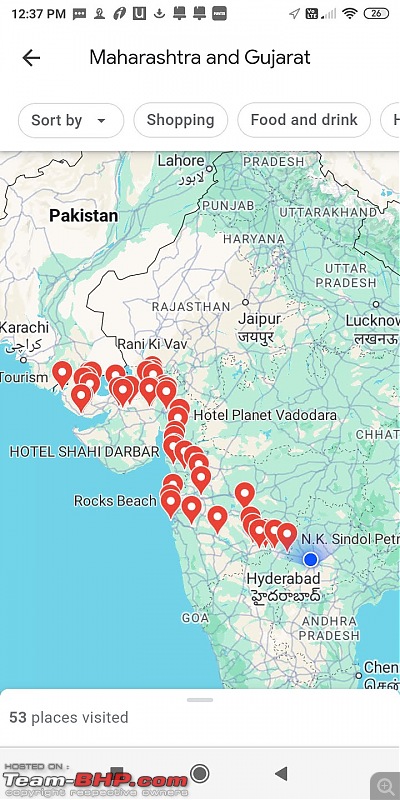 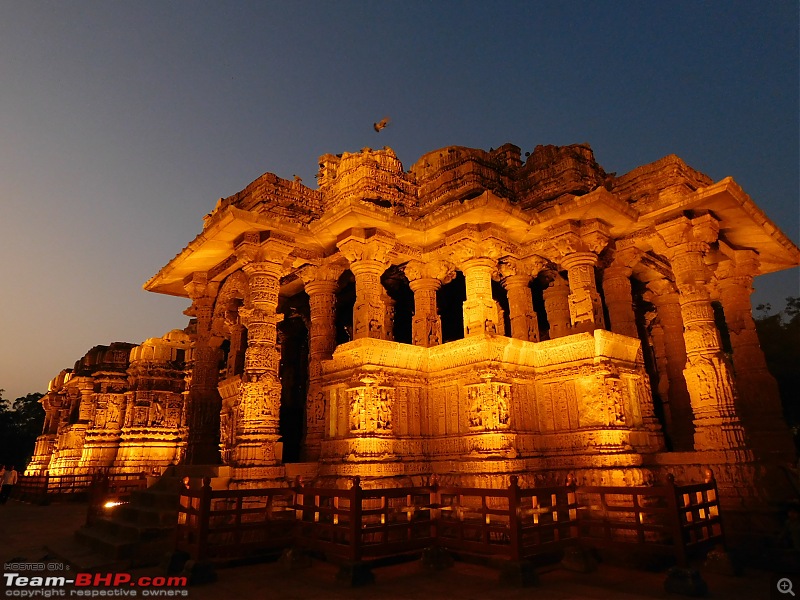 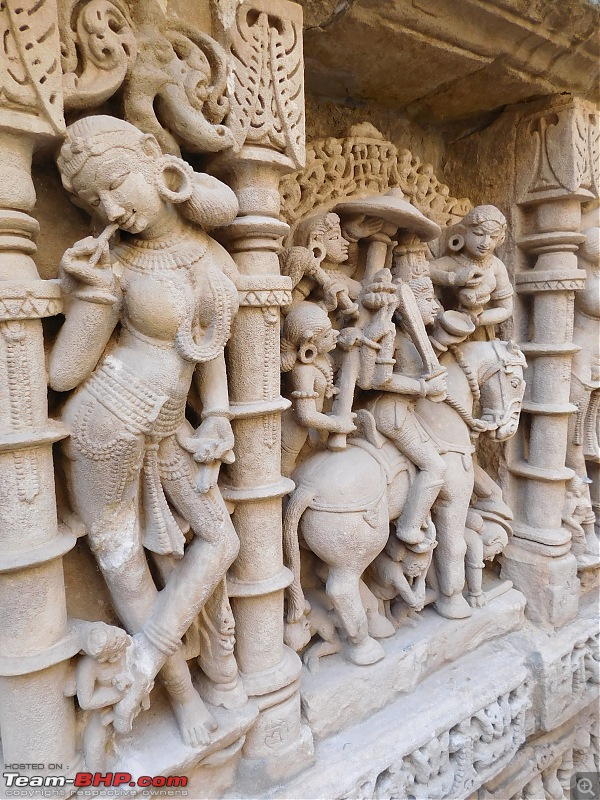 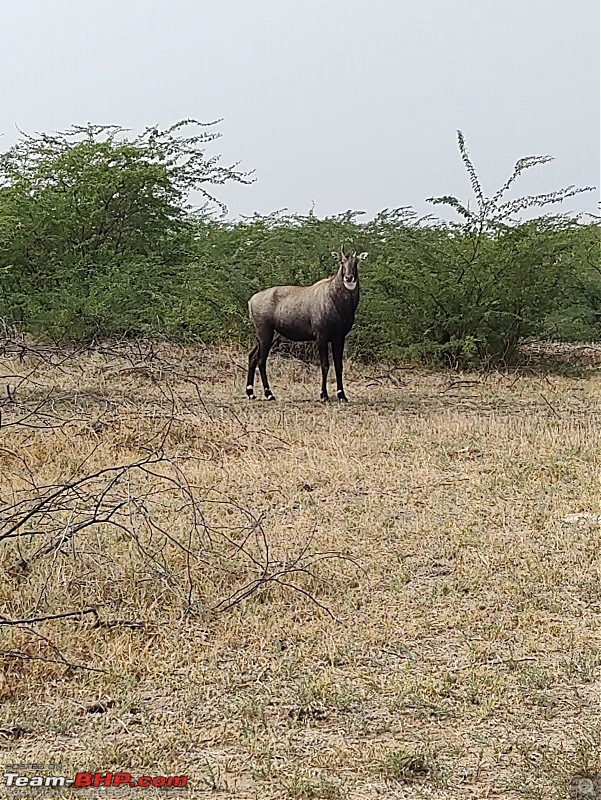 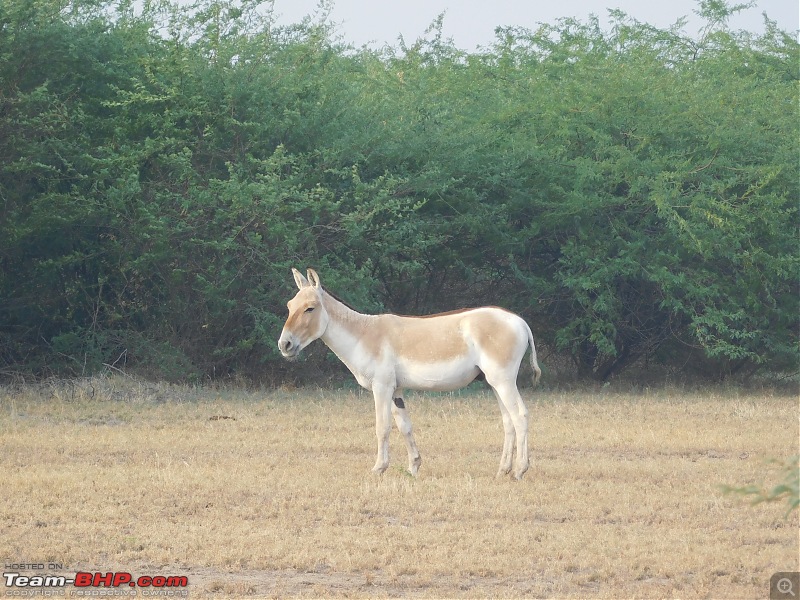 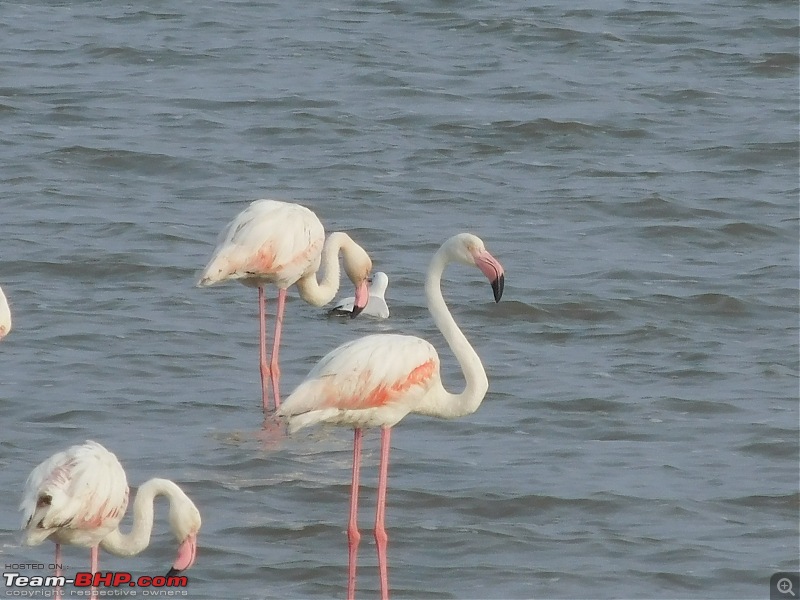 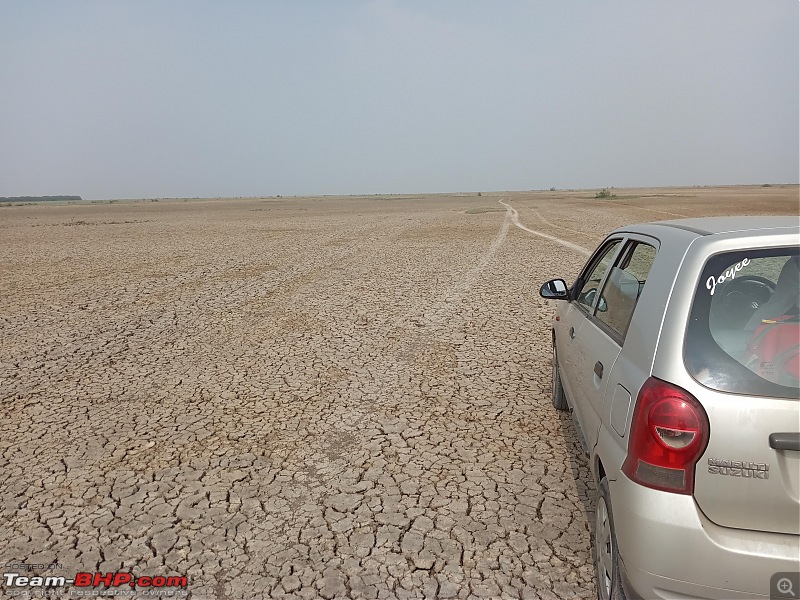 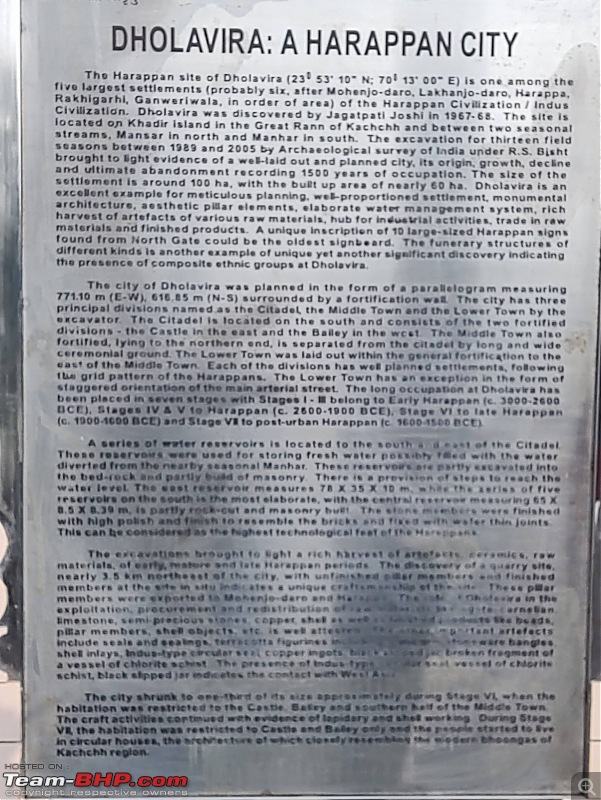 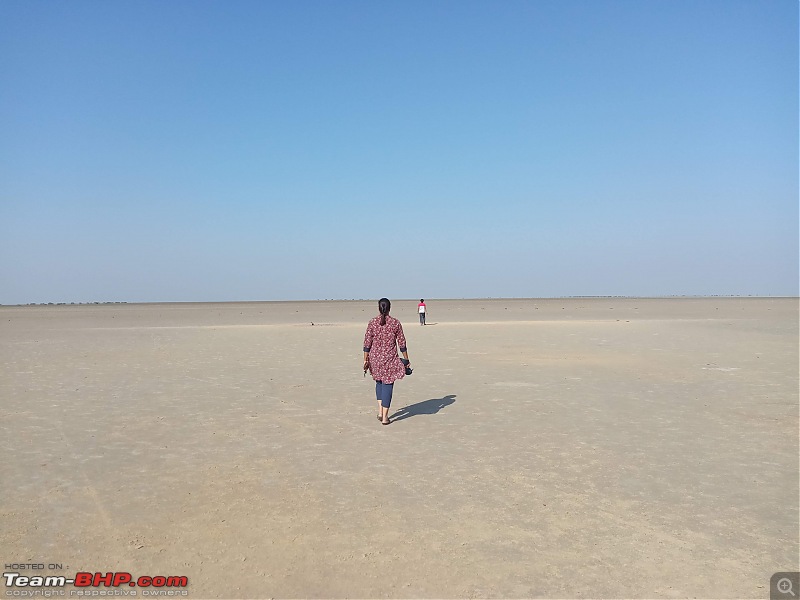 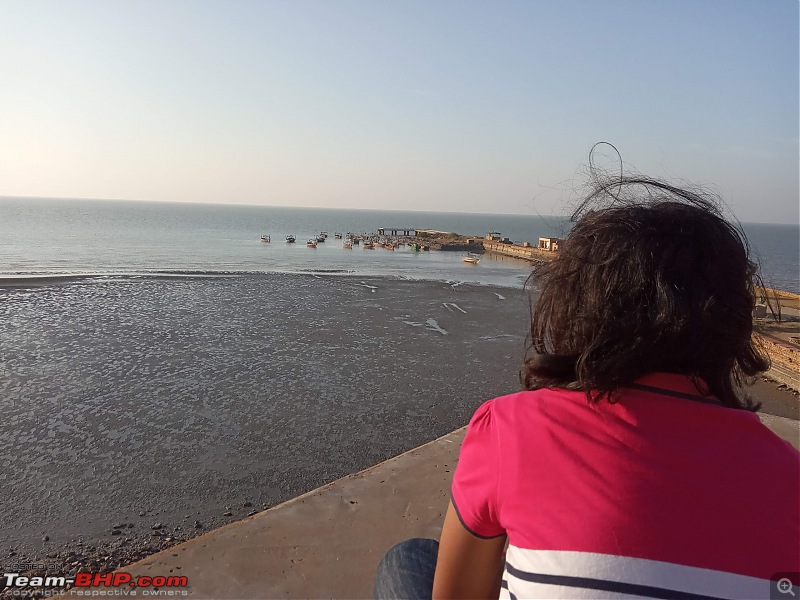 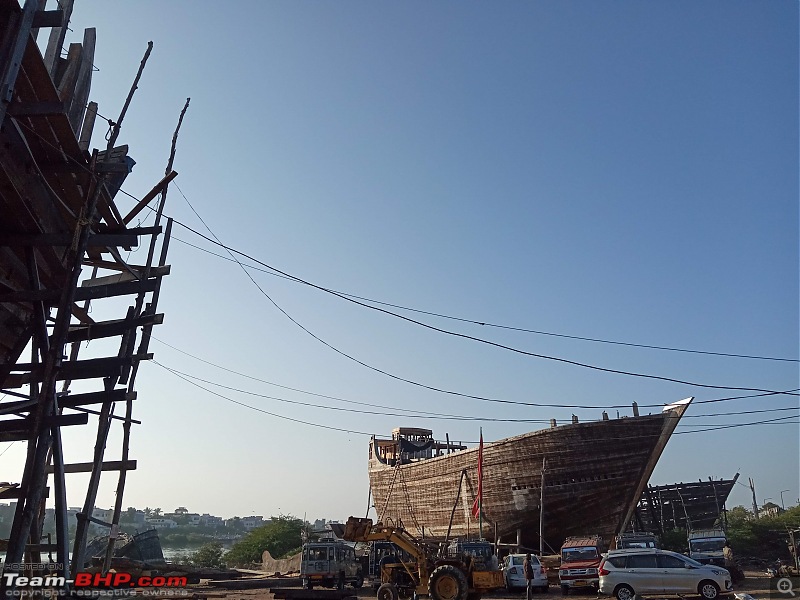 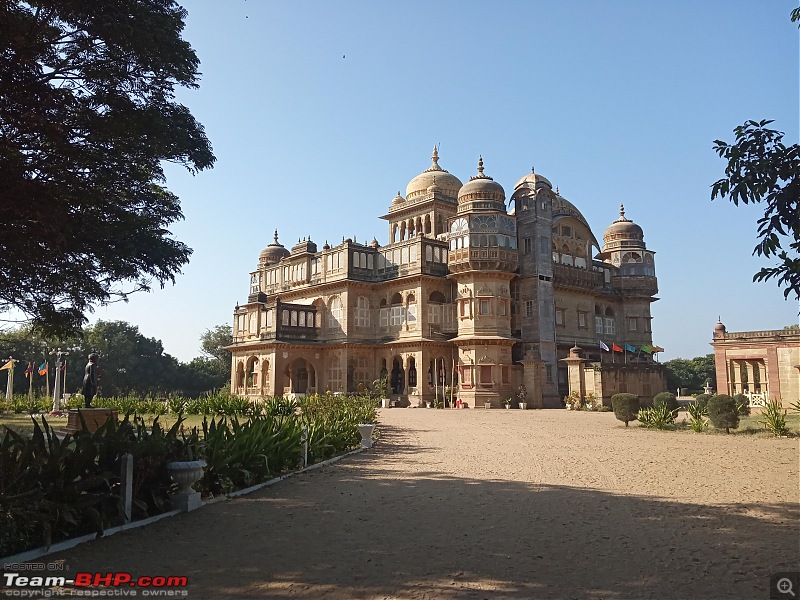 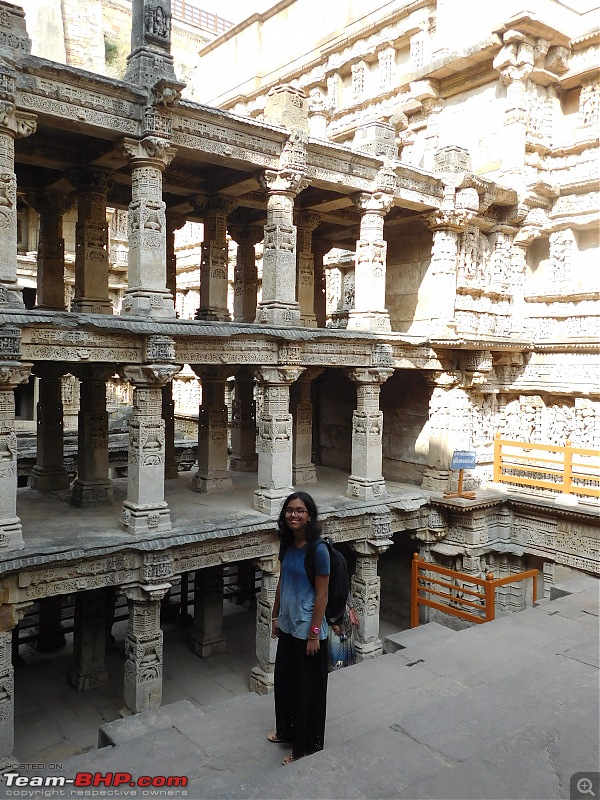 The road is calling again! Last edited by joyee : 18th January 2024 at 12:20. |
| |  (37)
Thanks (37)
Thanks
|
| The following 37 BHPians Thank joyee for this useful post: | ABHI_1512, agm, arun_josie, CentreOfGravity, DasAuto1985, Deepsp, digitalnirvana, Dr.AD, Dr.Q, drrajasaravanan, Fuldagap, GForceEnjoyer, graaja, GTO, haisaikat, hok kolorob, hothatchaway, itspatra, Kevinrevvz, Kkumar, MotorDev, mugen_pinaki27, Neversaygbye, NPV, parsh, PGNarain, PurpleTitanium, ruzbehxyz, Samfromindia, sanjayrozario, sdp1975, subie_socal, thirugata, Vishal.R, Voodooblaster, W140SKlasse, ysjoy |
| |
| | #2 |
| Newbie Join Date: Oct 2023 Location: Hyderabad
Posts: 24
Thanked: 432 Times
| re: Run to the Little Rann, Dholavira and Lakhpat; a journey back in time The PlanOn this eight-day trip, our plan was for the trio - my mom, dad and me! - to cover the fascinating region of Kutch in Gujarat. As usual, our brave little Alto K10 was going to be our ride and companion. She became part of the family around the same time I did, and these twelve years together she has driven us everywhere, to nearly all corners of India and more! This time, we were going to add Gujarat to the list of states we have driven to. The itinerary Day 1 - Hyderabad to Navsari via Samruddhi Mahamarg and Nashik Day 2 - Navsari to Modhera via Ahmedabad Day 3 - Modhera to Little Rann of Kutch via Patan Day 4 - LRoK to Dholavira Day 5 - Dholavira exploration with overnight stay at Hodka (near Dhordo) Day 6 - Lakhpat and Koteshwar via Nirona, night stay at Mandvi Day 7 - Mumbai Day 8 & 9 - Drive back with an overnight stay near Pune One fine day, my dad said, why don't we go see Dholavira? For I moment I couldn't remember what Dholavira was. Sounded like some ancient princess. Wait, isn't it that weird name, which kept beating me in history quizzes in school? Then it hit me: Dholavira, the ancient Harappan city lost in the sands of time! No wonder it kept getting the better of me in history. Don't blame me, I do feel ashamed, but hey, I haven't opened the chapter on ancient civilizations in ages! So this is how our trip started. We were all excited, and my dad happily began prepping the car, mom dived into planning our stay, while I sat in front of my open closet, like Auguste Rodin's The Thinker, with the critical question: what do I wear in Bombay, the city of fashionistas? I solved the question in time to enter the car and get started. Day 1: A grueling drive from Hyderabad to Navsari On the midnight of 28th November, we started out from Hyderabad and set out on a drive which took us through four states: Telangana, Karnataka, Maharashtra and Gujarat in a stretch of 22 hours. My mom sat in the front with dad, as Hyderabad slipped away and we sped along the highway. I lied down on the backseat and watched the moon out of my window. I do not know how it feels like to drive, but for me the moments when I am the most at peace is when I am in the car, no matter where. The roads were good throughout, and no complaints on the ride. However, 22 hours is a long time and at the end of it and I felt like a crumpled ball of paper. But I learnt something fascinating: once you enter Gujarat, you enter valley like stretches, hills, ghat-like greenery and the landscape to go with it. It all looked like terracotta in the last rays of the sun, the hills rolled away into the faraway horizon. Many resorts had opened up right there, a little way off the highway. At around 10 o clock we reached Navsari, a town in Gujarat. We stayed at the Shahi Durbar, a lovely hotel. I ate a yummy garlic naan and devoured a bowl of ice cream while two loud families let their kids loose in the dining hall. After dinner, I hit the bed and was happily dreaming in no time. Day 2: Ancient Structures, Part 1 Adalaj Stepwell We left early as dad wanted to beat the NH48 traffic which he described as hideous! After driving for a few hours we reached Ahmedabad and spotted a place by the ring road where we made our first acquaintance with theplas and dhoklas. They were fun to munch on and after some paan, we resumed our drive and reached the famous stepwell in the little town of Adalaj. This was a protected monument with green lawns stretching outwards from it. People sat on the grass and picnicked in the evening sunshine. The stepwell began on a raised platform of ordinary stone, with gorgeous, hypnotizing pillars standing on it. The architecture drew the eye to itself with the zig-zagging, floral, geometrical and many other sculptures on pleasant, khaki colored stone. The deeper you went, the more intricate the sculptures got. At its bottom was a shallow pool with jasmines floating on the surface. From here a wall dead - ended with niches, outcrops, and more sculptures adorning it. Everywhere were scenes of the Ramayana and Mahabharata, ancient epics of Hindu literature. Deities stood with their hips cocked, a slight smile on their face, and distant eyes. They all looked sassy yet had a divine aura. The musty smell only helped to take me back centuries. It was an altogether wonderful experience! Modhera Sun Temple We left Adalaj and drove on to Modhera, famous for its Sun temple. We reached the Modhera Sun Temple at around five o' clock. I would like to add here that whenever visiting a monument, the best time is before sunset (near dusk) and just when the sun is going down. The biggest advantage you get is that there won't be many people to shatter the peace, thus allowing you to admire that beautiful architecture undisturbed. Secondly, most architecture looks best in the soft light at sun set/rise, especially for photography. 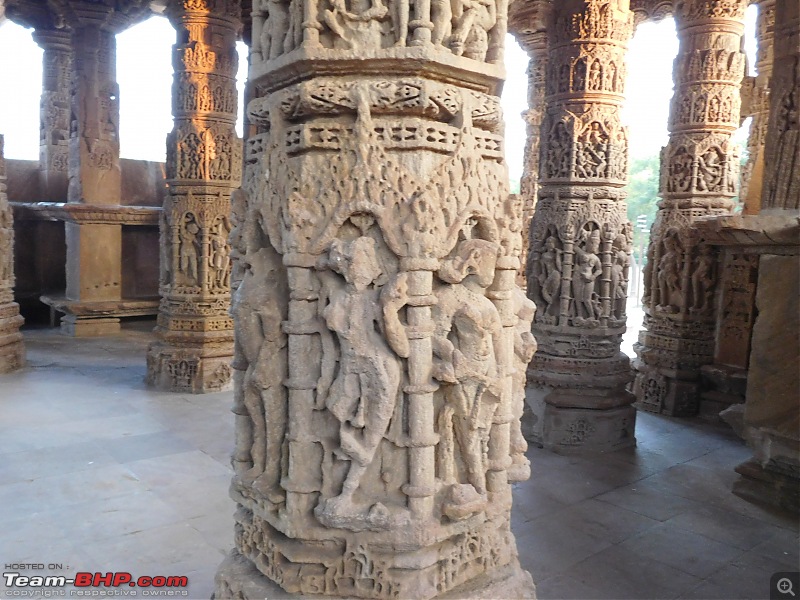 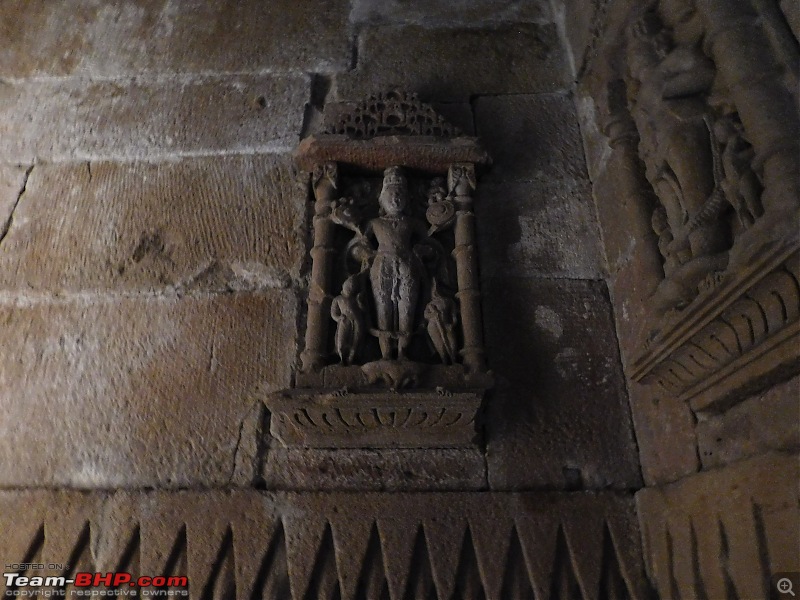 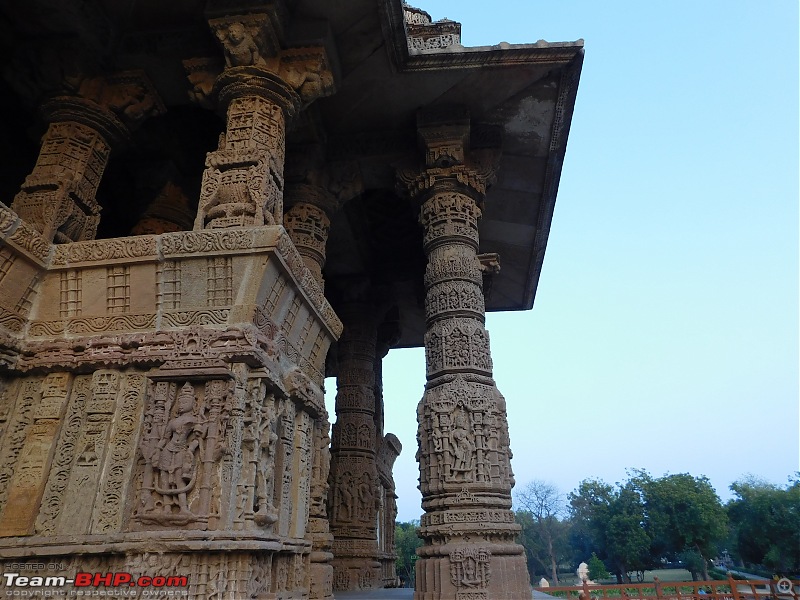 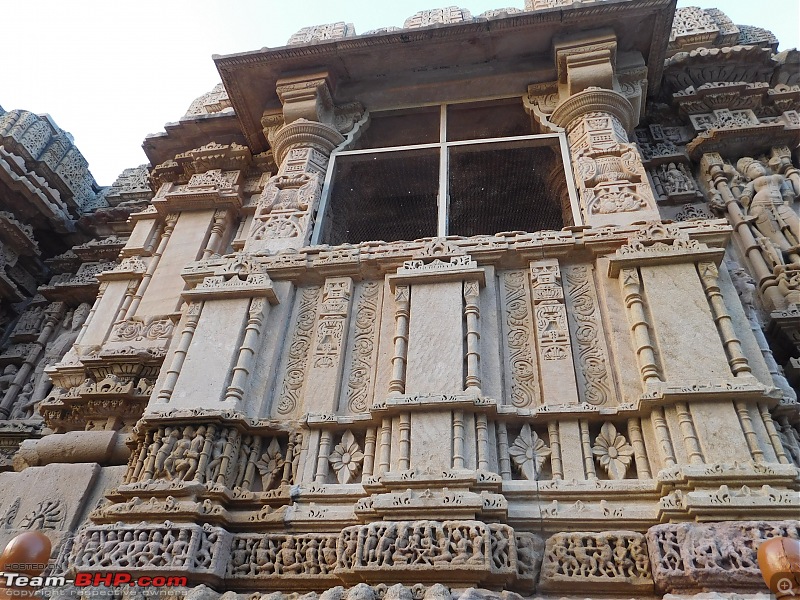 So, nearing dusk, Modhera Sun Temple looked ethereal in the play of light and shadow. It was not a single building but a couple of two structures (it could be three, but for the life of me I can't remember!), with a large pool more than 40 meters across, 15 meters wide, and about 10 meters deep. Steps led down to the center of the pool from all sides. But the most remarkable feature was that at every step a small temple, holding a Hanuman or Ganesh, graced the front and corners. Dancing naris(maidens), Gopis (Krishna's fangirls), many devs and devis (gods and goddesses) and hundreds of other deities greeted you in still motion. A helpful board said that there were about three hundred gods built into that pool! Who needs holy water when you have the entire pantheon of Hindu Gods and Godesses staring at you as you enter the pool? But of course, no one could do that since there wasn't any water anymore. And the gods were behind bars - barricaded from the tourists :P. 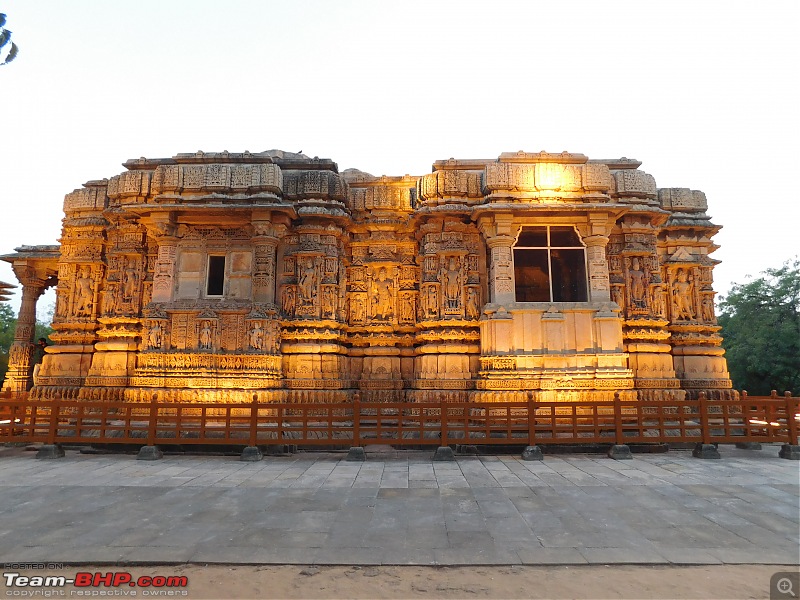 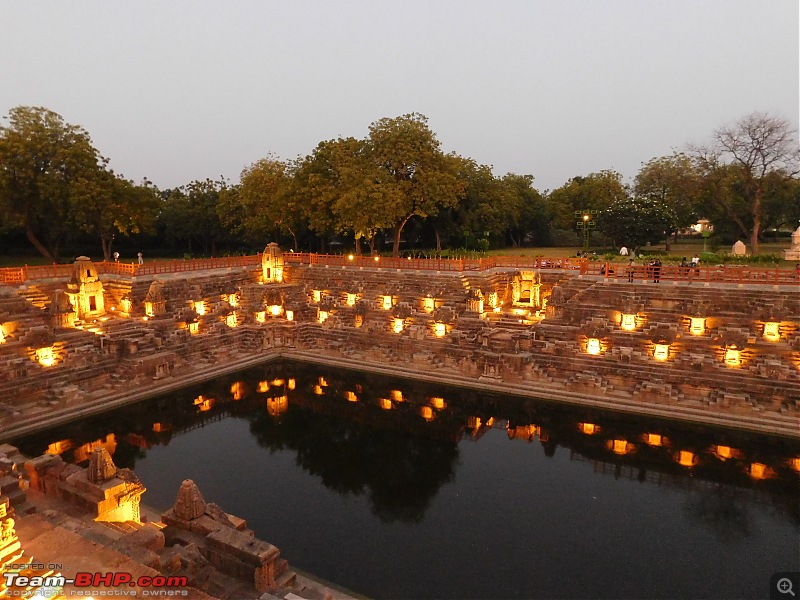 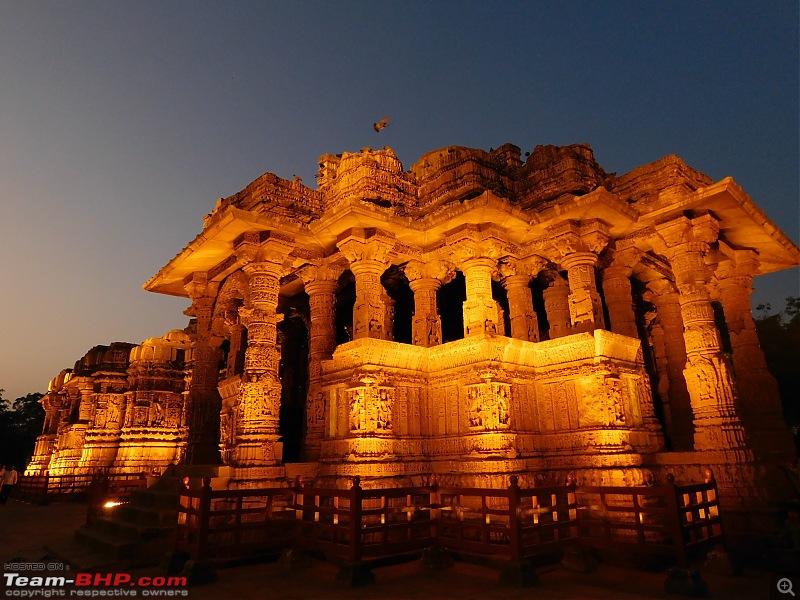 The temples were a different story altogether. It is hard to find such fine architecture in the world today. The delightful shape of the structures, the perfect balance with their surroundings, the way it catches your gaze; Using just the basics of symmetry, and an understanding of shapes and proportion, a workman of the king has used simplicity and made genius. Then you start to focus on the sculptures. Each pillar, telling a different story, takes you through worlds of yogis and forests, battlefields and palaces, cities and people. The tiered walls and ceiling showed scenes of the Ramayana and Mahabharat. If I had a day or two, and some knowledge of these epics, I could easily get lost in these pictures of the past. The sun had turned in after six, and so we waited for a light and sound show at around half past seven. But before that, the whole place lit up with pleasant yellow lights hidden under niches and steps, elevating the old, detached feel. Many people settled down to watch the show after some time. It was completely dark, and a projector from behind lit one of the structures and the pool in front of it. I didn't think much of the commentary, but the light, and the psychedelic colors were done very well. I want to say that if you come to Gujarat, Modhera is a must visit - the upkeep is good, there is also a museum (that closed at five, so we weren't able to check it out), and the place itself is an absolute gem. I loved the Modhera Sun temple. 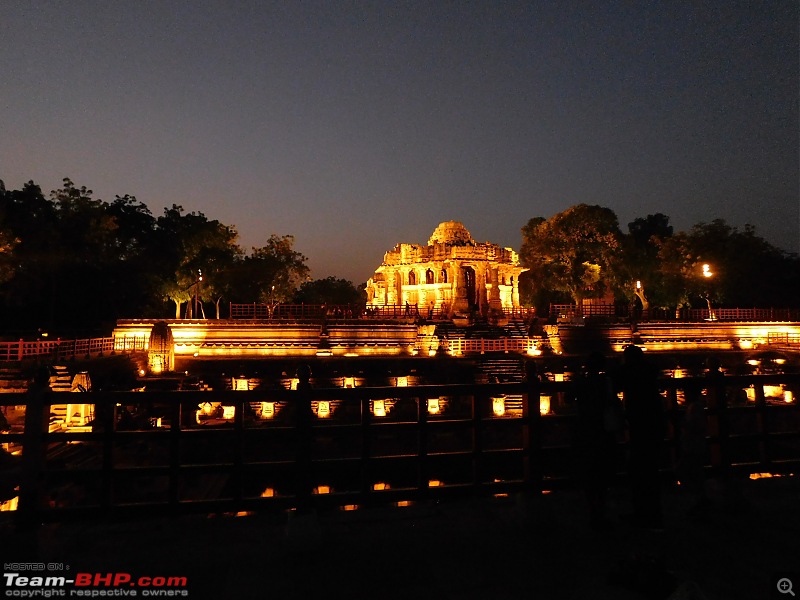 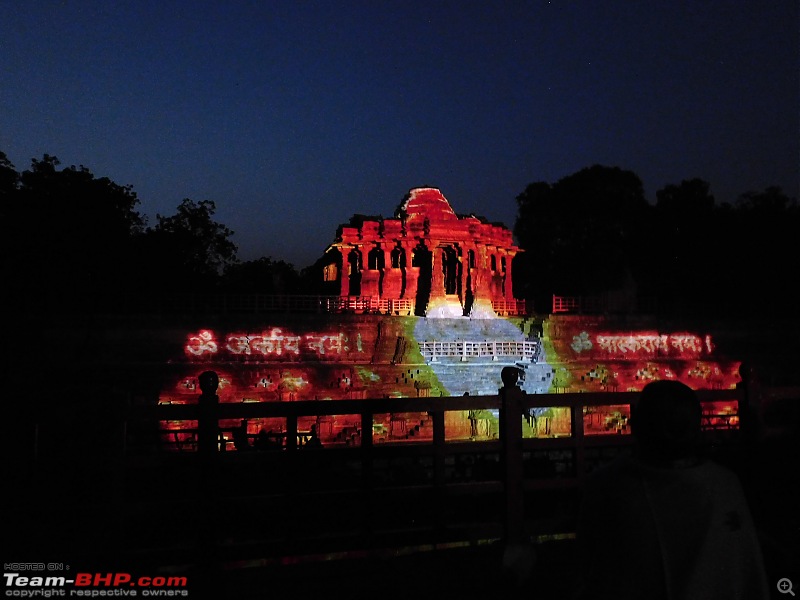 the mesmerizing laser show We checked into a resort close to the temple and boy, was it huge! You drive a long way down from the temple parking lot (a gravel path breaks away from there) and you come to the Modhera Sunrise Resort. There was a lot of space, many gardens, and it would have been a good place to spend a couple of days here. It was very dark, after following the path for a while we reached the reception. While the adults sealed the deal, I strolled around the property. In the garden, there was a little artificial pond. There were two benches and a small bridge. The water was dark, and frogs jumped in and out of the green stuff. I was just about to step onto the bridge when I discovered two big, life-sized swan statues standing on either side below me. In the moonlight, their bright white stone feathers glowed in contrast to the dark green. I was admiring them when lo and behold, one statue thrust its head out, opened its beak wide as a crocodile, and let out a high, musical honk. I was frozen in my place, when the so-called statues eyed me from afar. Then, losing interest one started giving the other a neck message with its beak. Relieved, I left the eerie pond with the question: can swans attack a person? We spent the night in a Swiss tent. They also had bhungas, circular mud huts, common in rural Gujarat only a few decades back. But since we were just spending the night, we chose the more economical option. There was a big dining hall made entirely out of bamboo - tables, chairs, walls - and there was some more bamboo growing outside, just in case! The food was yummy. They had two thali options: Punjabi thali and Kathiawadi thali. Kathiawadi is one of the traditional cuisines of Gujarat. After a sumptuous dinner, I slept heavily, dreaming of two big swans wading in my chicken gravy. 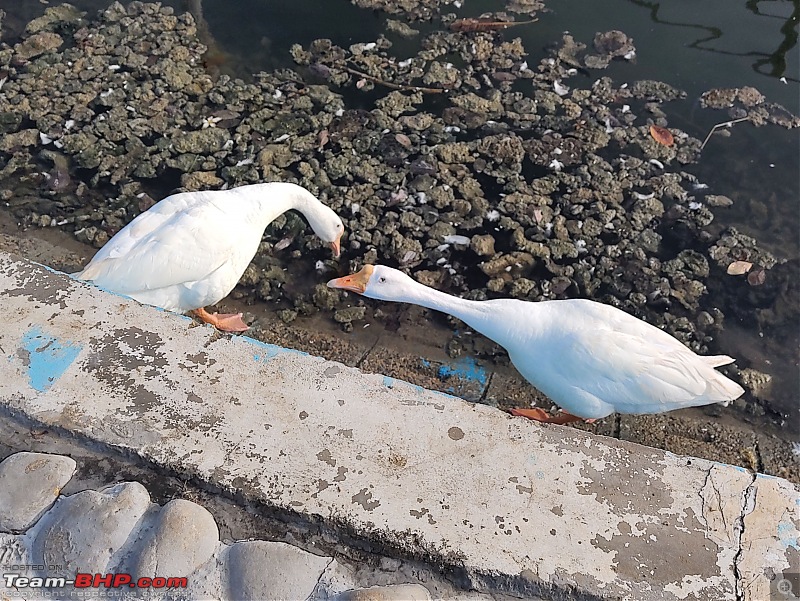 quack quack! 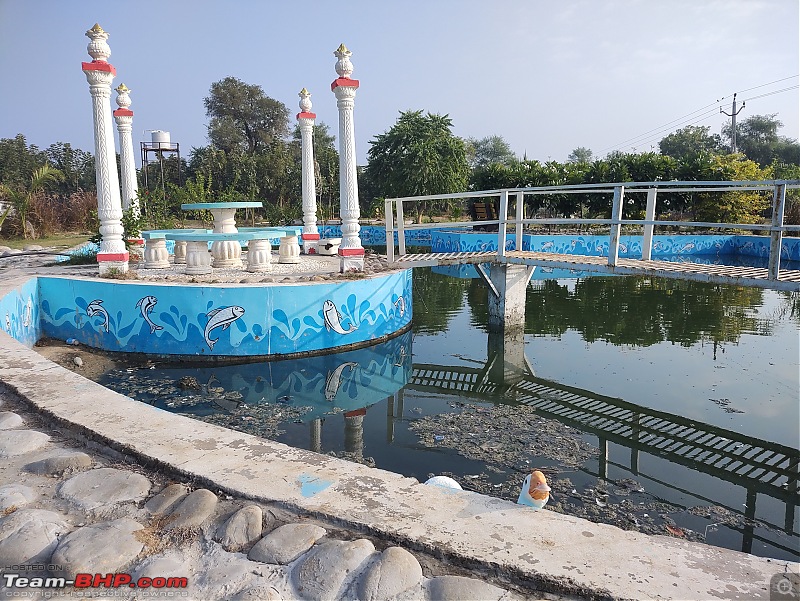 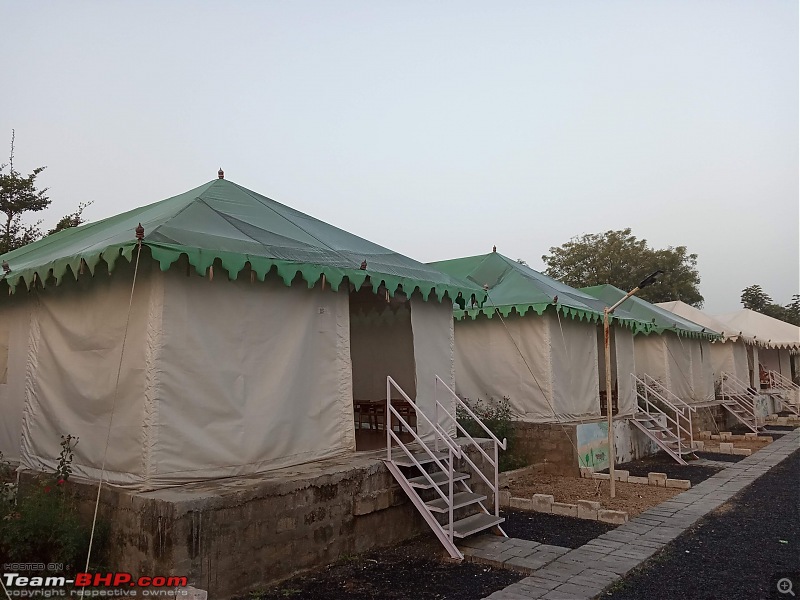 The tents at the Modhera resort Day 3: Ancient Structures, Part 2 The next ancient structure on our trip was the Rani ki Vav. An iconic stepwell, and a three century younger counterpart of the one in Adalaj by about three centuries. A drive of a few hours and we reached the city of Patan, where the iconic structure is located. No doubt about the iconic part, since a billion Indians pass around the hundred rupee note every day. And guess what is at the back of this highly exchanged piece of paper? You're right - the Rani Ki Vav. And today I was going to see it right up close. Rani ki Vav is huge. More than fit for a queen, I must say. The ASI's information board told me that Rani ki Vav had been completely buried under the earth except for a part of the well shaft, making it look like a huge pit to the two foreign travelers who found it in the 1850's. The Saraswati, a mythical river which is still shrouded with mystery, changed its course after an earthquake disrupted the whole river basin. It is believed that this great river flowed over the Rani Ki Vav, flooding it and then replacing it with sand and the surrounding earth. Several centuries and a major excavation later, the temple of Rani ki Vav began looking like its old glorious self, although a bit stilted and cracking. 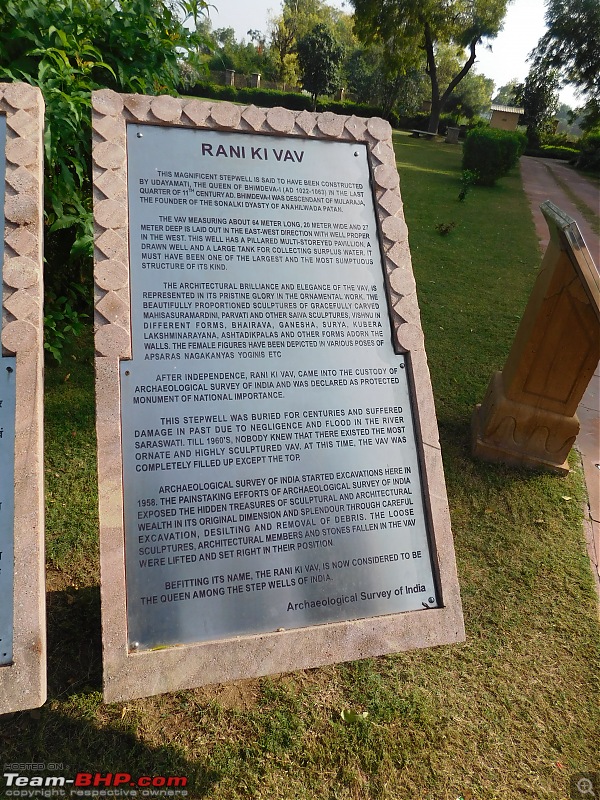 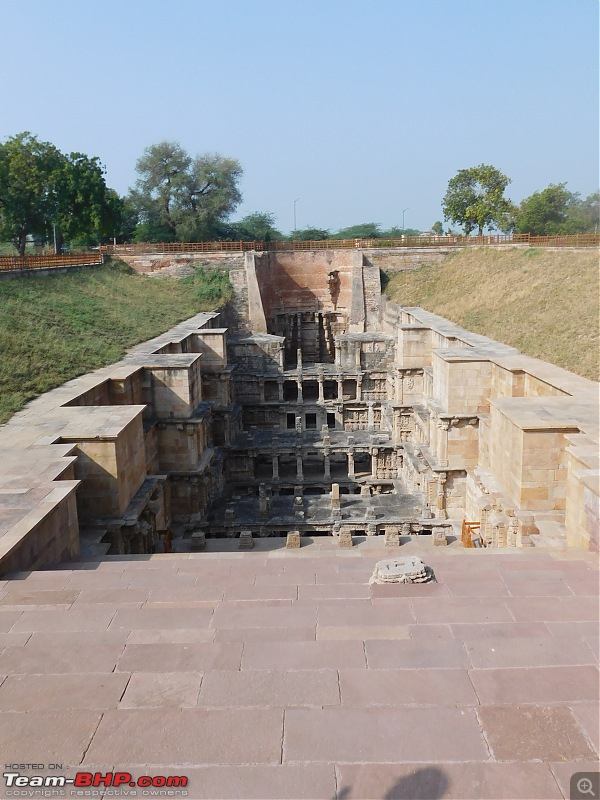 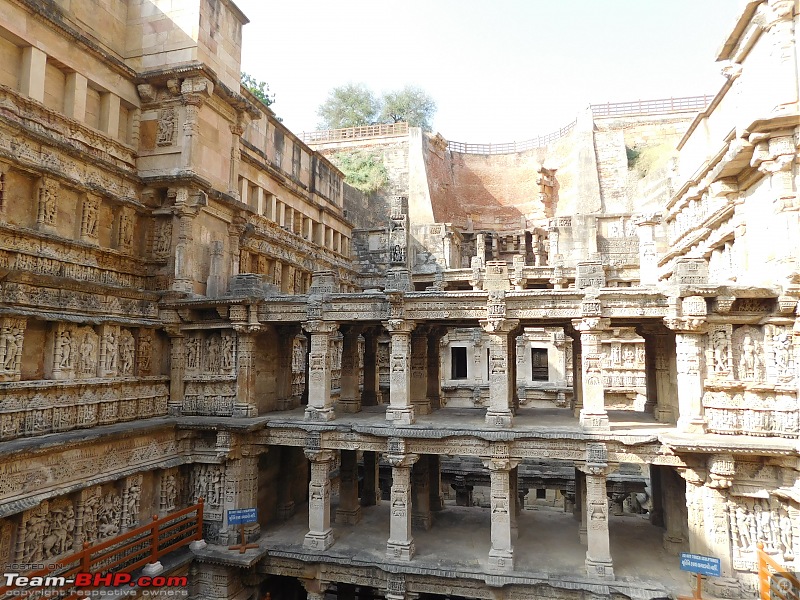 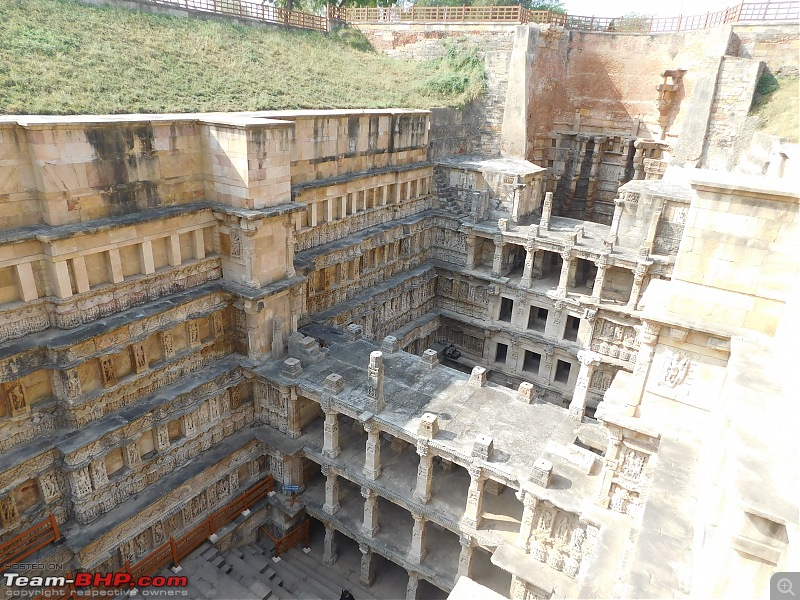 It is remarkable how such a delicate, fine-looking structure stood the force of a river, assuming that is true, and survived being completely swamped. Stand at the top of the bump where the well begins, and a whole 90 meters of age, experience, and beauty lies in the crater before you. No one knew steps could be so intricate, pillars and roofs so delicate, and walls so expressive. As the well grew deeper, more pillars appeared, with more layers of roofs. It reminded me of a several dominos, balancing and supporting each other, and if one falls out the rest fall too. We saw hipshot deities, scenes of monkeys, lions, deer, trees, geometrical patterns, battlefields, musicians, Gopis, and a whole new world. Niches held sculptures like inbuilt temples. Like good literature, these carvings have the ability to teleport you to a different world. Each sculpture has a personality. Each face has an expression, be it peace, madness, anger, sorrow - that stone which someone struck with a chip and hammer nine hundred years ago still retains its magic. Geometrical patterns soothed the eyes. Detached expressions on the stone faces pretty much hypnotized me. This temple, which held water in this parched land, is a symbol of persistence and harmony with nature. 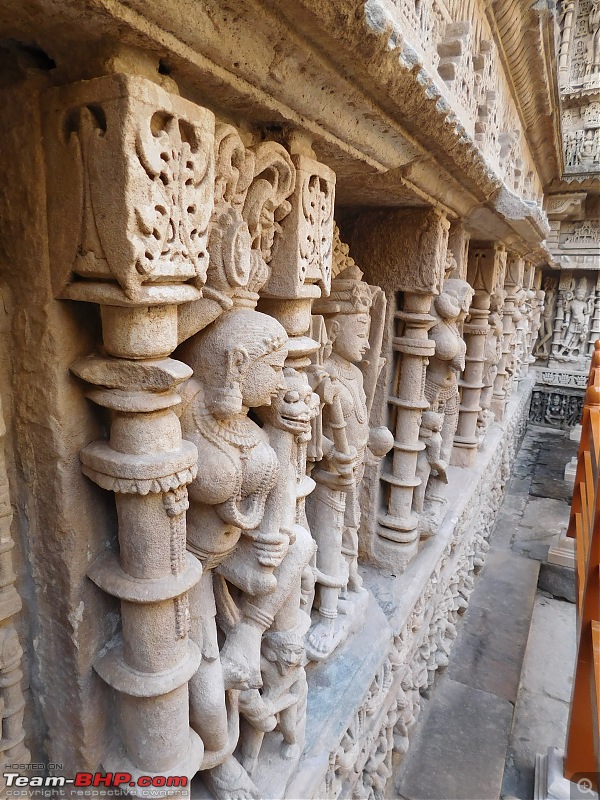 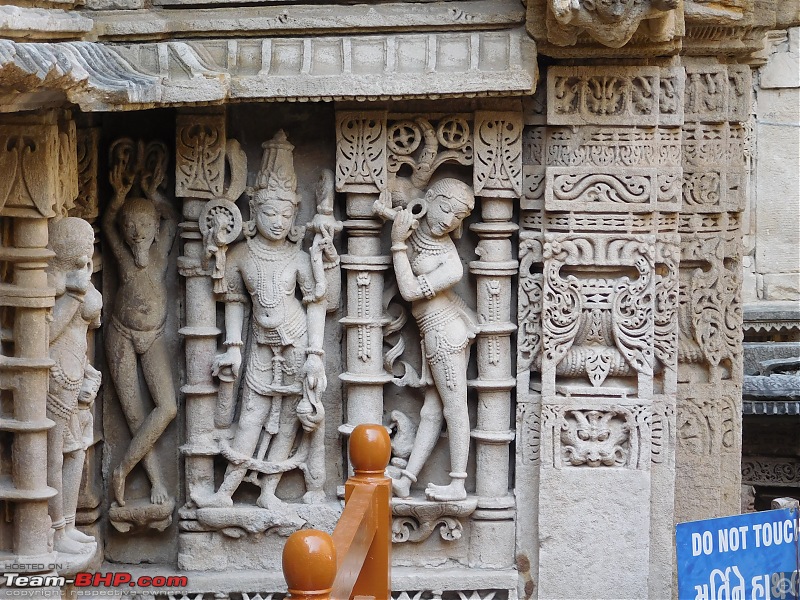 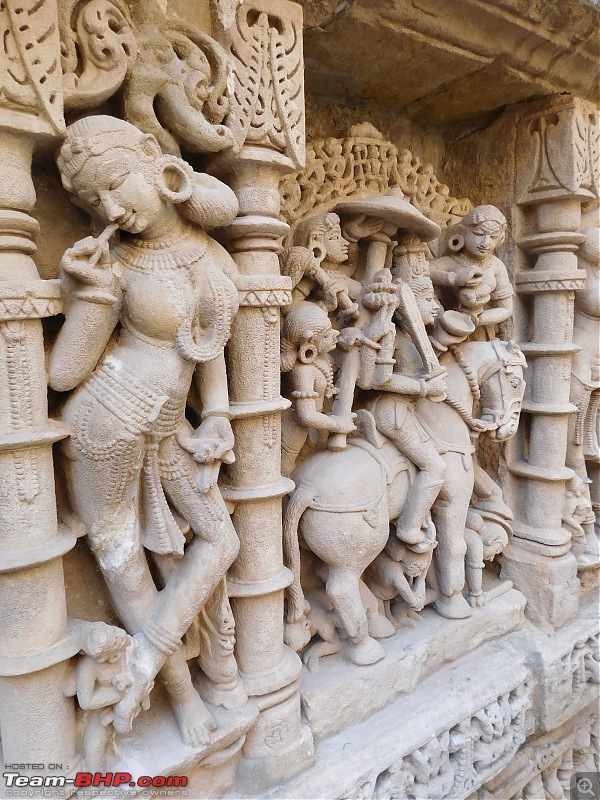 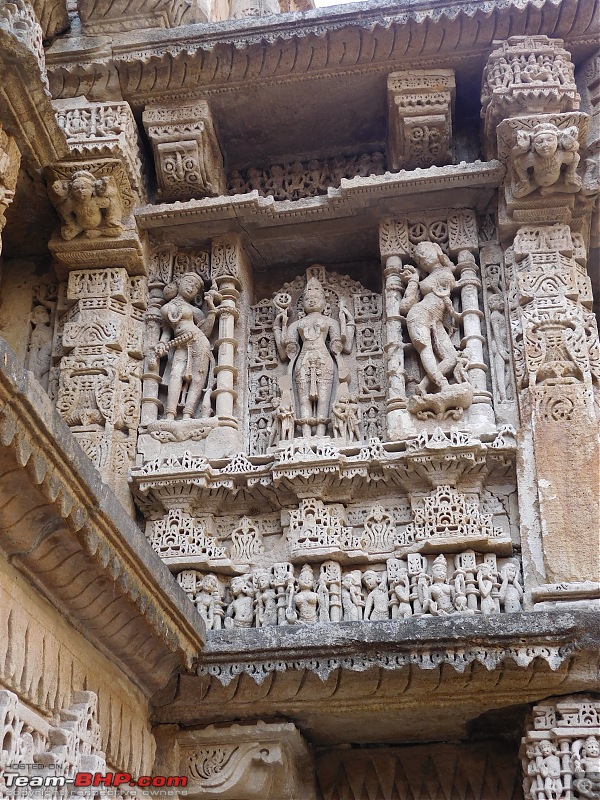 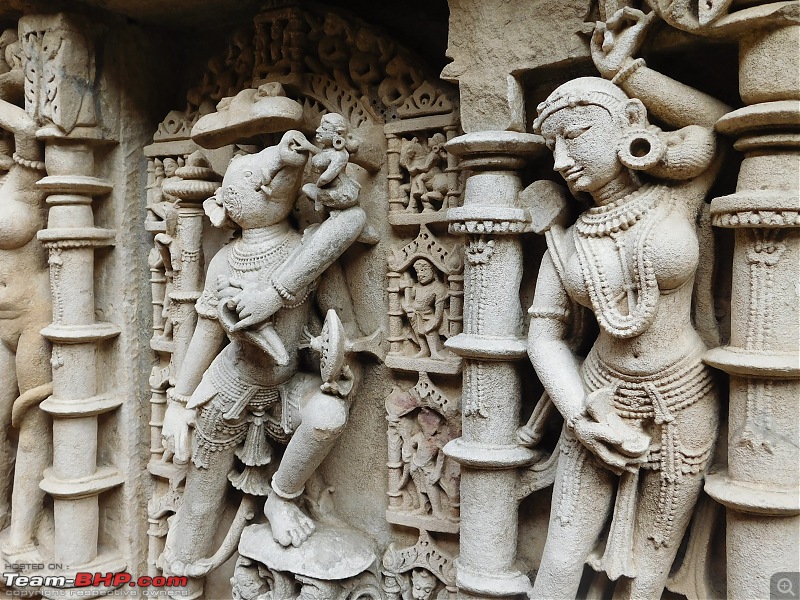 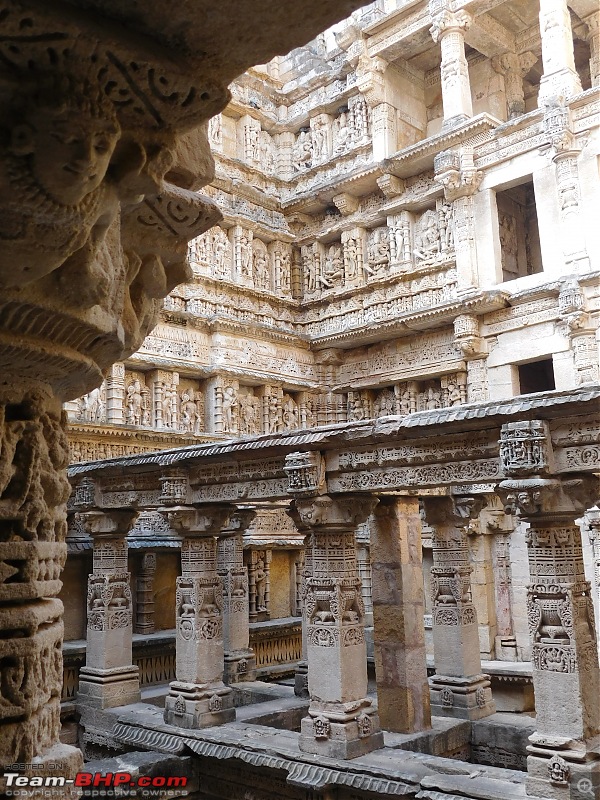 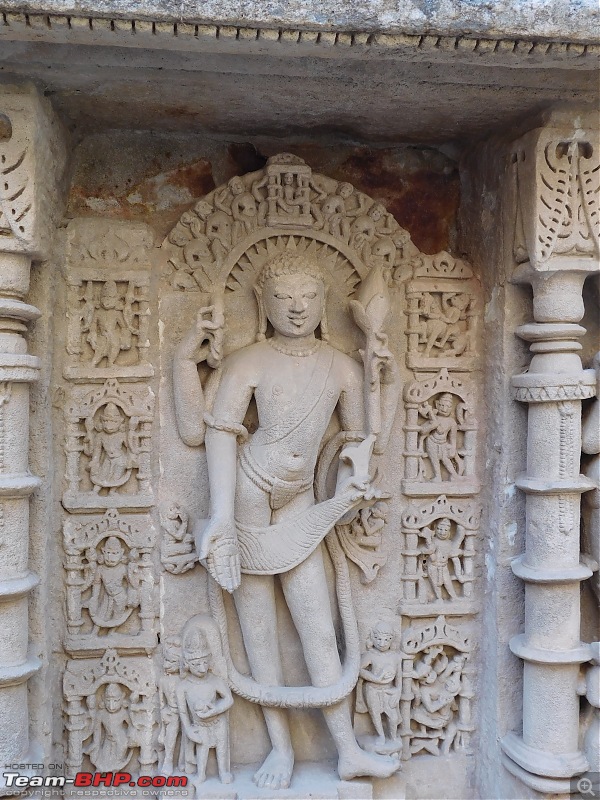 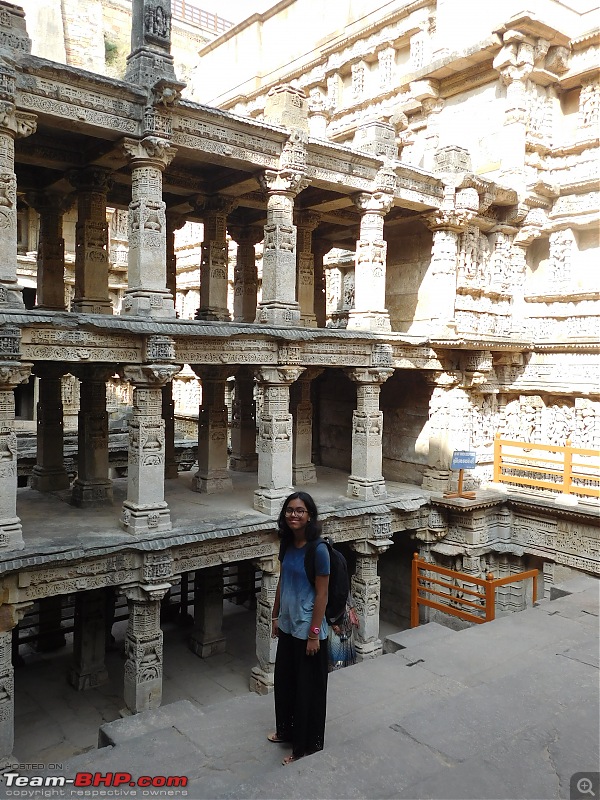 There is also a lovely garden surrounding the well. It is very well kept it is a good place to spend time just relaxing or picnicking. It had many big trees to sit under and the grass was soft and nice to relax on. 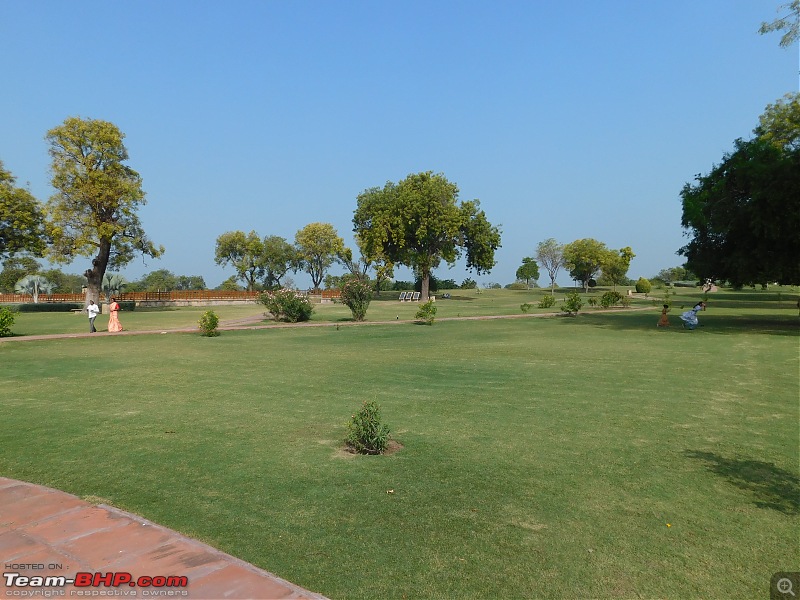 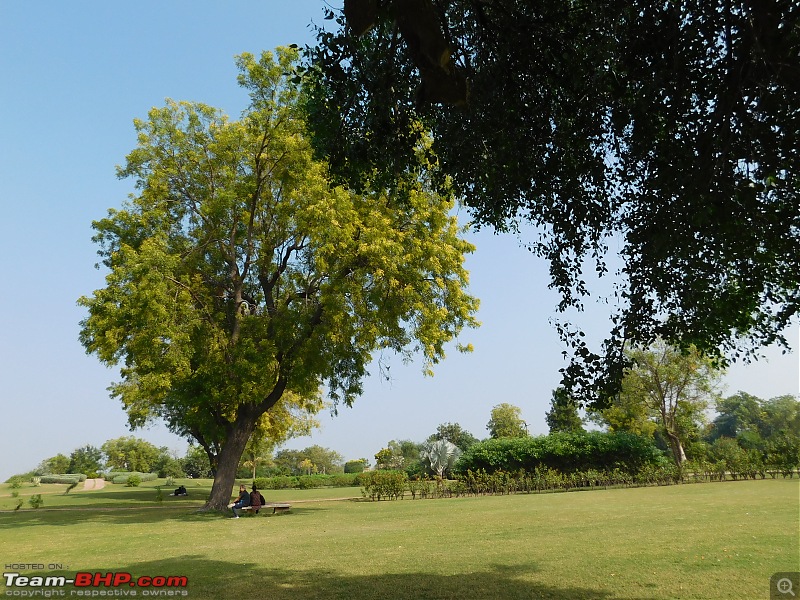 We also peeked into a local museum, which had small broken sculptures of the type found at the Rani ki Vav. There were exhibits of single ikat and double ikat cloth, which I will come to now. Patan Patola, the age-old tradition of weaving What is the most painstaking art form you can think of? The first thing which probably came to your mind is stone-carving. Even I felt the same until I learnt of the Patan Patola, a form of weaving. Arguably one of the most mathematical and precise forms of art, this weaving tradition finds its origin in Patan, more than 850 years ago. Me and my mom went into the Patan Patola Heritage museum, as my dad wanted to stay out. He was not happy with the parking. Go figure! Ok, now what is Patola? Most cloth nowadays is either painted on after it is woven or embroidered with designs. This is an easy way to color cloth, but it does not last nearly as long as Patola cloth does, just like it is not a fraction as difficult it is to weave. Get this: every design, every little distance between a flower or animal motif, every time a thread crosses another is calculated and planned before anyone even touches the silk fiber. According to the measurements, each and every thread of this silk is dyed according to its place in the whole six yards of a sari. Then the weaver takes all the threads and weaves them so that each of them correspond with each other to form perfect, intricate pictures of geometric design, flora and fauna. It took a while for that to sink in for me. At the first room of the pleasantly decorated museum stood about half a dozen aisles. On the first hung pictures of several celebrities, richie-riches, kids of richie riches and Prime ministers who wore the Patola saris, shawls, or cloth. On the second wall hung pictures and certificates of the last of the families who keep the Patola tradition alive: one of the relatives acting as a guide explained. Only one or two families continue producing that world famous cloth, which at one point every wealthy woman wanted. I am surprised that the British didn't stamp out yet another golden tradition like they did to so many other flourishing industries India once had. Black and white photos of people receiving awards, young children, the weavers-to-be and social families the family took up a large space on the wall. The next few aisles held exhibits of single ikat and double ikat weaves. My understanding is that the double ikat weave is the one used in Patola saris - and the single ikat is a simpler and a less expensive weave. There were tables between the aisles and small pieces of fabric were kept in display. The first two ancient patolas made in different countries - alongside ones made in India. Some exhibits dated back to the 1200's. Indonesia, Cambodia, China, Japan, Burma and a few other*countries had attempted to recreate this precise art of Patola weaving. But compared to our desis, the designs were not perfect - a odd thread here and a out of place one here despite measuring everything to perfection. Most of their designs were a bit shaky but no doubt, they were very beautiful for their unique style. ''A sari can take up to three years to make,'' our guide told us. Patola saris were usually made from silk, a slippery, fine fiber which made weaving even more difficult. These are the steps to making a traditional Patola sari: i) Take the measurements. After mapping out the color scheme and designs of a sari, plan the measurements of the parts of thread to be dyed. ii) Dye the silk fiber. Dyes are made from organic stuff like turmeric for yellow, Redstone for red, Multani for pink, etc. so the colors don't fade away for several centuries. iii) Weave the dyed thread. It takes the skill of many generations to get each design perfect. iv)After the weaving is completed, the craftsmen adjust the fabric. Threads which are a little out of place are dealt with needles. Doing this alone can take three weeks. Patola saris are legendary for the high prices people pay for them. Saris made with such effort, hand woven, naturally dyed, can cost up to three lakhs INR. That makes thirty thousand paperbacked Shakespeare novels! I imagined a sari asking me, ''To be or not to be?''! A couple of exhibits were of silk Patola shawls up for sale. He showed us some of them. The first thing that struck me when I saw the Patola fabric was that it was so elegant. Normally I used to think that silk was a little gaudy and looked too heavy. But most high end fashion is very simple, yet classy. That is exactly what the Patola Saris are. It has the lovely texture of silk and looked...inexplicably delightful. They cost from 12000rs to 1 lakh. There was another exhibit, a full sari hung as a tapestry in a glass case. It was full of warm and cool colors - oranges, magentas, cobalt blues, reds, greens - all combined to make a beautiful piece of art. An elderly gentleman with a kind face came up to us and explained to us in English that he, along with a team of three other people, had woven this sari together. It had taken three and a half years to complete -and he showed his and the others' names woven on the left side of the sari - Mr. Salvi. He explained the process to us for a while after which we bade him good bye. There was also an upstairs to the place. This floor was dedicated to paper cutting, an absolutely enthralling form of paper art. Another gentleman was making one of the most beautiful depiction if Ganesha I have seen. He was cutting out tiny pieces of paper from the middle of an A4 sheet with a little blade, so that the cut outs formed an intricate image of Ganesha. It formed a net like impression. Amazing! Unfortunately, we had to leave for the little Rann of Kutch, and I couldn't spend as much time at the museum as I wanted to. We had a lovely drive. On the way we stopped at a traditional Kathiawadi sweet shop and had Dhoklas, Phaphras, jalebis, parathas, and some yummy Amul yogurt. They were made at home in Gujarat, so they tasted all the better! As we got closer and finally entered the district of Kutch, the land was drier and thorn hedges grew in some spots. The scenery changed to a rough kind of beauty. 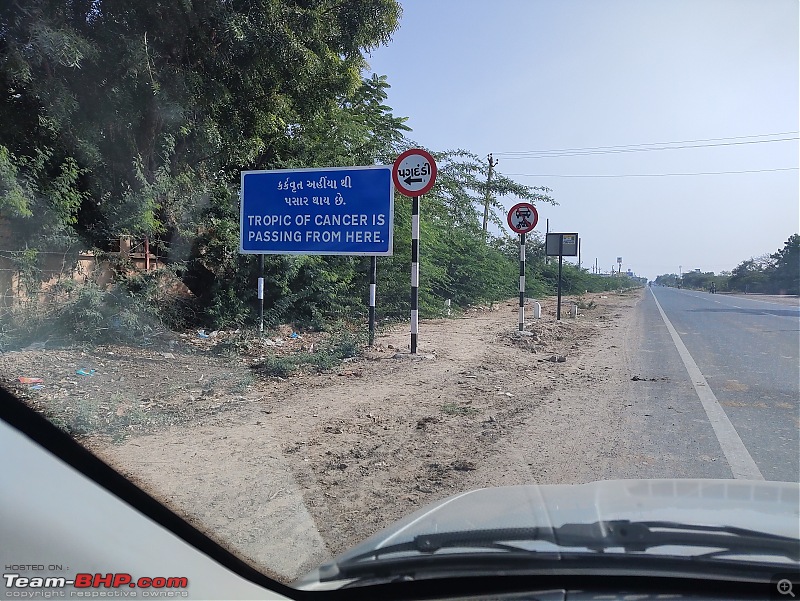 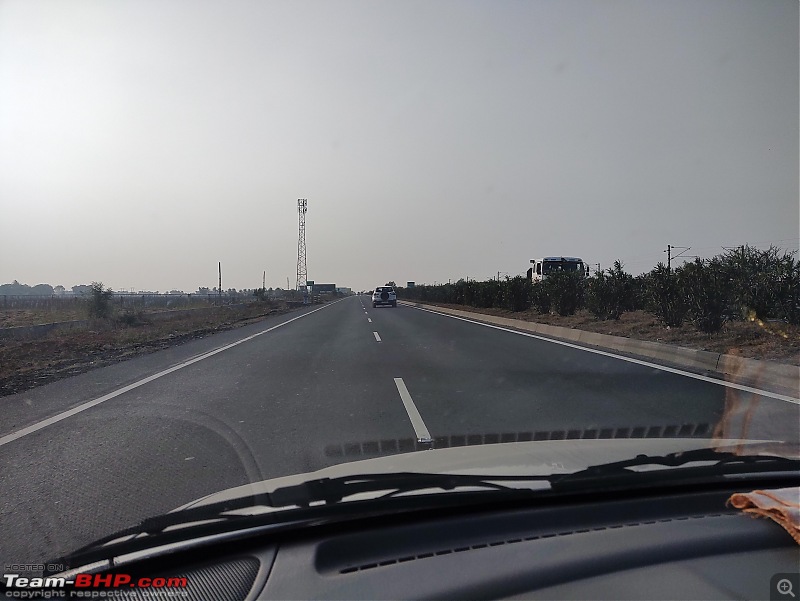 the super smooth roads of Gujarat The next day saw an unforgettable adventure, so stay tuned! Last edited by joyee : 7th March 2024 at 21:31. |
| |  (28)
Thanks (28)
Thanks
|
| The following 28 BHPians Thank joyee for this useful post: | ABHI_1512, agm, arun_josie, CEF_Beasts, CentreOfGravity, creative420, digitalnirvana, Dr.AD, GForceEnjoyer, GTO, haisaikat, hothatchaway, Kkumar, MotorDev, mugen_pinaki27, mystiikmonk, Neel70, Neversaygbye, parsh, PGNarain, PurpleTitanium, Samfromindia, sanjayrozario, thirugata, vishal.jayakuma, Vishal.R, Voodooblaster, W.S.T.R. |
| | #3 |
| Newbie Join Date: Oct 2023 Location: Hyderabad
Posts: 24
Thanked: 432 Times
| re: Run to the Little Rann, Dholavira and Lakhpat; a journey back in time Day 3 continued - Patan to the Little Rann of Kutch The Little Rann of Kutch - a brief sketch The Rann of Kutch, a dry, semi-arid geographical phenomena occupies around 26,000 square kilometers. It is a part-time salt marsh and a part time desert. There is a Great Rann and a Little Rann of Kutch, making up the Rann. Great Rann of Kutch (larger than the Little one, hence the superior name) with the Thar Desert to the north and the low, hilly area which we passed entering the Kutch to the south. The Indus River Delta lies to the west in southern Pakistan. Rann means 'desert' in Gujarati. The temperature averages from 44 degrees Celsius and can go up to 50 degrees at the height of summer. The Rann is well known for its Wild Ass (Wild Asiatic Donkey) sanctuary. (source - Wikipedia) The red sun started heading for the horizon into the desert as our little Alto sped along the freshly tarred road. The earth stretched out from either side with its khaki blanket, with the scrub bushes sprouting like lint on well-worn cloth. We were in the Little Rann of Kutch! At around five we reached the Eco Tour camp. After searching for a bit in the outback type landscape, we came to a clearing with four circular mud huts lined one after the other inside a fenced area. There was a small open area inside the compound and a safari jeep stood in the middle. Two little boys were playing a game of gilli danda. The circular huts are called bhungas and are a prominent part of rural Gujarat. Now, whenever you come to travel in this state, you'll have a gazillion options with Bhungas. Don't be fooled by 'authentic Kutchi living' - you'll find that most hotels/homestays will have these, while only a few people out there call these pretty little things their homes! A man in his forties greeted us at the steps of one of the Bhungas. He had keen eyes and was wearing a camouflage shirt. He introduced himself as Mr. Dhamecha, our host. He requested us to make ourselves comfortable while he called for a kettle of tea to be brewed. Let me help you picture the Bhunga. It did not look like something you would find in a resort at all and appeared completely natural, fitting in with its surroundings. They were all a were a dusty yellow, with thatched roofs. Simple Worli designs were painted on the wall. The door was old-fashioned, with an old-style lock and had metal bolts on the wooden frame. Little flowers were outlined on the front. It was even prettier inside than it was outside. The walls were made of brown mud, with colorful lines and dots painted in contrast. The affect was very pleasing, with the windows having rustic aesthetic to them. It felt nice, because I didn't have four walls closing me in; just one, and that too the kind which I could dig out with my fingers!! The camp was on one side of the road. On the other side was the vast emptiness of the rann. We went out after tea to check it out. Do you know that feeling when you're in such a place, it really moves you. Such a vast space, with the occasional twitter in the bushes. The big dome of the evening sky, with the mix of lavender, yellow, pink, blue in the corner of sky when the sun has just set. In the distance were small hills of some white substance. A tiny stream cut through cracked, mushy ground. Many white birds called in the other end of the stream. The sound of birds, and the water, subdued ones mind to just remain still and absorb the quiet. In the evening, after having spent some time in the outback, my parents urged me to play with the two kids, our host's son and his friend. They were now playing pitthu. Is it just mine or do all parents want you to do stuff where you will certainly feel awkward? When I said no, I will be weird, anyways I am too shy, let it be and many others on those lines, my parents had had a sudden whim of playing with the boys themselves. I was left alone on the veranda feeling uncomfortable. Effects of being a complete introvert! Eventually I pushed myself to join them. Pitthu, for those who don't know what it is, is a game which requires four players or more. There are two teams and between them is a small stone tower. The teams of two or more people stand at a distance of about ten yards and the object of the game is to throw the ball back and forth until one of the two teams breaks the stone tower. The other team then scrambles to get the ball and hurl it at the other team before they manage to rearrange the stones. If the player holding the ball doesn't hit the other team before the tower if up again, they get a point. If you are hit, you're out. My parents formed a team and the kids formed the other. I felt a little nervous at first because my parents gave me malicious grins. But my teammates were seasoned players and I managed to lumber through the game without a volleyball being hurled at my face. After that thankfully short game, we sat down with Mr. Dhamecha for another cup of tea. We found out that he was a photographer and he gave us a photo album of the beautiful Rann of Kutch. There were pictures of the beautiful, docile Wild Ass (funny name, eh?), a wealth of birds, and several stunning photos he had taken. The Rann of Kutch was not featureless like a desert is supposed to be. It had swamps, with a hundred different creatures visiting each one every day. The ecosystem here was unique, special in a way that I couldn't have imagined. We chatted a lot in the evening. Our host explained the geographical features of the Kutch. He explained that a collision of plates had joined the Little Rann and the Great Rann, which created a sink at the joint. This was where sea water mixed with rain water collected during the monsoon. So, in this period, big patches of the GR gets flooded, making it a salt marsh. That is why the LR is more habitable - the water is fresh and plants are relatively abundant. We also learnt that the salinity in the groundwater is extreme - the water was 75% salty. Many salt farmers had settled in the middle of nowhere to draw out saltwater from the earth and literally harvest salt crystals. Gujarat produces 25% of India's salt - so the namkeen biscuits I just had could have been flavored from the water under my feet! He told us some of the stuff he knew about photography too. God knows how much one can learn in an hour! The four women in the house were cooking dinner for us. And at night we found out what great cooks they were when they served hot rotis, rice, dal, kadi, papad, buttermilk, aloo curry and pulao. It was beautiful. I took revenge on my usually picky eating and ate double of what I usually ate at home. Then we went out to watch the stars twinkle - thousands of them glittering now and them in the darkness! To conclude the day, I collapsed on my very own khatia (cot) and passed out for 10 hours. 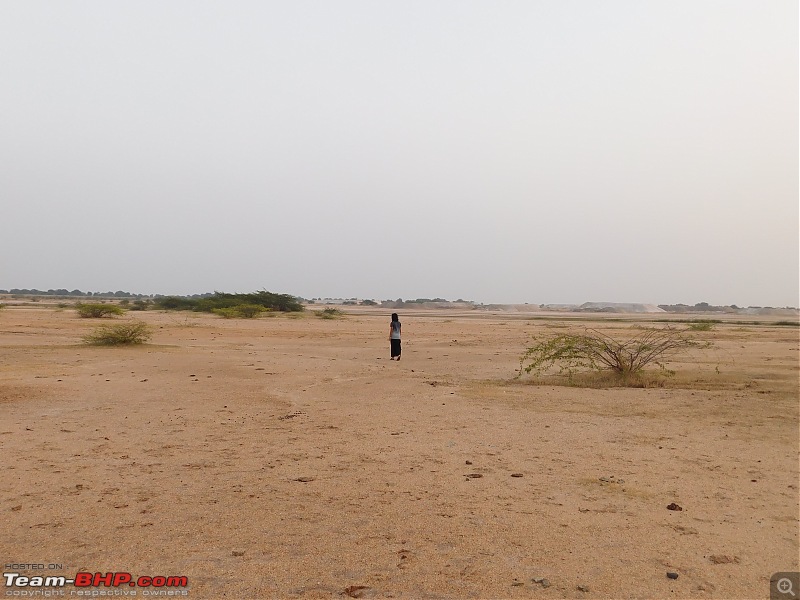 The sun was about to set 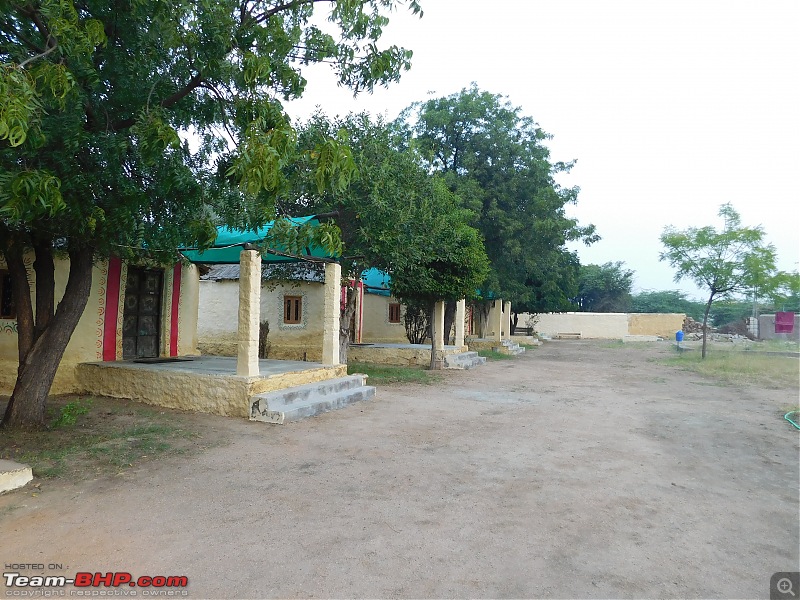 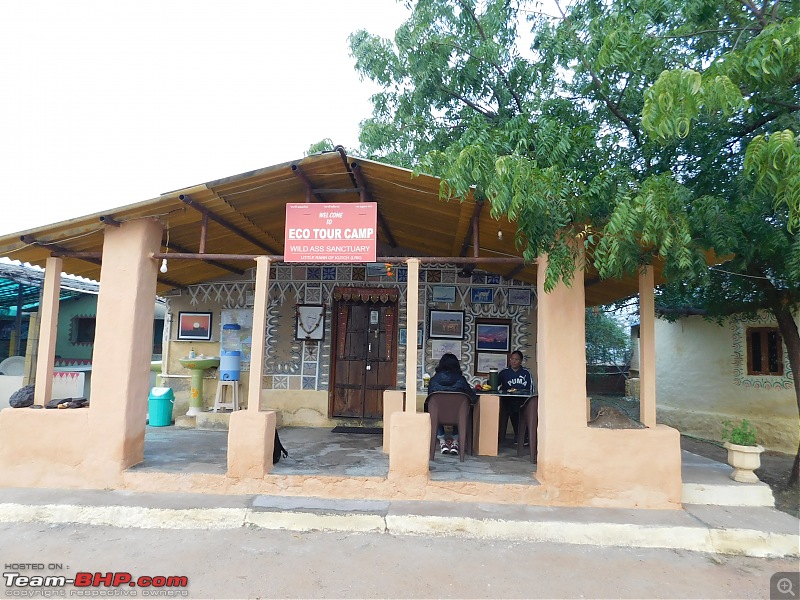 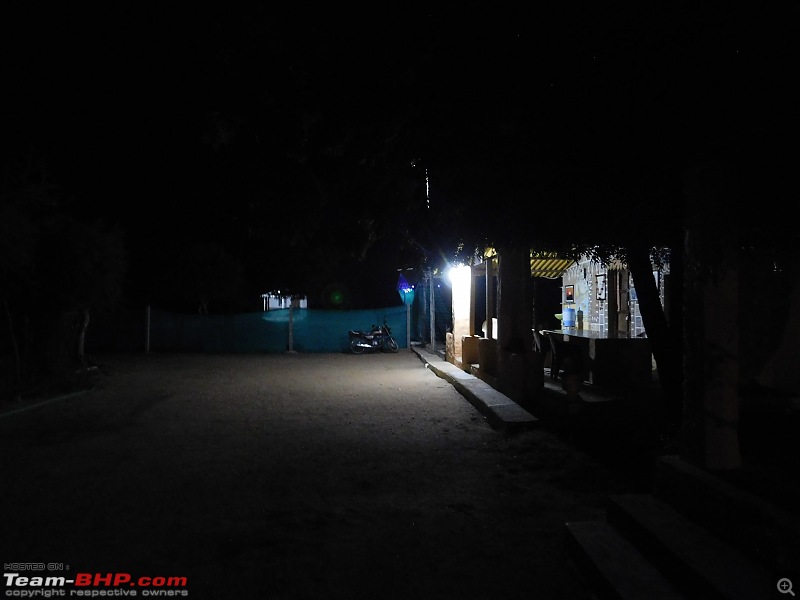 Dad tried some night photography! Day 4: Little Rann of Kutch and the Wild Ass The most memorable safari I have ever had It was at seven in the morning. I was still rubbing the sleep from my eyes when I stumbled onto the jeep parked in the courtyard. We were going on a safari into the little rann! I was very excited after seeing pictures of the wild ass in Mr. Dhamecha's album - they were obviously not your average donkey! We drove a little way on the narrow tarred road before leaving it for a dirt track and into the wild. The landscape is not entirely desert - The peripheral Rann is more savanna like than a desert- there are patches of grass and the bushes and short trees were fairly common. Deep ruts from the wide wheels of several jeeps started from where we went off the road and onto the cracked earth. And within moments we plunged into a whole new world. The arid green bushes, the pale brown, parched earth, and the huge dome of the great blue sky was so different from all the landscapes I have seen in my life. I live my life surrounded by buildings, and occasionally, trees and mountains. But this place has such an open, indiscreet soul. The plants were scarred and thorny. Their dusty green, leathery leaves or spines had survived two extremes - being flooded with water or being left without much of it. I immediately liked this place - it had a bold, fearless beauty about it which is unique to the Kutch. Despite the fact that this was a desert, I was comfortable in a winter jacket. The greenery was even a little savanna like. It was December, no doubt, but the temperature was moderate. After some time of driving, we came to a couple of oases - it wasn't like in those desert oases where it's all lifeless and dry and all of a sudden, a rainforest appears (in the movies); rather, the landscape was patched with dryish grass and small trees. On both sides of our rut-path lay many shallow but wide puddles - about a foot deep, which were common in the peripheral Kutch. In these were whole ecosystems. Strands of a foot tall grass bordered the miniature pond, with spoonbills, ducks, and I don't know how many other birds were flitting in and out of the rivulets. A kingfisher sat on a branch in the background. There were so many other birds that camouflaged with the dull green grass that I couldn't find them even when our guide pointed them out to me several times. I gave up the binoculars, because the tiny birds managed to evade me, their small muscles too quick for my eyes! There were snow white egrets, dark necked ibises, cream-color cranes, and others whose names for the life of me, I can't remember. It was unbelievable how such thriving life could exist here. I could see more birds here than I could in a forest. Mr. Dhamecha produced a bird dictionary from nowhere. There is an inexplicable satisfaction when I see a picture of a bird and recognize it in real life! 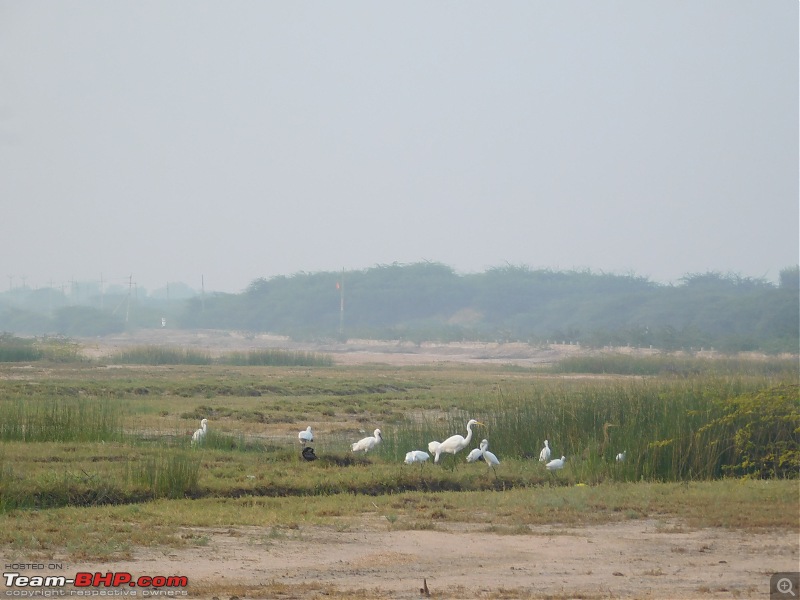 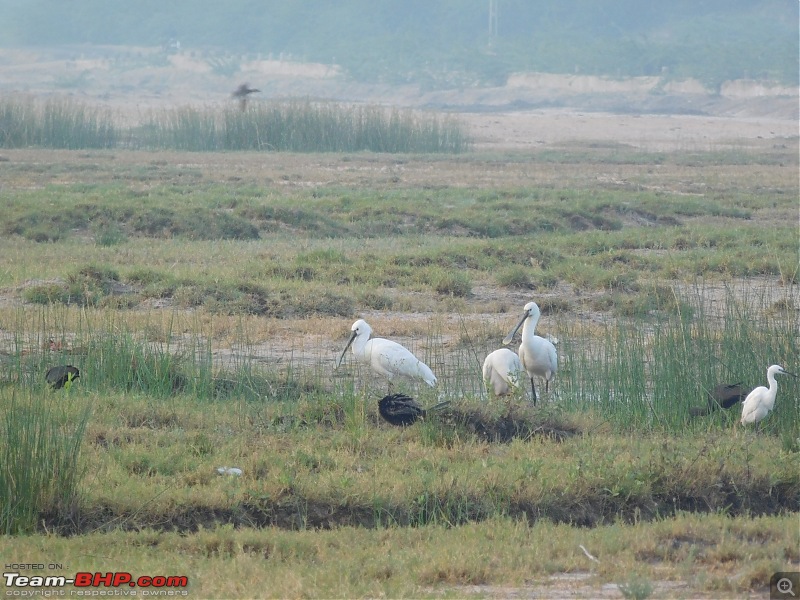 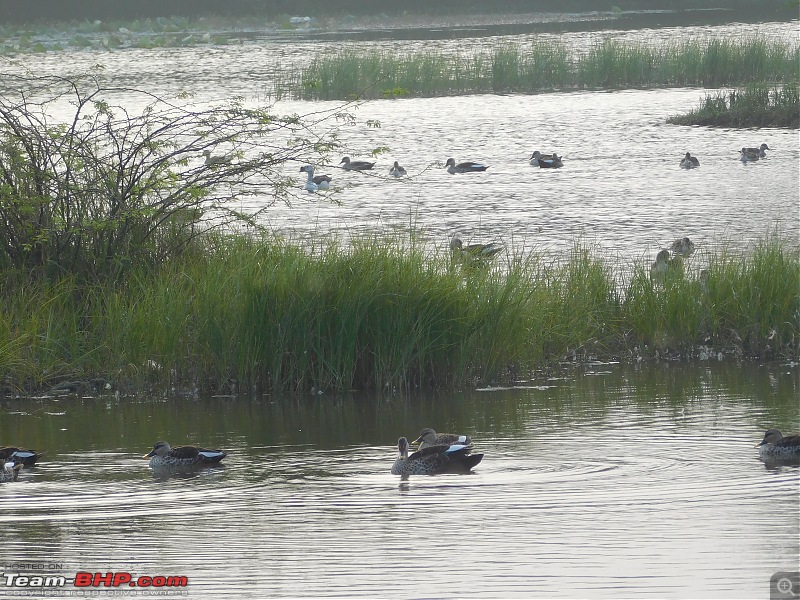 We came back on the road at another spot before driving to a lake. About a half a dozen ducks floated about. Four peacocks sat nestled on the branch of a small tree or jutting out on the peninsula at the left of the shore. Green grass blended into pale brown till the horizon, where a line of green nettle bushes marked the start of the desert and outback. Utter quiet when the jeep came to a stop. An occasional quack and the proud cry of a peacock was all we heard. After gazing at the scene for a few moments, we sneaked our way to the jeep and hopped on for the deeper Kutch. The single row of thorn bushes, which I mentioned earlier, is about two hundred yards from the road. We drove through the opening at one point of the row. This is where I felt that the actual desert had begun. Here too, many jeeps had left their mark. The tracks led away into a more open, an emptier Rann. Something was missing then, and it took me a while to realize that, after some point when we left the tyre marks, there was no sign of civilization. It doesn't seem like much, yeah, you don't see any signs of human beings in a forest or on a river too, but here it was different. We had left behind the streetlights, the wires, the roads, the salt mines in the distance. Even an odd cow with jingling bells was nowhere to be seen. Wild and raw - that's what it was. Open, with no possibility of any trace of human existence. the only thing which kept us from getting lost were those jeep tracks - stray away from then, you're on your own, Mr. Dhamecha said. It was all there, laid out in front of your eyes - the honest, no-nonsense kind of nature. And yet beautiful, in an unexpected way. Stunted trees, thorns, and some succulent cacti housed a wonderful world of birdlife. Mr. Dhamecha pointed out to me a dark colored bird, the drongo. It was playfully nicknamed Police Patel by the locals - small as they were, they had an amazing voice to alert and (in some cases) to drive away any predators anywhere in their surroundings! If I may say so, some complain-boxes in my class may be inspired to meet such creatures - they shoo away their subjects too! 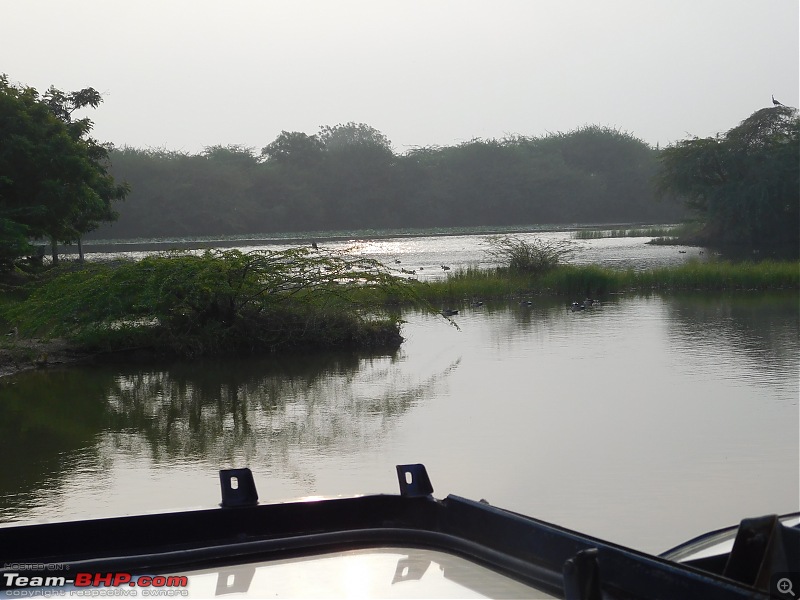 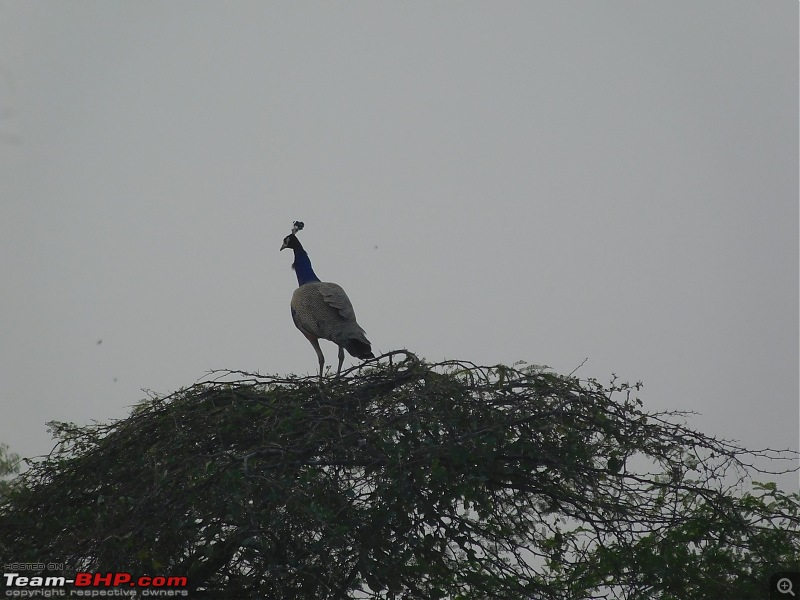 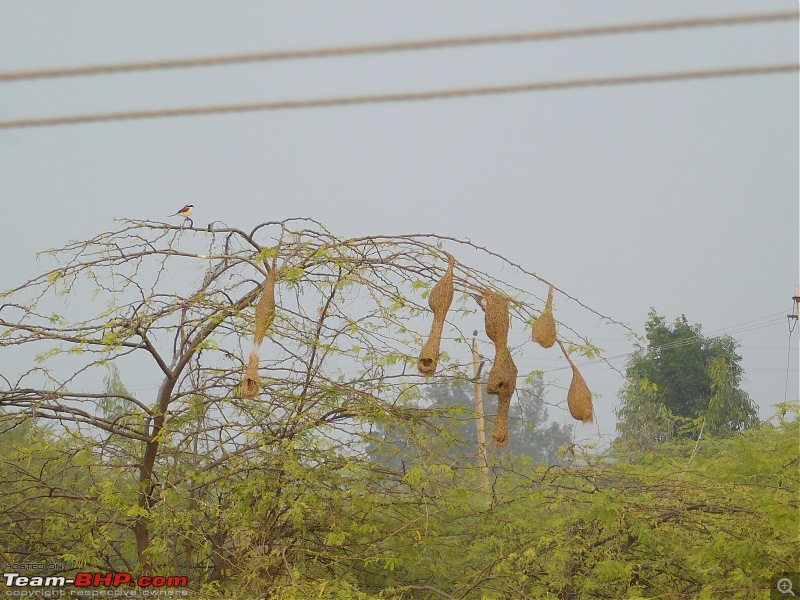 nature weaving her magic After some time, we stopped at a clearing. Then Mr. Dhamecha pointed to some orangish-sandy blobs in the distance. My first sight of the wild ass! We slowly approached the herd of about twenty. The blobs slowly condensed to become a cross between a zebra, horse, and donkey. They had big heads, with big brown eyes and a small black mark on the inside of the elbow of each foreleg. That last part always made me think the creatures were wearing a vintage elbow patch jacket. Dark brown muzzle, bump on the nose, long eyelashes, powder puff color and all gave it a very docile appearance. But the muscles in its limbs and rear were enough to make me flinch at the thought of a kick. One or two drongos sat on their backs. As their ride would walk through the short grass, the drongos would jump off and gobble the delicious insects which camouflaged with the grass. 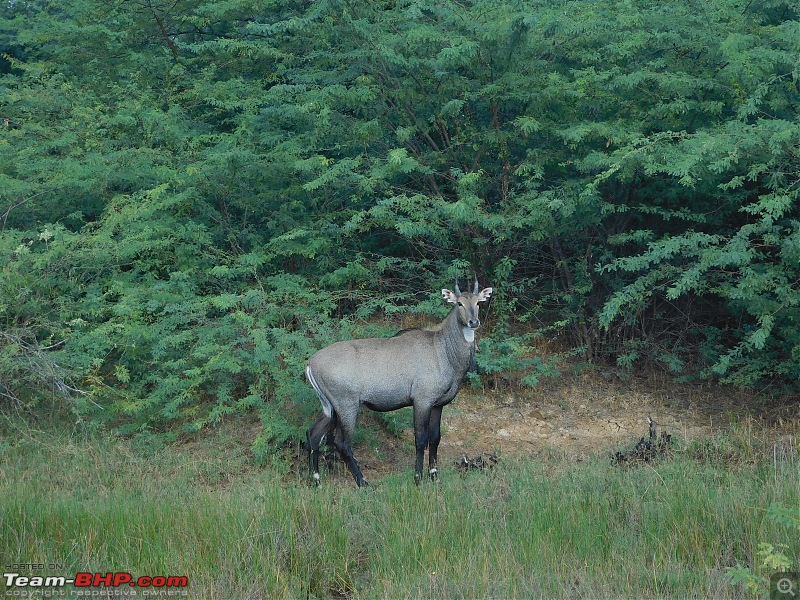 a handsome nilgai 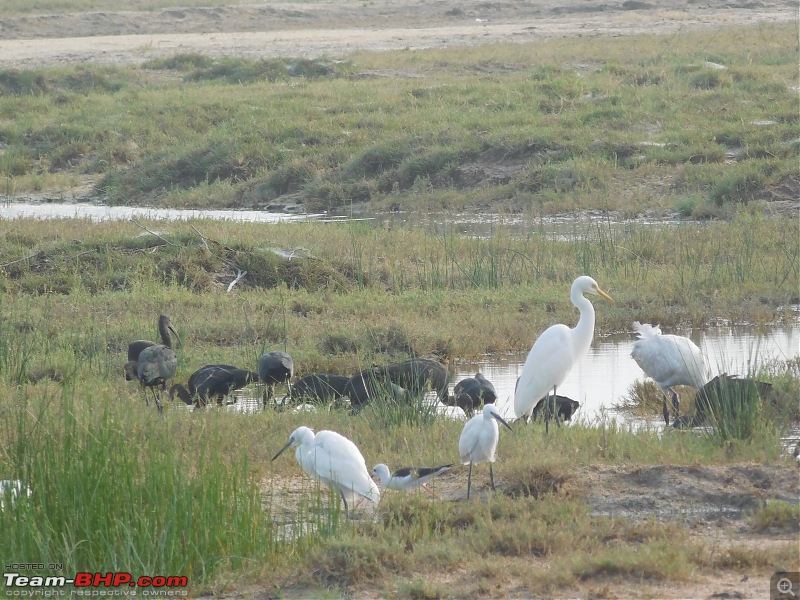 egrets 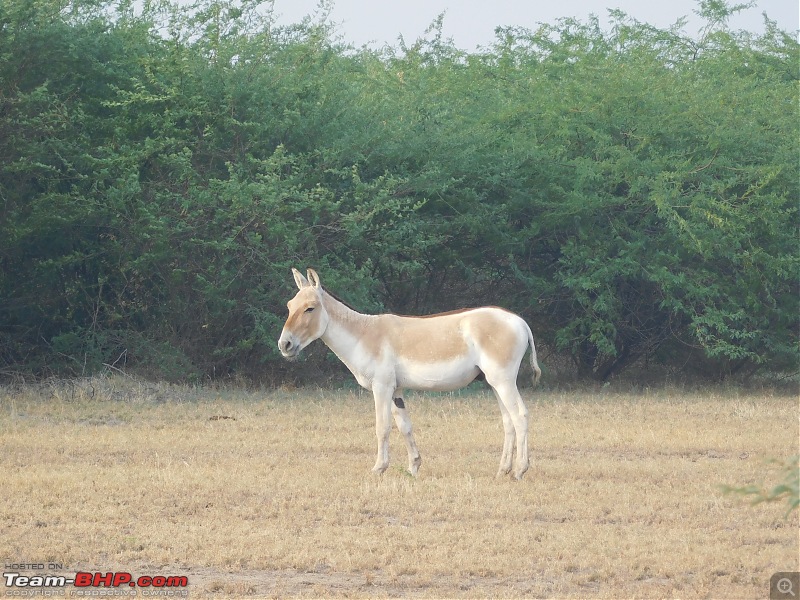 a solitary creature 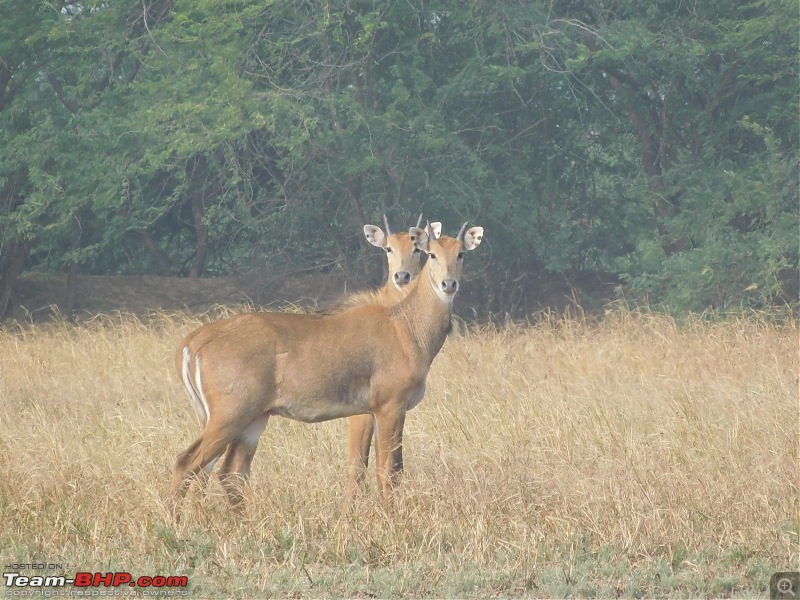 Indian gazelles They were extremely shy. While I tried to inch forward, they kept trotting backward. Even though I froze mid - lunge, they eyed me suspiciously for a moment before loping farther away. Finally they got irritated and left altogether, while I stood there with a sigh of resignation. Some way off this spot where there was more foliage, we found a family of large cranes. They were majestic. And much bigger than the ones we saw before; they had black necks, brown tipped, feathers and a wingspan of a metre. They had a baby bird with them too. It had me entranced. 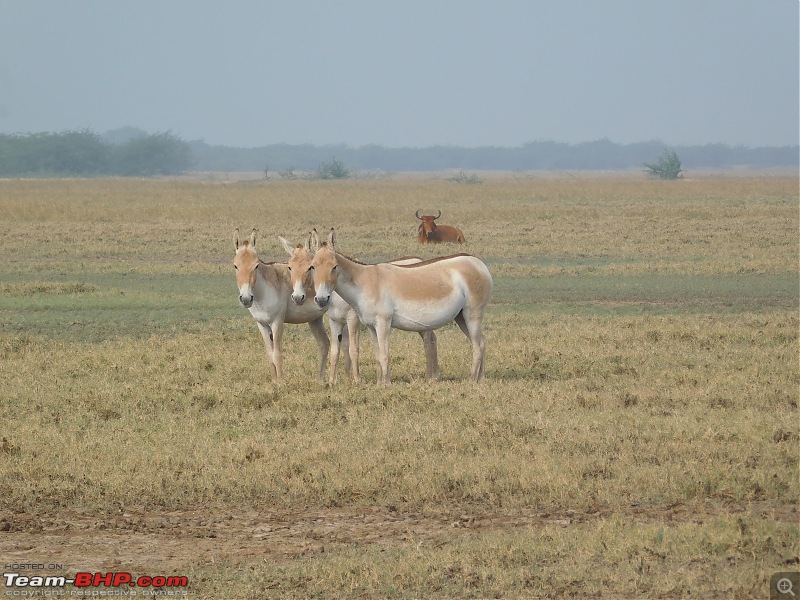 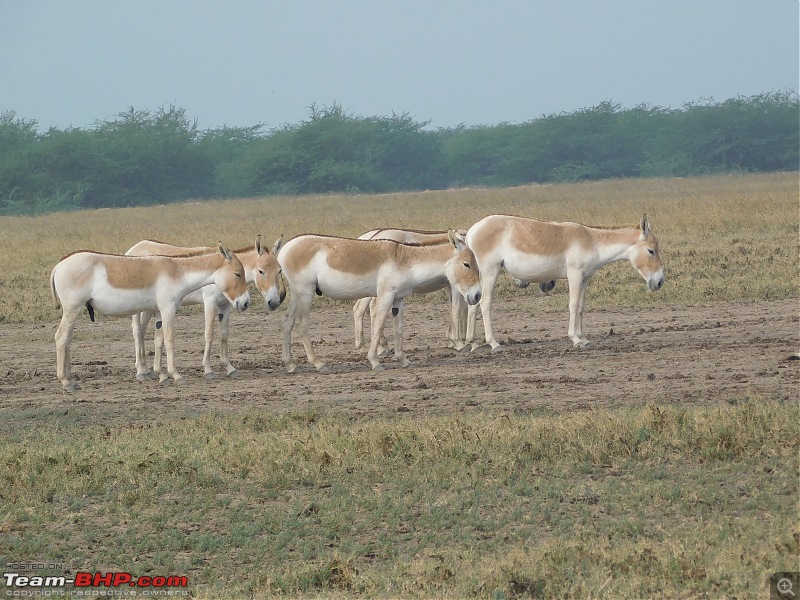 docile but majestic, the Asiatic Willd Donkey or the wild ass! The Salt Flats of Kutch Mr. Dhamecha drove us through the network of the confusing paths the jeeps had made for us. Then we suddenly reached a huge mountain of white, grainy stuff. Just then the jeep had a flat tire, and while Mr. Dhamecha changed the tyre and my dad chatted with him about the very interesting subject of off-roading four wheelers, I attempted to scale this mysterious hill. It was one of those salt mines we had seen from afar the last evening. I picked one of the grains, which were actually crystals clumped together. I broke off a bit with my teeth and crushed it. Believe it or not, it tasted like Jaljeera. It was strange, how I was standing on a mountain of salt. The crystal which I had eaten from, especially. It could either fall off on the journey to a salt factory. Maybe it would be iodized or washed and crushed. Maybe it would end up in some butter masala at someone's home in Chennai, Chandni Chowk, or Columbia. Why not? Or maybe it would be used in a fertilizer and mixed with cow poop. Maybe it would be used to salt an aachar and maybe, by someone in a million coincidence, I or someone I knew would eat that aachar. The possibilities made my head spin. Did you know that 30% of India got her salt from here? Imagine! 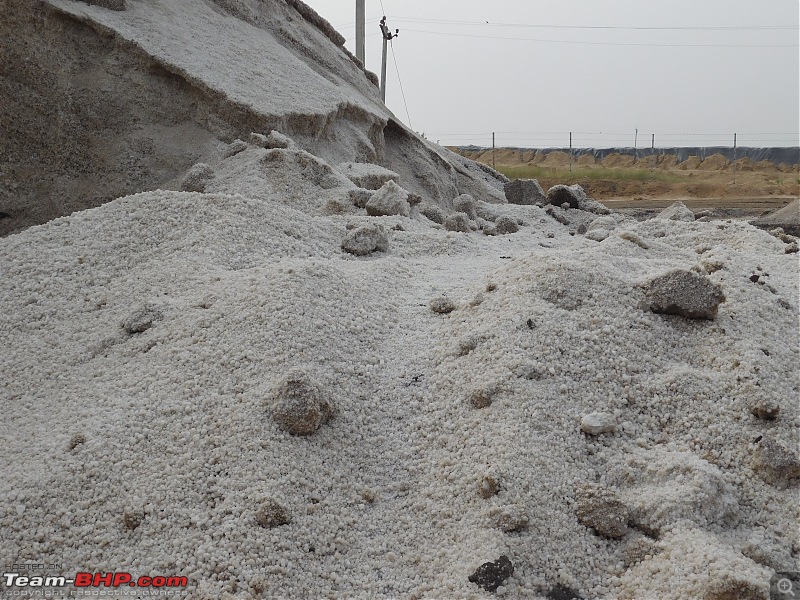 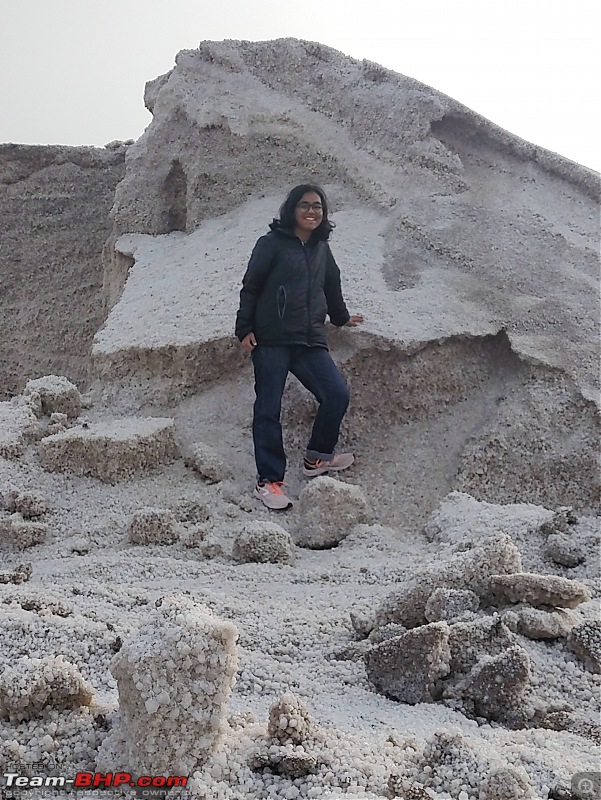 We left only after we had packed up two handfuls of jaljeera flavored salt. With the wind blowing into my, by now extremely knotted hair, we rode into a now completely empty clearing now, with no greenery till the horizon. The sky had turned a gray and it was more windy. In the distance, I could see some salt farms with my binoculars. I felt strangely like Robinson Crusoe. These salt farms, which were behind 1000 tonnes of salt every season, which is a period of eight months, are actually square after large square of salt pans, just like how the rest of the world produces salt. But therein lies the rub - unlike the sea water which is used in the rest of the world, these salt pans contain ground water. About the time when salt farming began in the Kutch, the groundwater was 75% saline. That was two centuries ago, during the British raj. But now it is only 25% saline. Here are the steps the 'agariyas' or the salt farmers take to 'cultivate' salt. 1. Usually, each salt farm is run by a whole family. Every member takes a part in the whole process. And, every farm has four to five salt pans, which as I could see, were twenty metres across. They are then flattened and hardened, by walking over them with bare feet. This is done so that the salty water doesn't seep in through pores in the soil. Also, these pans are not flat - they are at a gentle slope, so the brine gets collected at the edges. 2. There are hydraulic pumps which draw water from underground and fill up one salt pan. The water flows continuously until it fills up all the salt pans. 3. Next, the natural evaporation start till the water is dried up and small crystals form. Before this happens, though, the water is raked continuously which somehow speeds up the process. 4. The salt crystals are raked up by hand and are transported to salt mill. 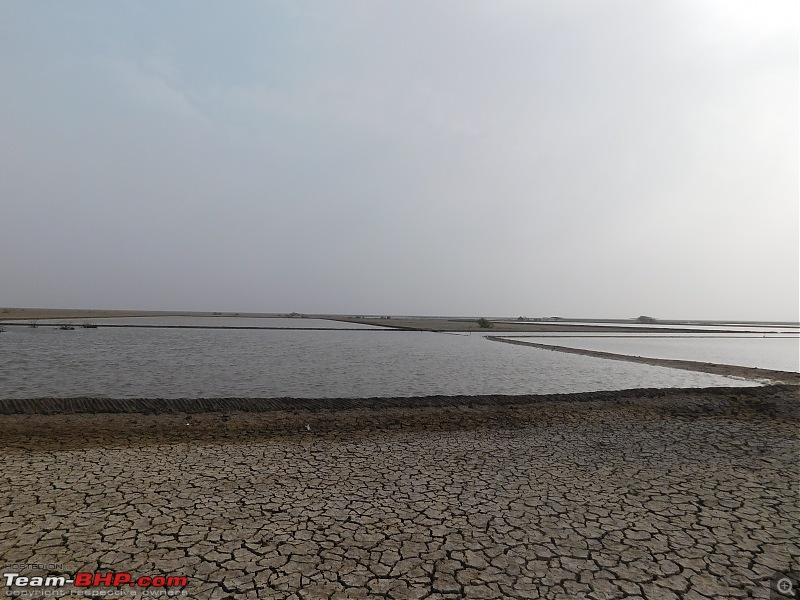 the salt farms 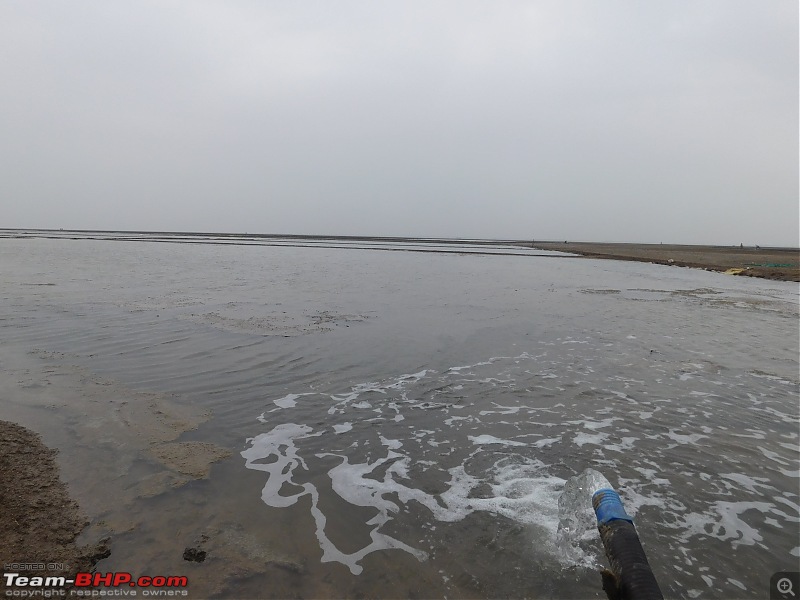 saline water is pumped out from below and allowed to evaporate. Salt is left behind It is an altogether tedious, backbreaking, gritty job. You need to be as tough as your surroundings to survive this condition. Picture toiling with a rake in the sun, with no shade in sight. Walking through briny water continuously. The families live right next to their pans for the three months in summer. Then, people travel to these places in the middle of nowhere and continue their job from dawn till dusk. It must have been even harder back in the day when there was no machinery to help them. These people are some tough eggs. Without a pinch of salt, thank you. Our guide also told us that each salt farming family make about ten lakh per season. But it's not as much as it seems - at least 7 lakh is spent on transport, paying for the solar panels which powers the hydraulic pump, and living costs. In addition, they are at the mercy of nature. If it rains even once, the concentration of salt drops considerably. So they have very little money left to spare. And this was in December. There was a lot of water left in the pans, with a little foam at the corners. This season would end and the next would start. And the salt farmers will always be coming home. We bade goodbye to Mr. Dhamecha and his lovely family. While on the road, my dad had the sudden whim of taking the Alto for some off-roading in the Little Rann. And it succeeded! Our little car made its way through the terrain with the enthusiasm of a young terrier. And so our Alto also had a taste of the outback of Kutch. 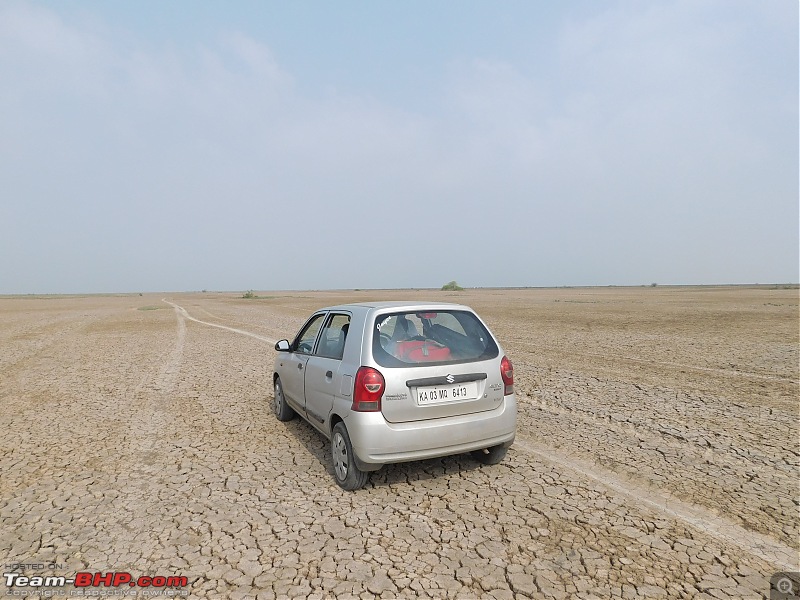 our little Alto in the little Rann 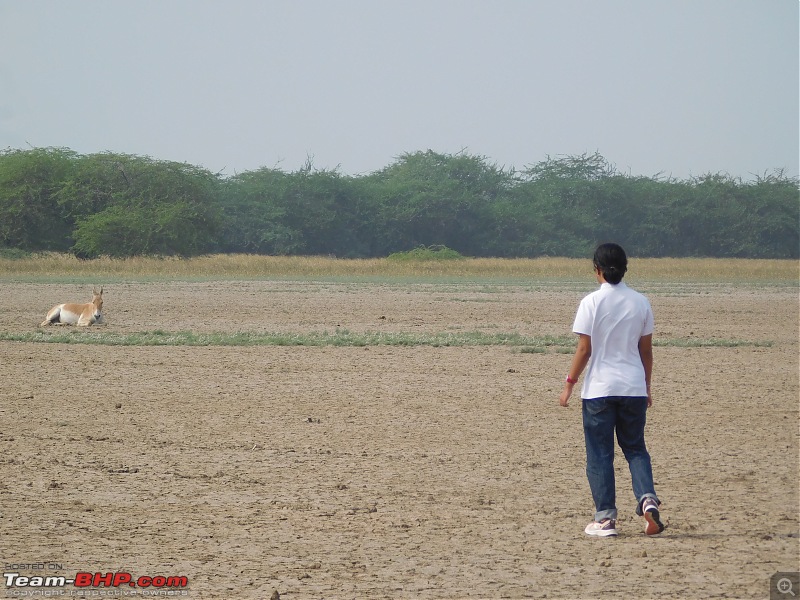 don't let this lazy pose fool you 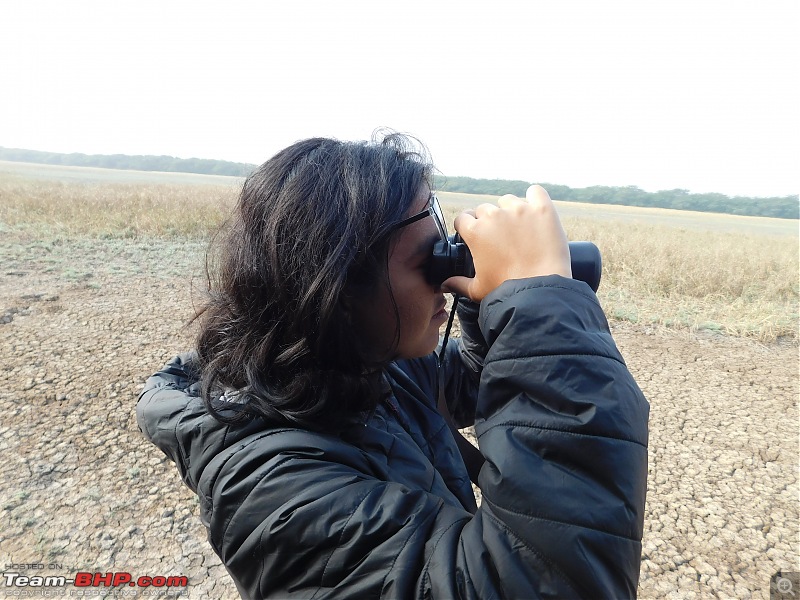 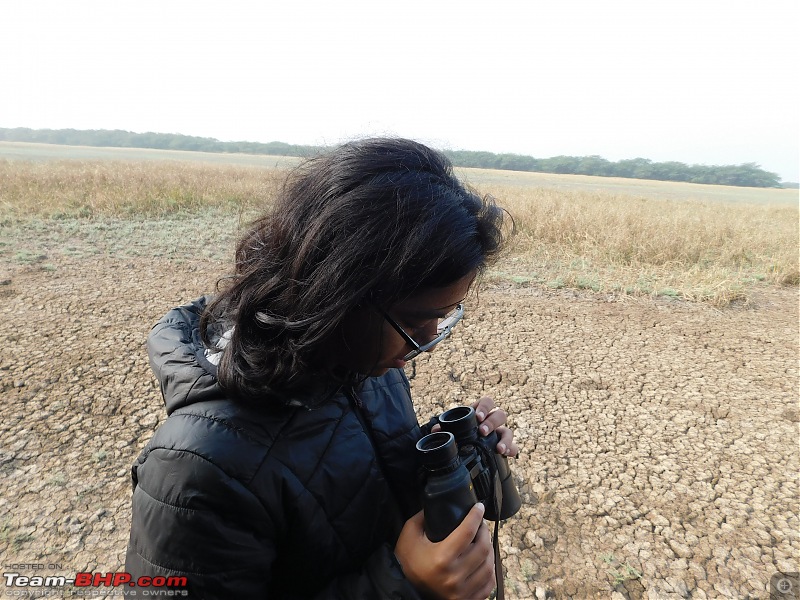 only a person with specs would understand 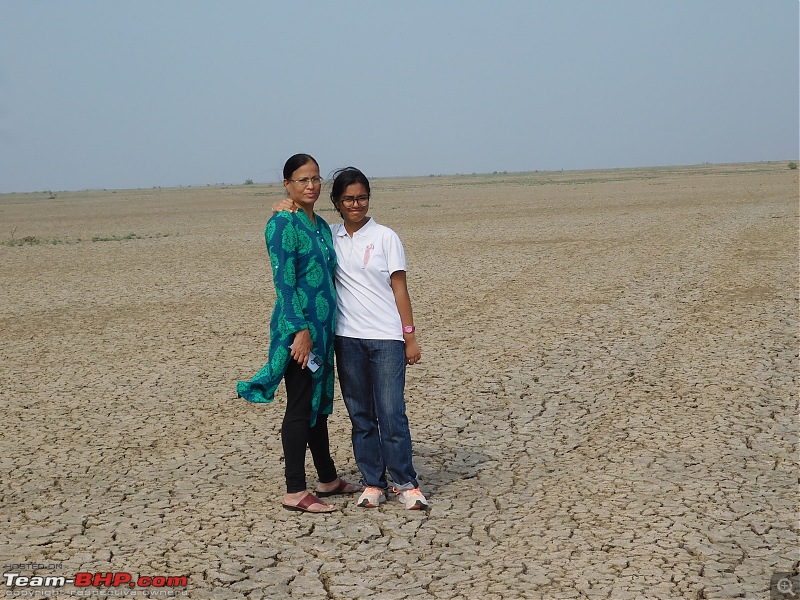 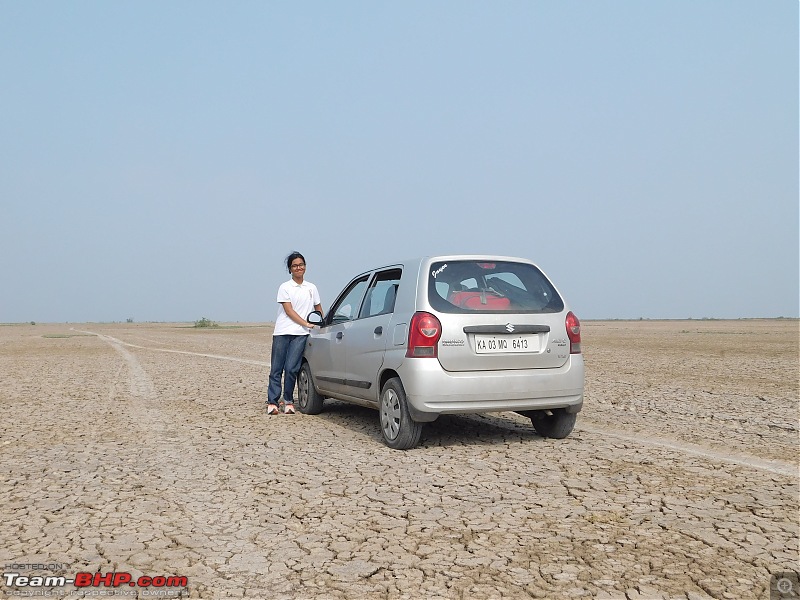 With this, we ended our safari of the Little Rann of Kutch. We went back to camp and had some delicious khichdi. Our time at the Rann was the best. Not only was the stay wonderful, our guide genuinely loved this place, and he knew the most about it. If you ever visit or revisit this place, certainly consider Mr. Dhamecha's. some parting shots of our memorable stay at the LRoK 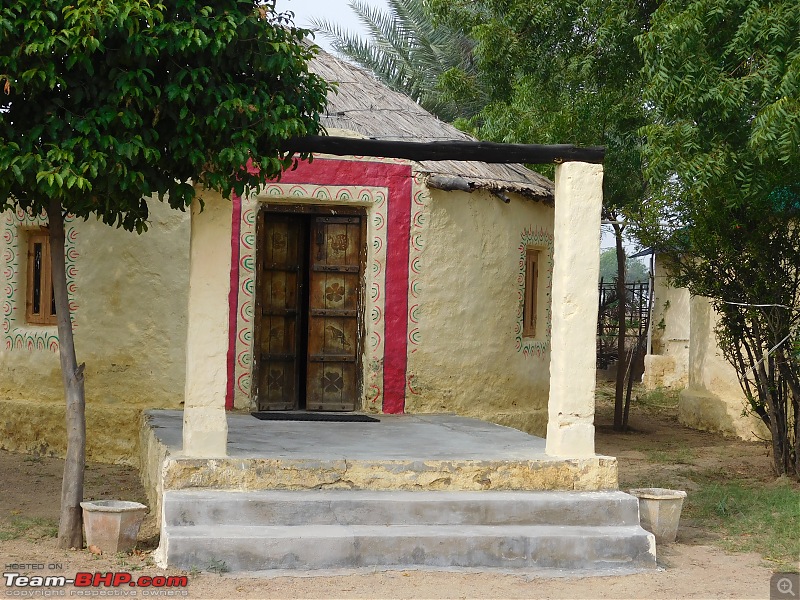 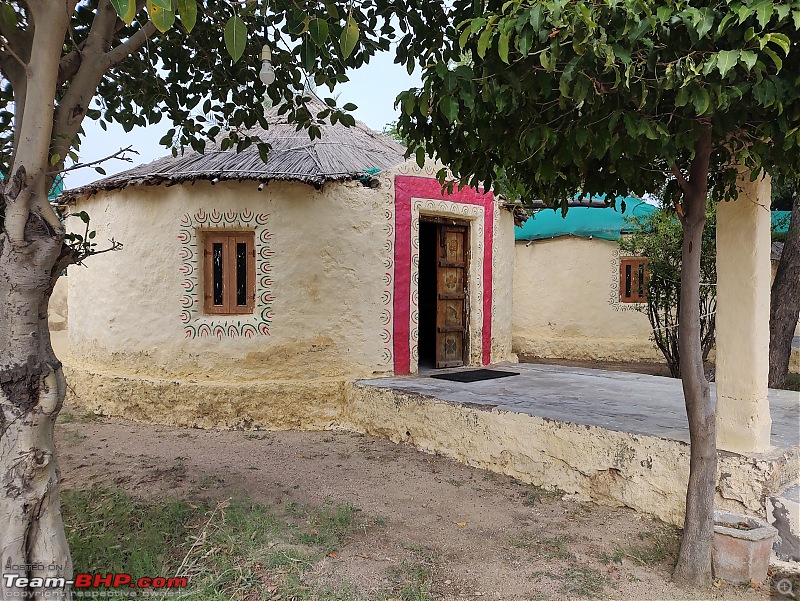 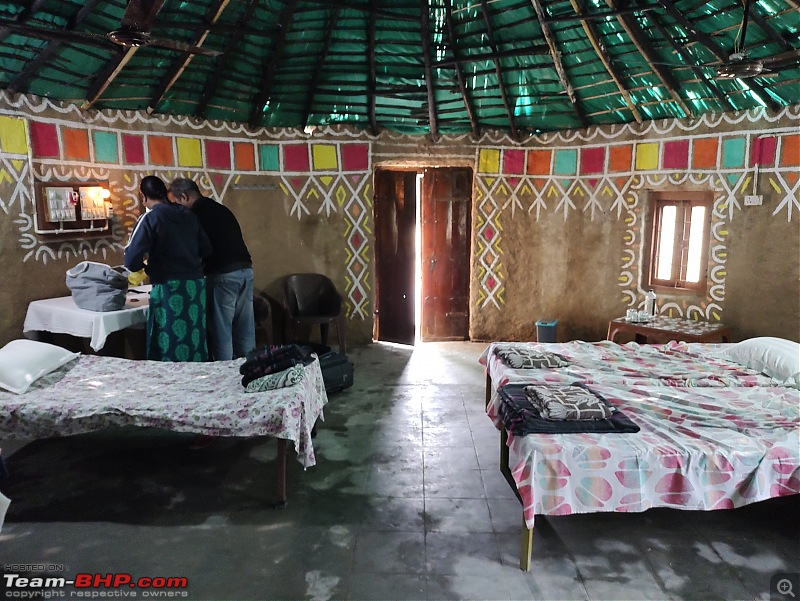 The Rann is a beautiful place. I may have read about it in some textbook, but I could not stress more on the fact that seeing a place, experiencing it, and feeling it is the best teacher and the best education. I will never forget the things I have seen, and the side of nature that I witnessed that day. Our trip is anything but finished, dear reader, so stick around! Last edited by joyee : 8th February 2024 at 11:51. |
| |  (25)
Thanks (25)
Thanks
|
| The following 25 BHPians Thank joyee for this useful post: | ABHI_1512, arun_josie, BLACNWYTE, CentreOfGravity, creative420, DasAuto1985, digitalnirvana, Dr.AD, Dr.Q, GForceEnjoyer, GTO, haisaikat, hothatchaway, itspatra, Kkumar, MotorDev, mugen_pinaki27, Neel70, Neversaygbye, parsh, PurpleTitanium, sanjayrozario, thirugata, Voodooblaster, ysjoy |
| | #4 |
| Newbie Join Date: Oct 2023 Location: Hyderabad
Posts: 24
Thanked: 432 Times
| re: Run to the Little Rann, Dholavira and Lakhpat; a journey back in time The little Rann to Dholavira The previous day, we had driven from Mr. Dhamecha's and said goodbye to the Little Rann with its salt mountains and wild asses by doing some off-roading of our own. The next stop in our itinerary was Dholavira, the iconic Harappan city in the district of Kutch. So I plopped down in the backseat and prepared for a sunburning drive. Wide highways, white dusted flats, a lunch at a highway food court and several hours later, we reached Dholavira. The pre-historic city now lies in the center of a small town. Dusty one story houses, dirt roads and mega-horned buffaloes wearing colorful beads gave it a Horn of Africa vibe. It was five o'clock, we knew that the archeological site would be closed. But we decided to check out the entrance anyway. In the fading light of the evening, we circled in ad round the same streets for fifteen minutes, all the while checking for hotels. Nearly all of them were fully booked. Despite that, we discovered that Dholavira was not even half as touristy as we expected - there were just a handful of places to stay. Finding a reasonable place to stay for the night would depend on our luck. So, my parents came up with an idea completely out of the blue, at least to me. Let's check if we can stay at a local's home for the night! As luck would have it, we met a guide from the archeological site on his way back home. We told him what we were looking for and he made a phone call to his friend who lived nearby. After some time, we found ourselves at Nag ji's home. Nag ji, also a local guide, had a big house - a C shaped one which is common in rural areas. His whole family lived there. It was complete with a herd of 12 cows. He put up three khatias for us in a spare room and we were set for the night. For dinner, we had a wholesome meal of bajra (wheat) rotis, kadi, or a mix of curd, gram flour, and ghee. Aloo curry, a bit of jaggery and sour buttermilk accompanied this. How's that for an authentic experience? Before going to bed, we metabolized with the lazing cows in the courtyard under the moonlight. And how's that for romantic village life? I wouldn't know, because I was snoring away on my cot before you could ask me. Day - 5 Dholavira and the beginning of civilization This morning, I was about to see a city that was 460 times older than I am (I'm 12). Maybe my great great(^^!) grandparents lived where was going today. I was brimming with anticipation to see Dholavira. But there was also a sunset point and a fossil park and we planned to visit those first. The Sunset point First we drove to the sunset point. It was eight in the morning and the sun's rays were mellow. But it was completely worth it. There is quite a large lake with an island in the middle of it. The town of Dholavira is located on what is known as the Khadir Bet island and we had seen this on the maps before starting the trip. When we drove up, we were on a cliff and there was a small hanuman temple nearby. I looked down from the cliff at the steel blue water, with soft waves nudging the shore. There were pink blobs floating on the surface. We skipped down the cliff to get a clearer view. They were flamingoes! Tall legs, lofty heads, black tipped wings and all. I had only imagined this before. They were only about fifty yards from the shore. Sea gulls from the nearby Arabian sea soared in the sky. Their voices mingled with the strong wind of the morning. The soft light of the day, the sounds of the ocean, and the sight of the island with its two humps made it feel like a dream. It was calm and there was not a single person around. It was stunning. 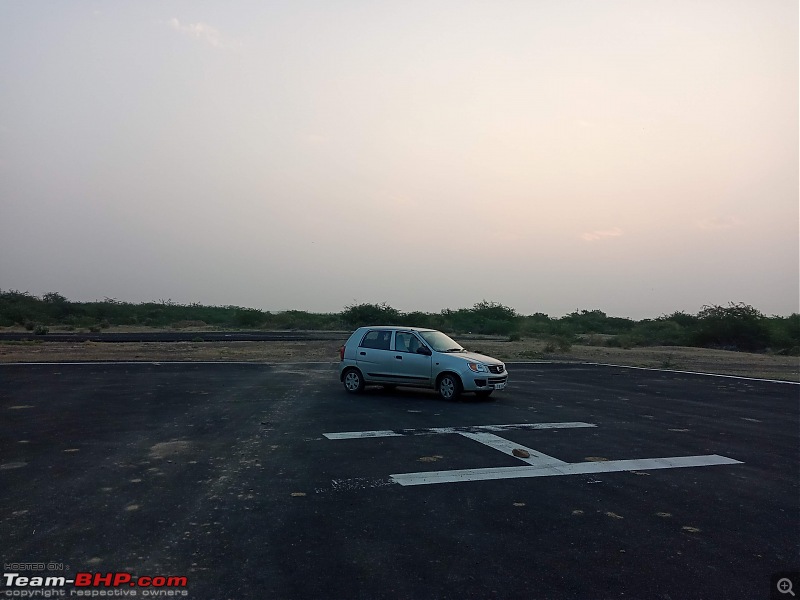 there was a helipad near the Harappan site 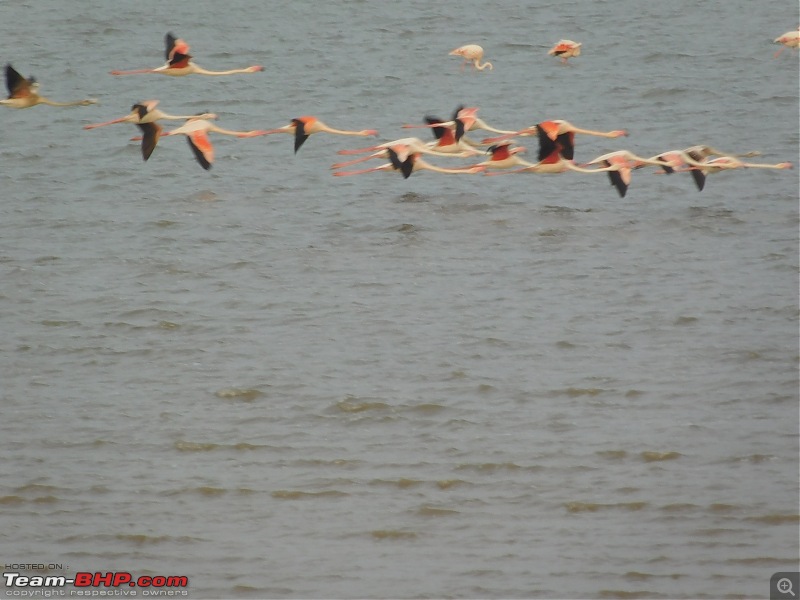 Flamingos 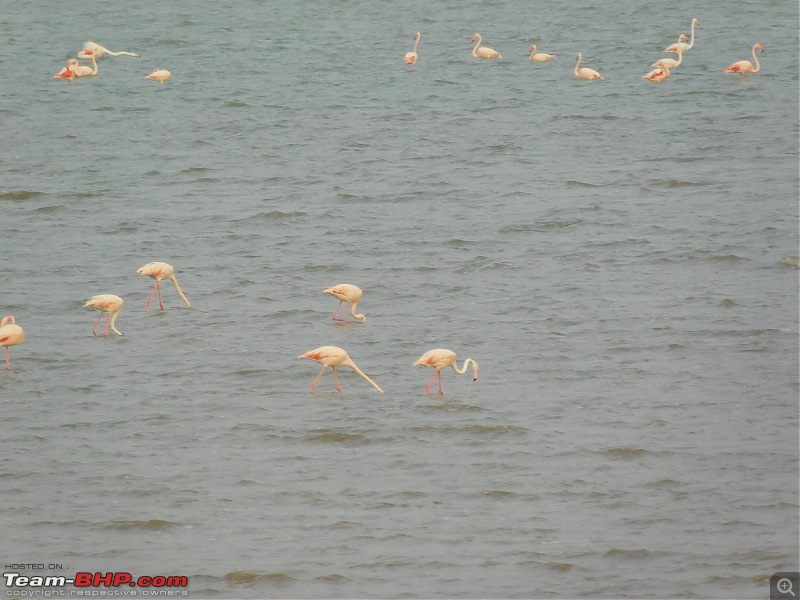 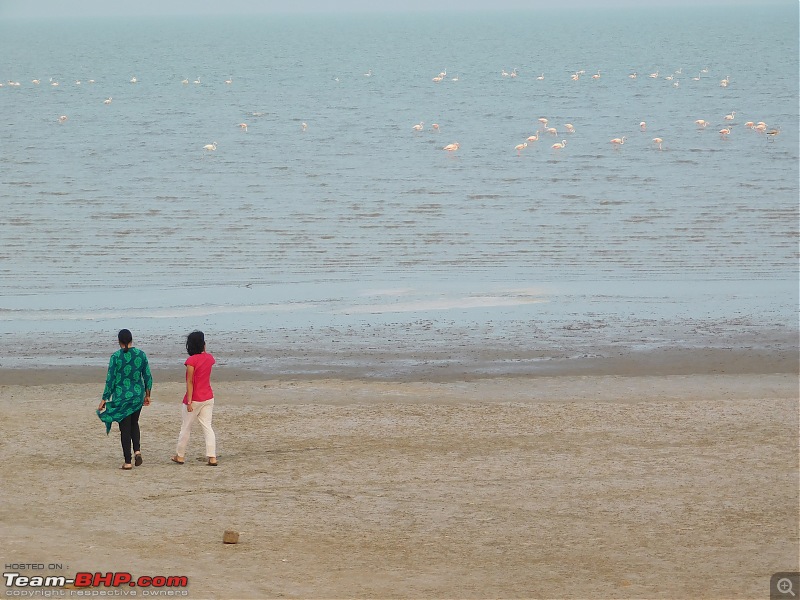 at the lake 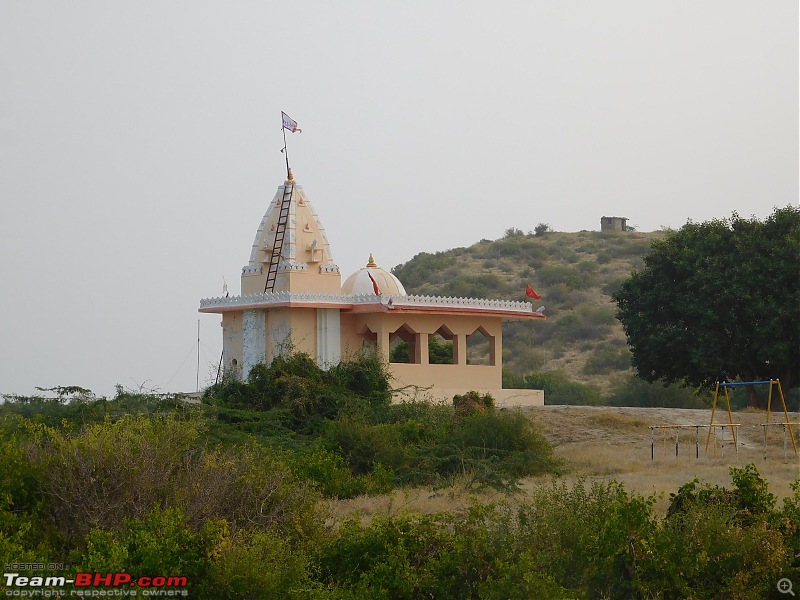 the temple 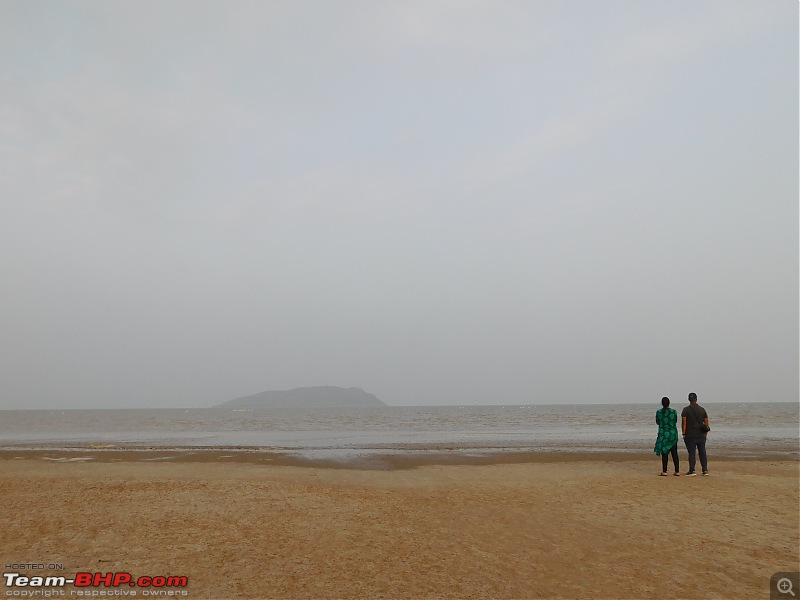 We spent a few minutes in the temple. After paying our respects to Hanuman, a divine monkey in the epic of Ramayana, me and my dad had an engaging debate. Those small birds in the horizon, which, of course, were a very light shade of pink, and had no black on their wings, appeared to me to be baby flamingoes. But my dad had set on the idea that they were sea gulls. Whoever thought sea gulls would be pink? They did not appear pink to him. Maybe it is the effect of seeing too many traffic lights in one's life. Traffic signals or not, the argument has never been settled, and probably never will. 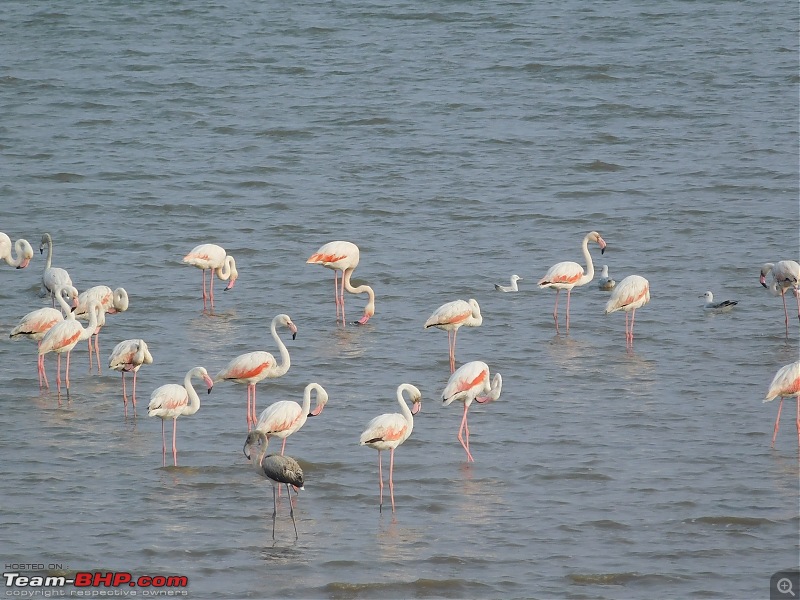 more Flamingos 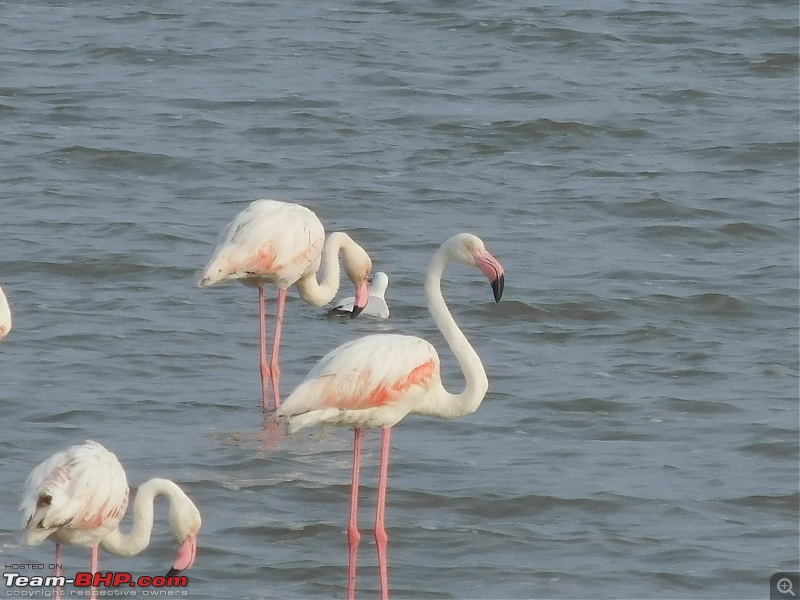 closer look 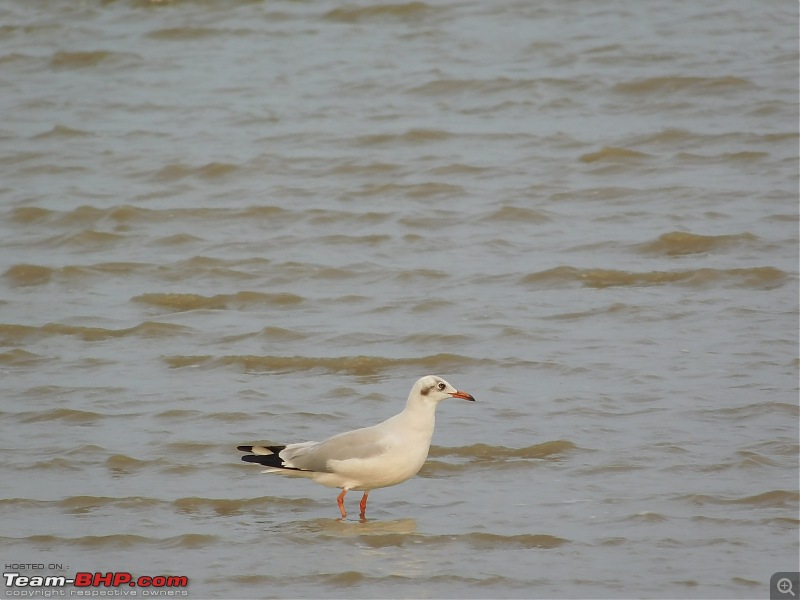 a seagull 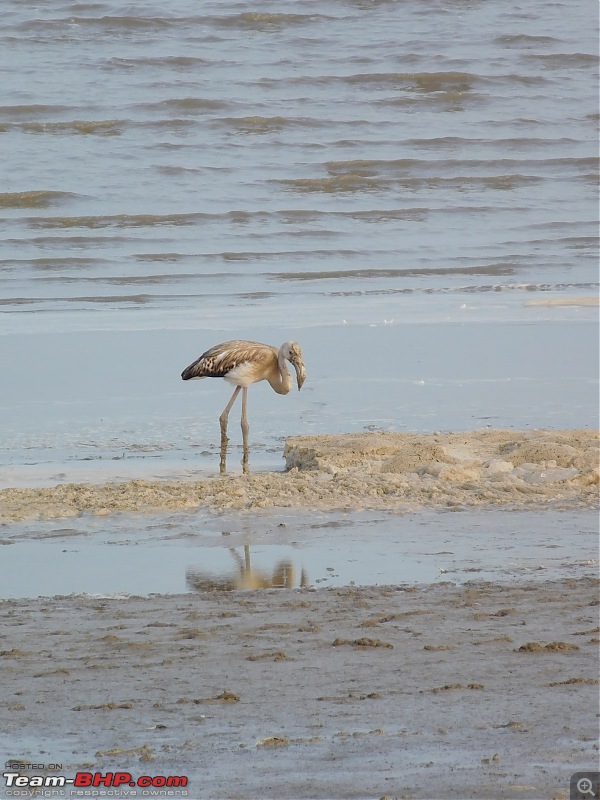 a crane Let me mention that the India - Pakistan border is not very far away, and it is possible that there was a canal connecting the border area with this lake. The 'spire' of the temple, which overlooks the whole scene, had several cameras mounted on it, along with few smaller ones scattered around in inconspicuous places. Next came the fossil park. It was a nicely built place. Models of scary looking rexes and saurus' greeted me while I skimmed over the captions written below. A staircase led down to an ancient looking place. It was straight out of a picture in my big dinosaur book which I had since I was eight - I had all the pictures memorized. The exhibits were placed in glass cases out in the open. There was a huge, upended tree trunk, skin, roots and all, about as old as dinosaurs. Pieces of charcoal, fossilized wood, and ancient stone exhibits were scattered around this coastal dreamland of a place. The sunset point and the fossil park were literally shoulder to shoulder, so it was not long before we saw the salt lake again, this time in front of the fossil park. But this time, the flamingoes were literally at arm's reach. Take a look at the stunning shots we captured on camera! 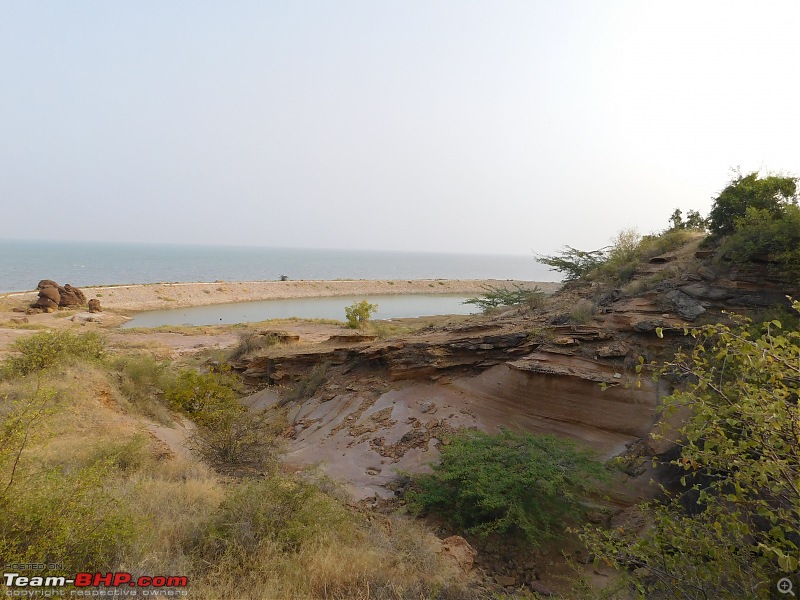 the fossil park 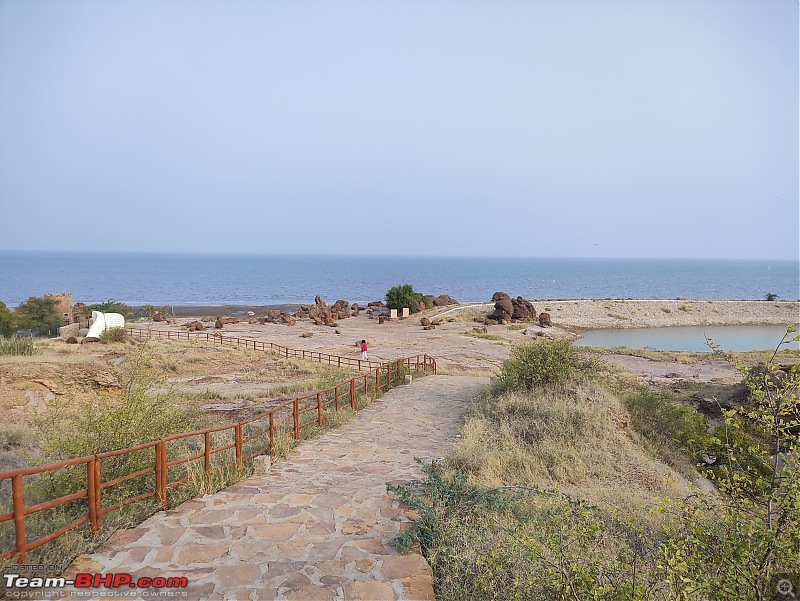 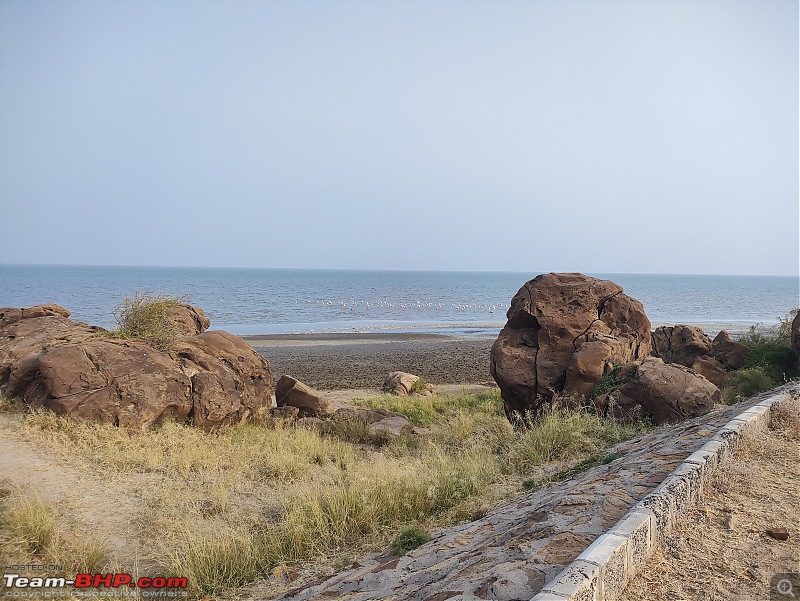 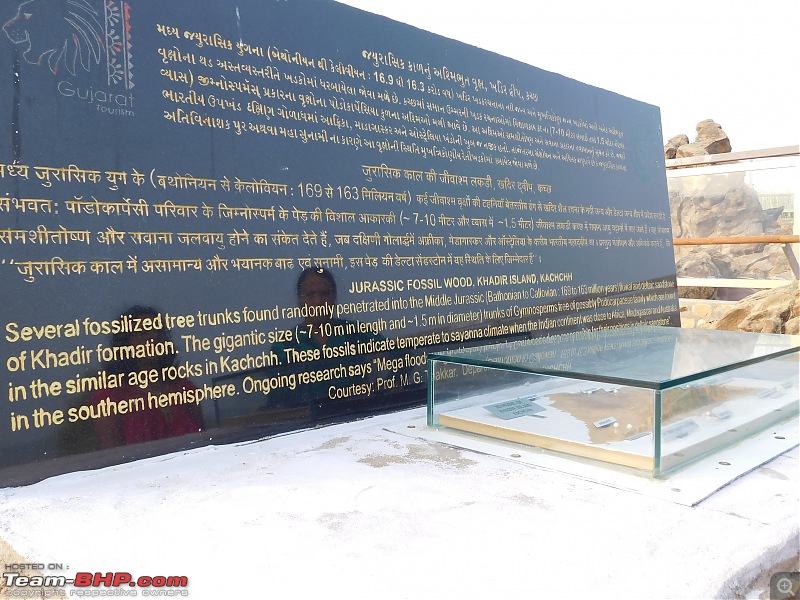 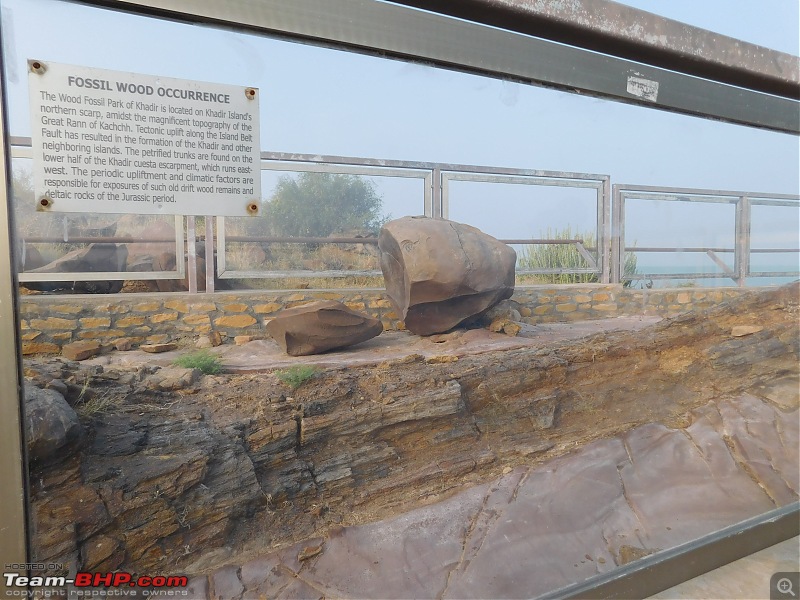 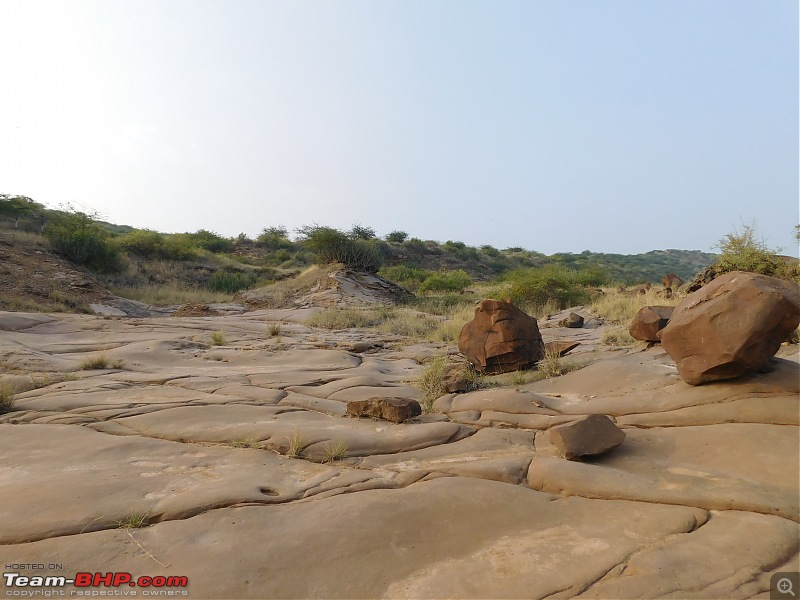 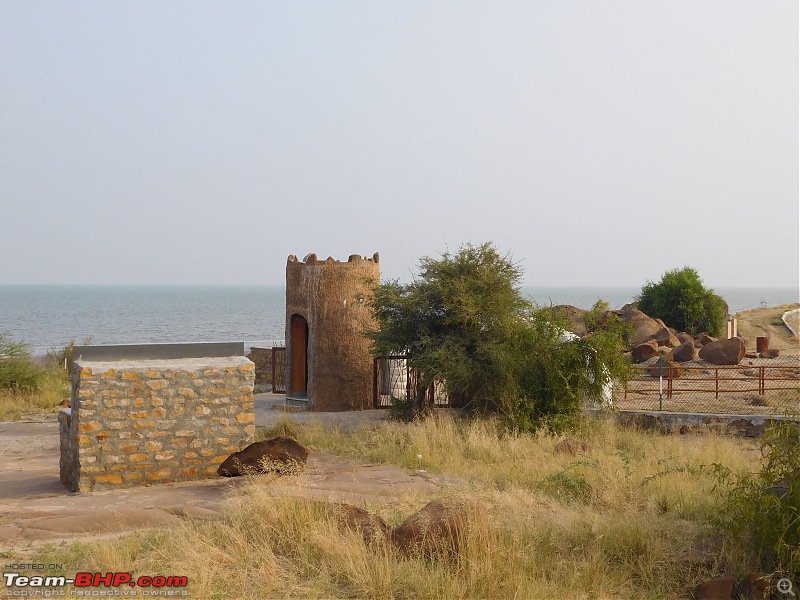 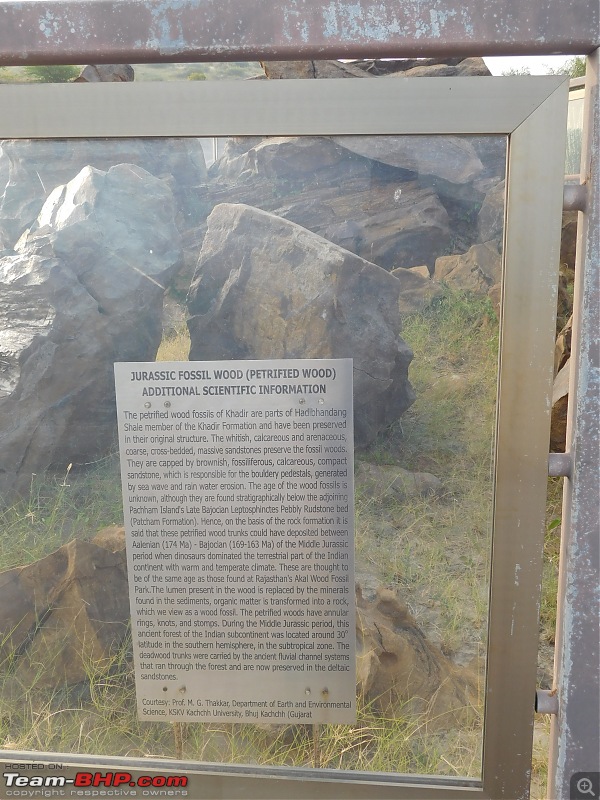 Dholavira, snapshots of a treasure trove Finally, the day had come when I could take revenge on all the textbooks and the hours I had spent memorizing dates, remembering names of places and still losing marks! After seeing Dholavira for myself, I could fling those damned Harappan chapters in my history book in the dustbin! Ok, maybe not the dustbin (my mom would kill me), but at last I would be freed from that picture of the Great Bath, which despite the fact that it was mesmerizing, was also quite repetitive and had lost its charm. 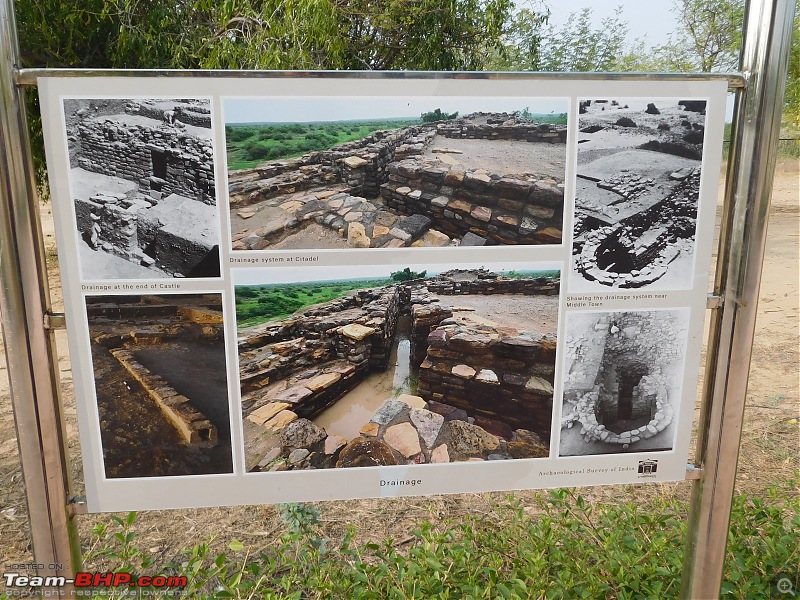 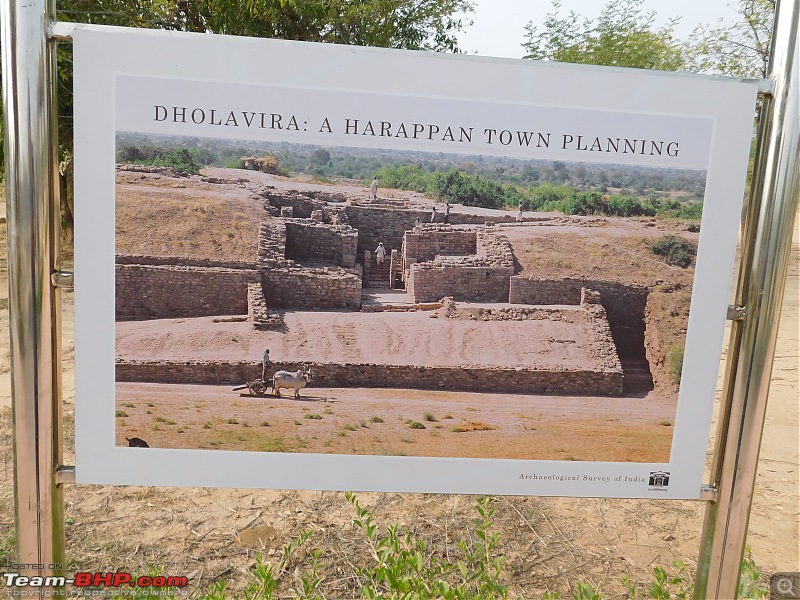 Dholavira is one of the largest Harappan cities, in terms of land area and prominence, and lies on the Tropic of Cancer. Recent research indicates that the city might have been occupied from as far back as 3500 BCE. Then it began declining and was eventually abandoned in 1800 BCE, before most other cities. It has also been conjectured that the Harappans deserted Dholavira for some mysterious reason before they returned around 1400 BCE. The Harappans were mostly farmers, while a number of them were craftsmen and artisans. They were also pagans. The city was a major trade center before its downfall. There are many theories put forward by archeologists as to the reason why Dholavira was abandoned. The site was affected by several earthquakes over the years, with a particularly severe one in 2600 BCE. These earthquakes caused the river Saraswati, a seasonal branch of the river Indus, to completely change course. This river fed the city with all its water so you could imagine the disaster it caused when it changed course. Other theories state that the Aryans invaded the Harappans, or some disease wiped out all the inhabitants. But the truth is still unknown. There you have it, the perfect textbook summary of Dholavira. But why not see it for real now? Let's get started! Dholavira is remarkable for its excellent water management. Indeed, how else would such a big city give its 70,000 inhabitants the water they need, especially in the middle of nowhere? So, the guy who planned the place said, hey, I like water tanks, they're so much fun, let's make 16 of them! And guess what, Dholavira has sixteen, huge reservoirs. We entered the city from the southeastern end, and before the city walls, there was a big reservoir ready to greet us. Perfectly climbable stairs led down to the bottom of the perfectly flat reservoir. Different colored stones of red, yellow, grey, and white made up the walls. Who knew a water tank could be so beautiful? I was filled with wonder. Some guy had laid the stones I was standing on five thousand years ago. I wonder how he would have felt if he knew that this little something he made as a matter of necessity was being pictured, written about, thought of, puzzled over every day. 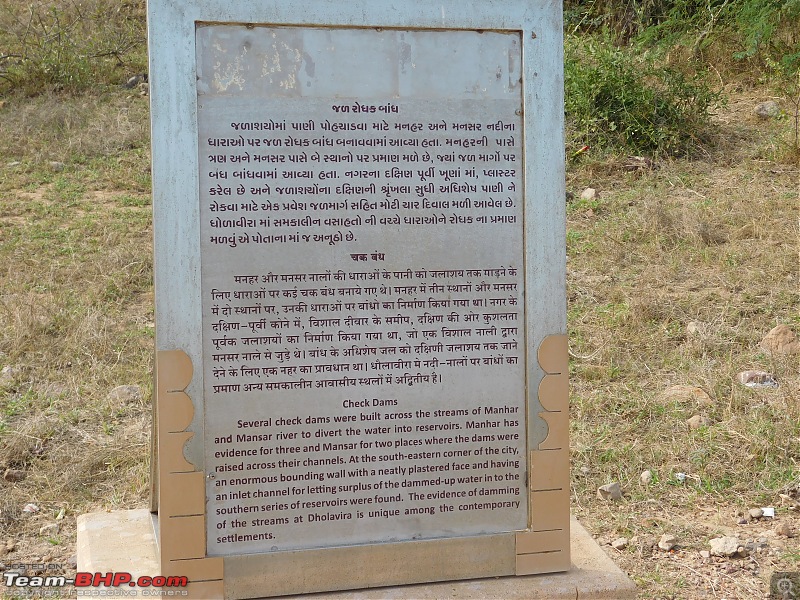 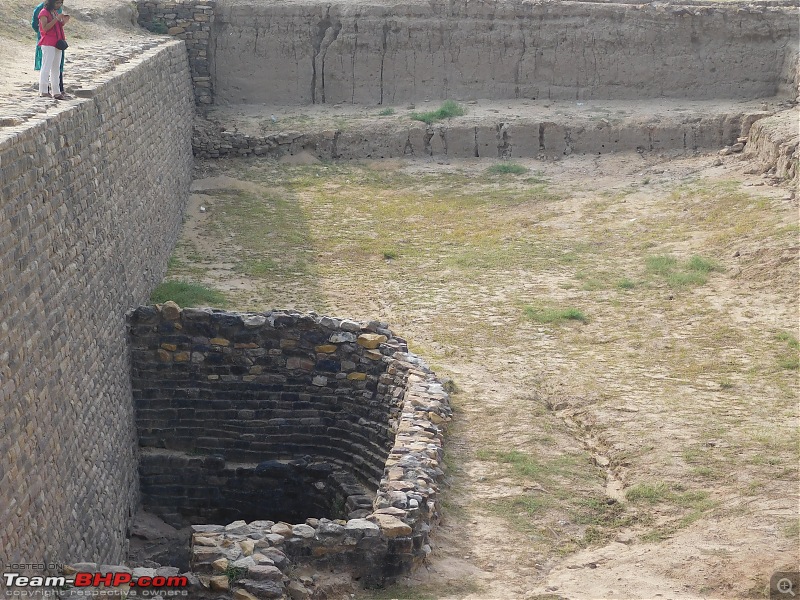 no water anymore 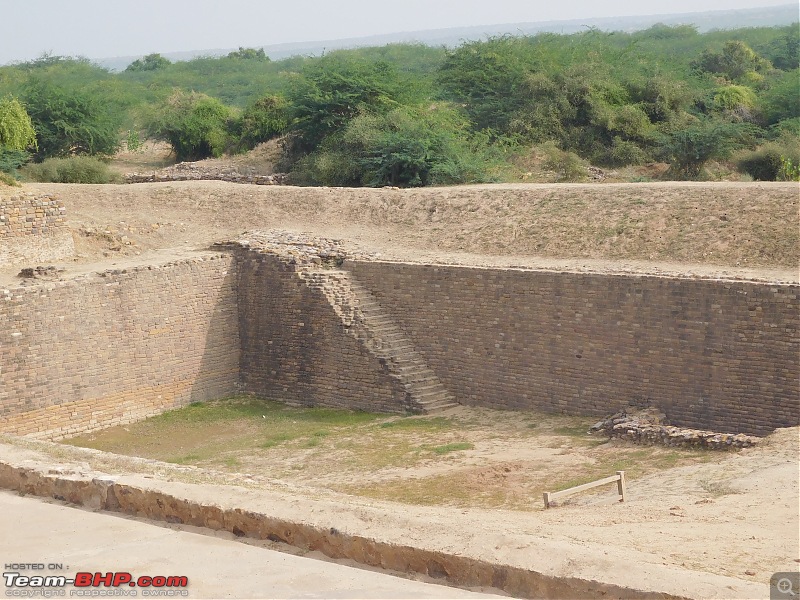 the main tank 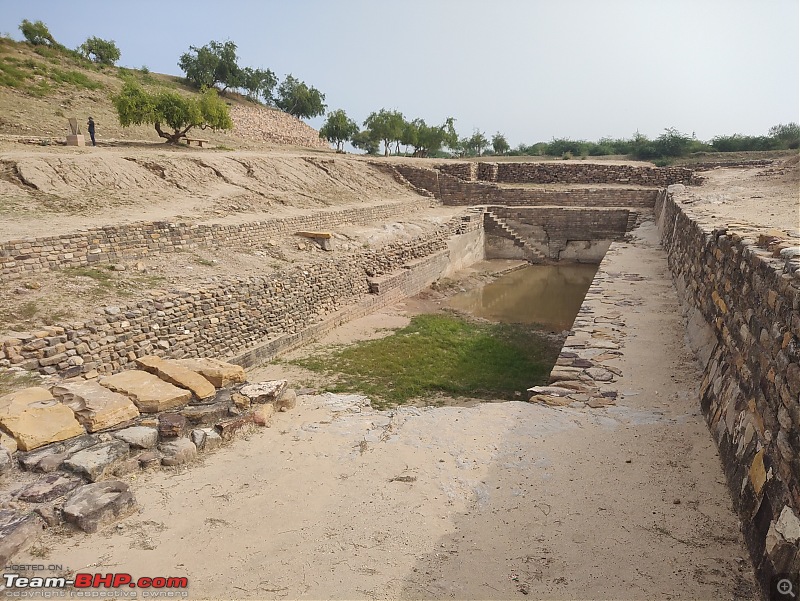 another reservoir Moving on. As you probably already know, more or less every Harappan city has three parts - the lower town, middle town, and citadel. In Dholavira's case, the lower town and part of the middle town has been lost to the elements. But we were in the middle town. This part of the city is in a slightly elevated position, with the colorful stone walls and stairs leading into the citadel. Some distance in, I saw the oldest Bhunga ever. Only the base survived, which was circular and a foot tall. There was also a small stone serving as a table and another one which had to be a stove. I was enthralled. I slowly touched my Bata clad foot to the ground inside the hut. I was trespassing into a man's home! Somehow doing this gave me pure joy. It was like in the movies where you clap your hands and you are transported to a magical place. 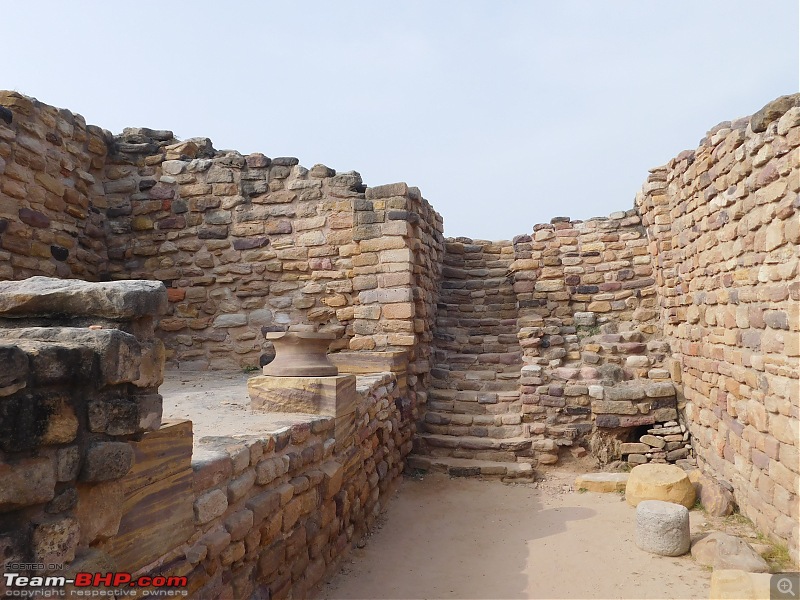 the ancient alleys You know what else amused me? The torn jeans crowd. I saw a group of college students, all with extra puffy hair and wearing foot high platform shoes, follow the lead of a 'guide' with a shirt half open. They were accompanied by a teacher to whom it had not yet occurred that everyone around could hear her, and not just her students, she was talking that loudly. Unbuttoned shirt was saying, ''ye ek admi ka ghar hai. Gol wala. Ye patthar me wo aag lagakar khana banatha tha.'' (''this is a man's house, the circular one. On this stone he would make a fire and cook food.'') Following this the teacher shrieked a completely different translation to the kids. Then they scurried off. I had a vague feeling that they were not intellectually connected to the historic sense of the place. 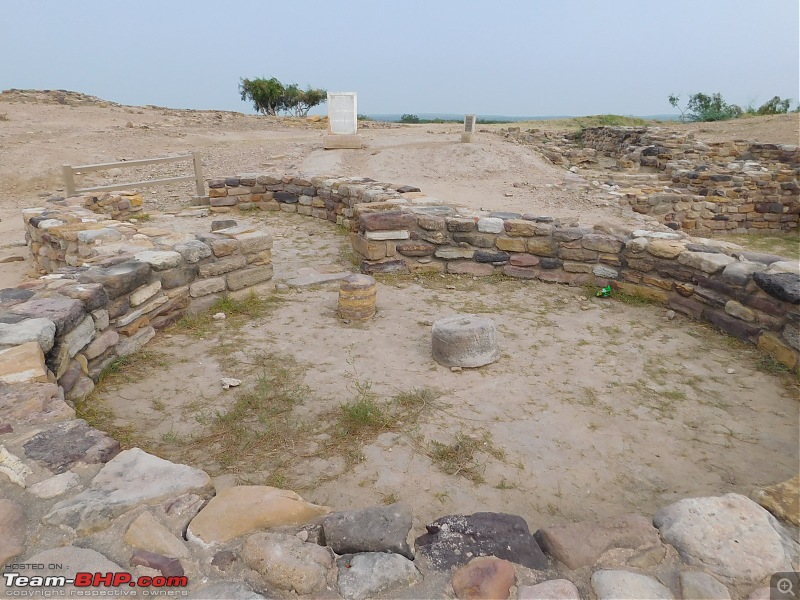 was somebody's kitchen cum dining room And which article about a Harappan city is complete without a mention of its drainage system? The one here is the Mona Lisa of all drainage systems. And literally as beautiful. Perfectly distanced, lined, and smooth canals ran out from the houses and led into covered drains. I could have mistaken it for bricked art. Seriously. 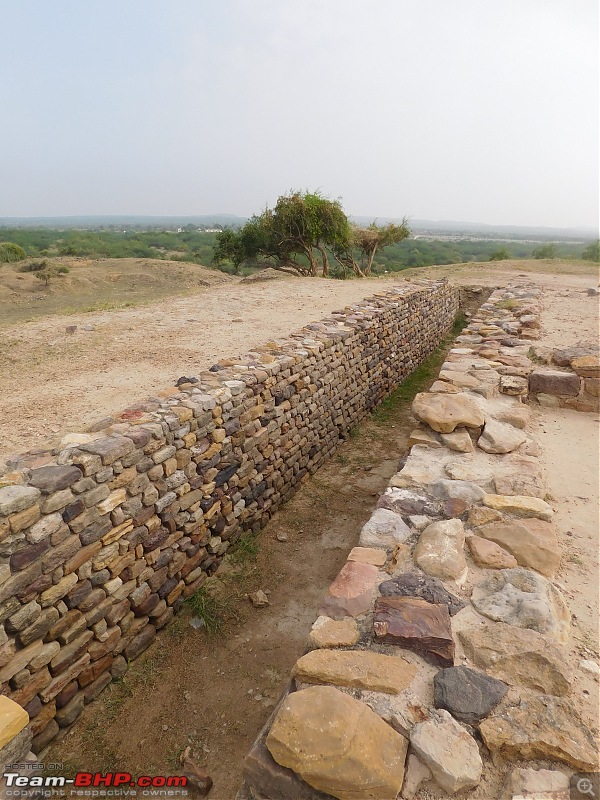 Small granaries and yet more reservoirs followed, each one bigger than the one it followed. There was a bead factory, where beads were handmade. It consisted of two rooms, and a basin. We reached a spot where a signboard said there was an assembly ground. But it was overrun with weeds and we couldn't find any remnants of the stadium. 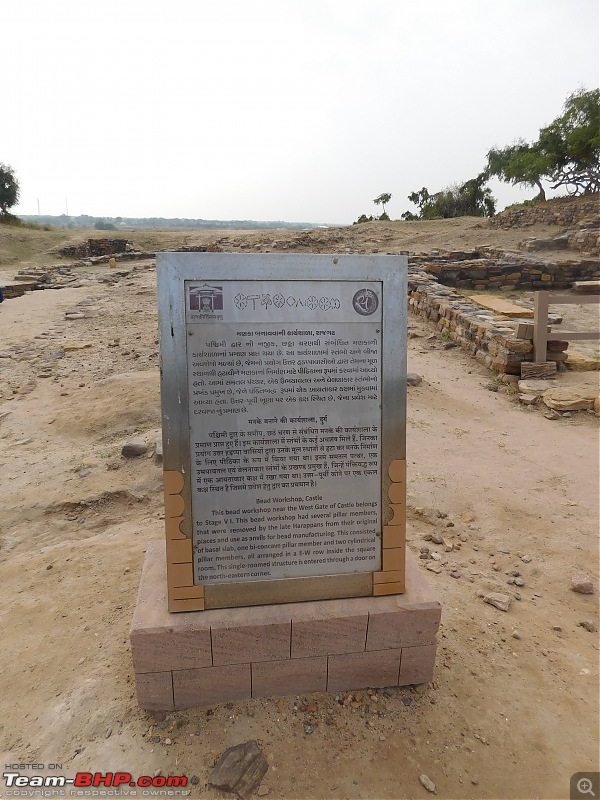 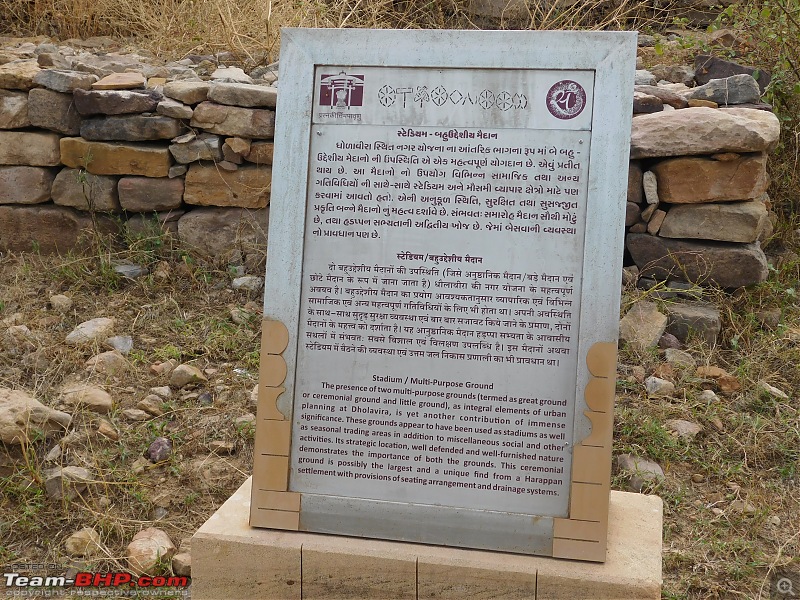 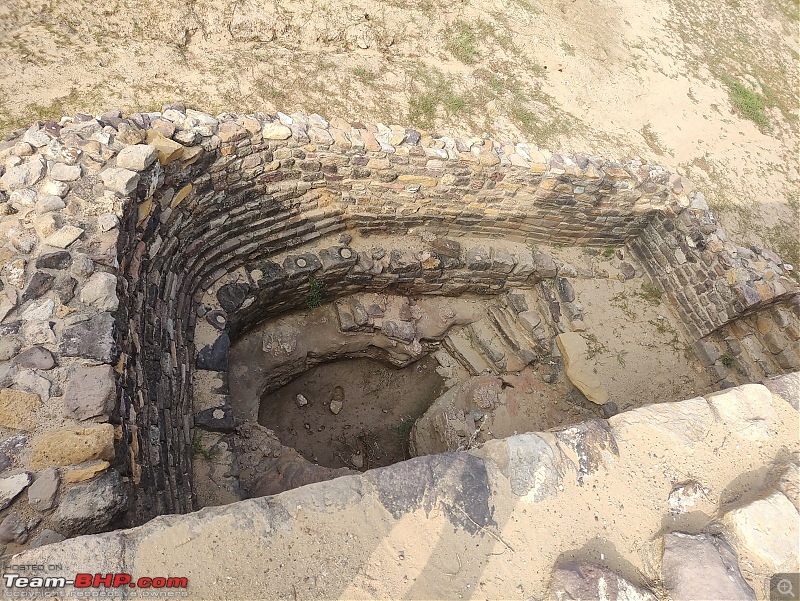 This meant we had finished the citadel and we were headed for the museum next. The ruins had posed more questions and I was looking forward to finding some answers at the museum. Last edited by joyee : 23rd February 2024 at 13:07. |
| |  (18)
Thanks (18)
Thanks
|
| The following 18 BHPians Thank joyee for this useful post: | ABHI_1512, arun_josie, BLACNWYTE, creative420, digitalnirvana, GForceEnjoyer, GTO, haisaikat, hothatchaway, Kkumar, MotorDev, Neversaygbye, parsh, PurpleTitanium, sanjayrozario, subie_socal, thirugata, Voodooblaster |
| | #5 |
| Newbie Join Date: Oct 2023 Location: Hyderabad
Posts: 24
Thanked: 432 Times
| re: Run to the Little Rann, Dholavira and Lakhpat; a journey back in time Day 5 continued - At the museum I really liked the museum. The broken pots, the jewelry, even the broken pieces of stone took me back several thousand years. What they had seen and experienced, the hands they had been in, the stories they told. It was beautiful. There was a show going on too. A brief history of Harappa, how they mastered town planning and traded with kingdoms like Mesopotamia, art, architecture and some more on the Indus Valley Civilization. 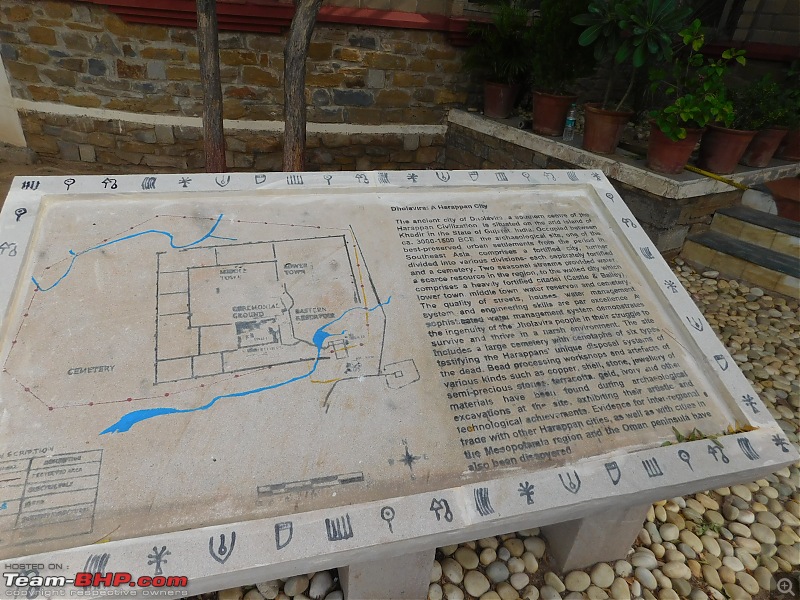 the site plan 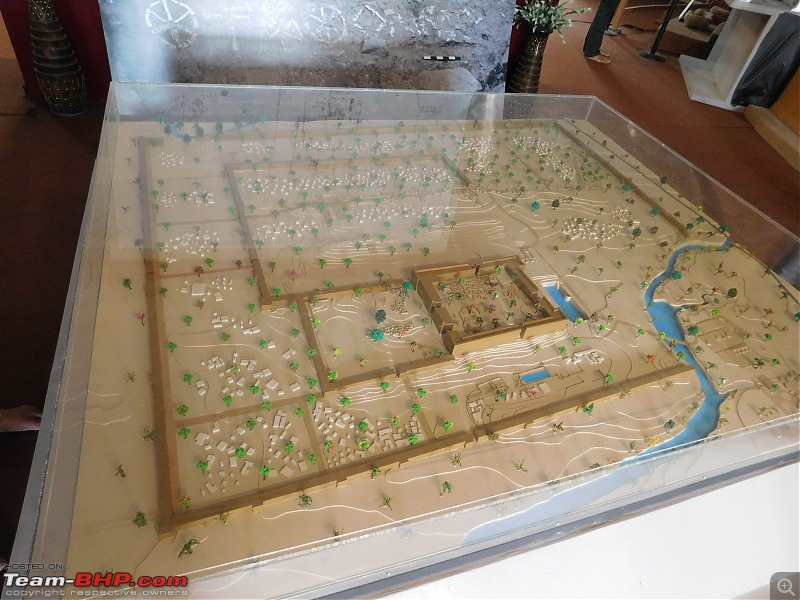 miniature 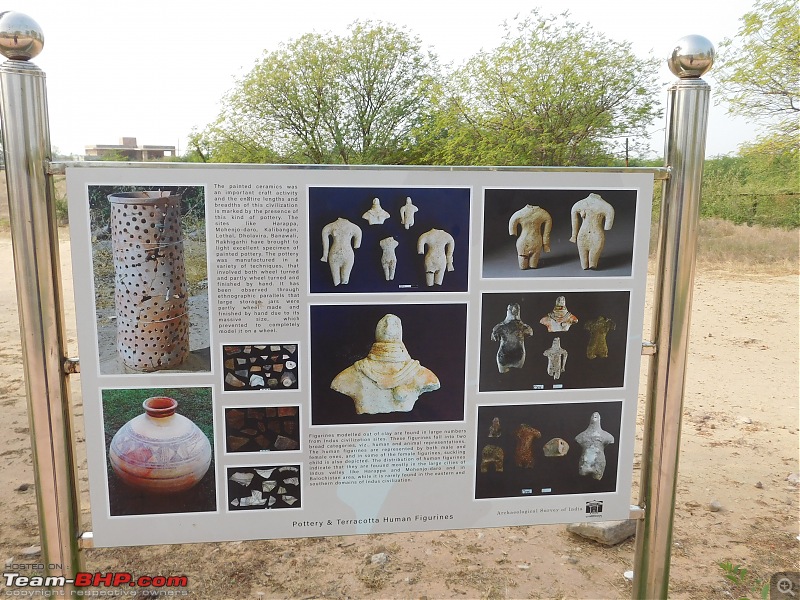 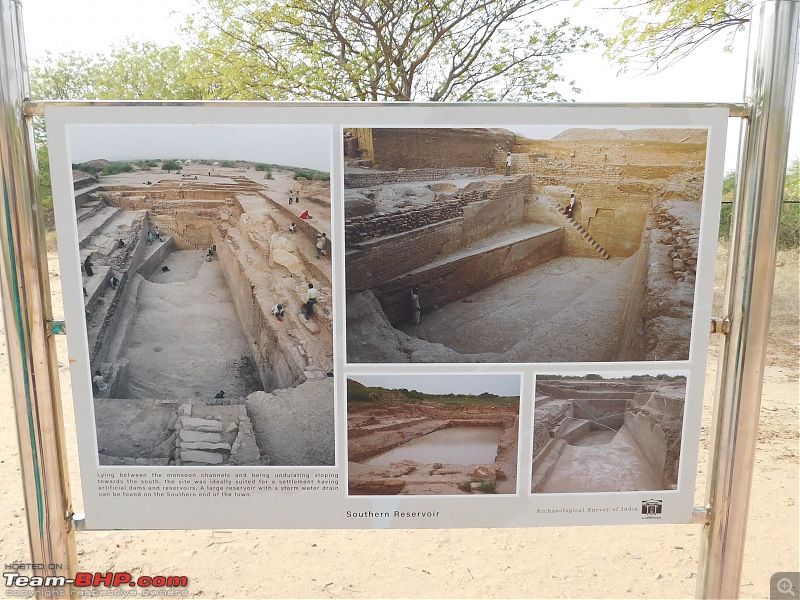 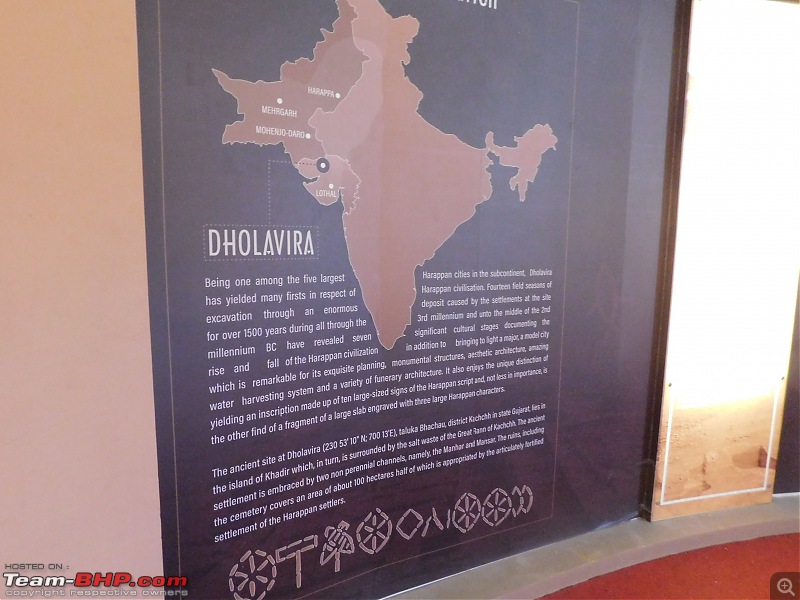 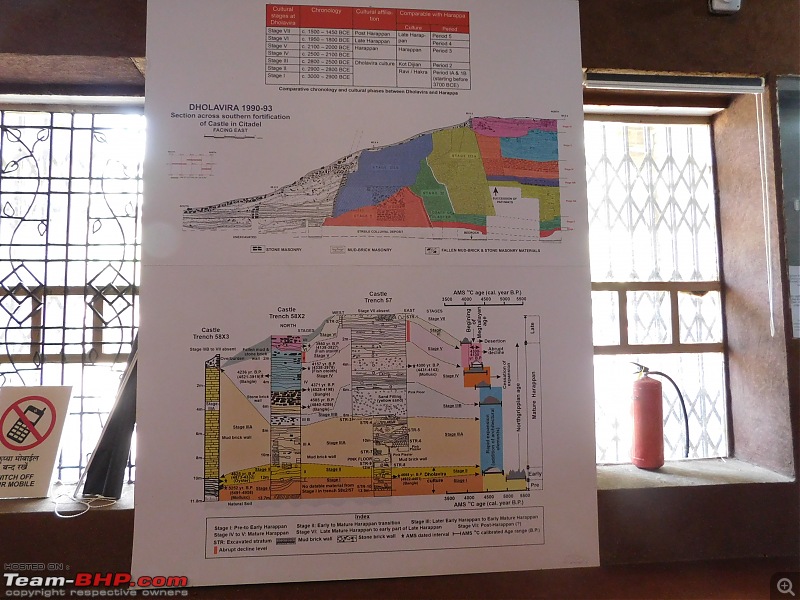 this one is for the nerds 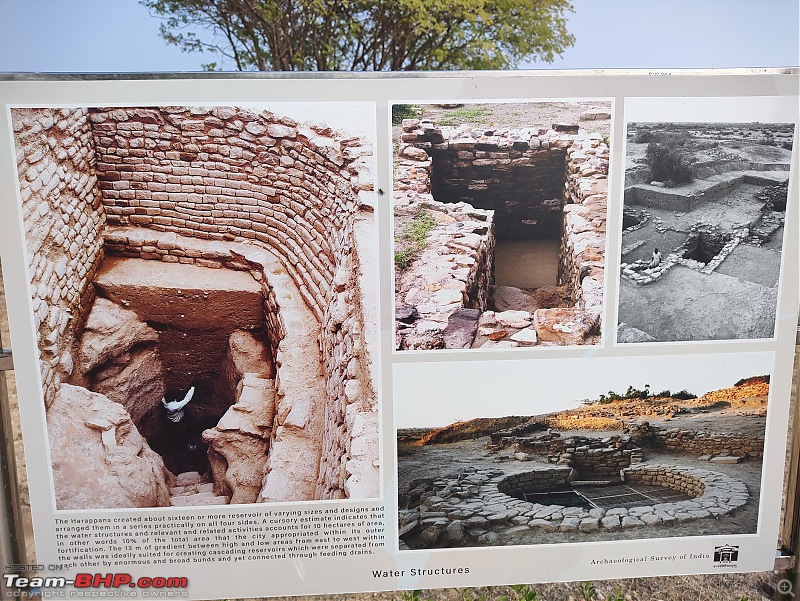 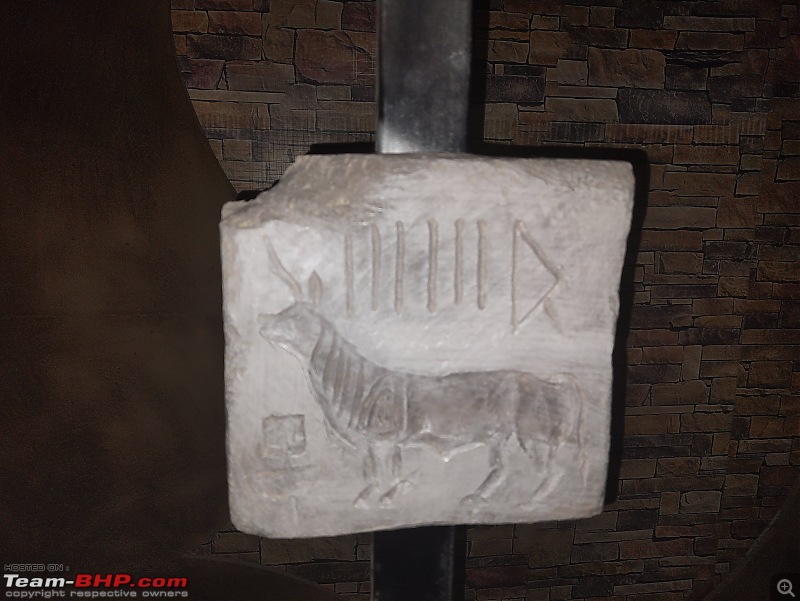 the famous seals of Harappa 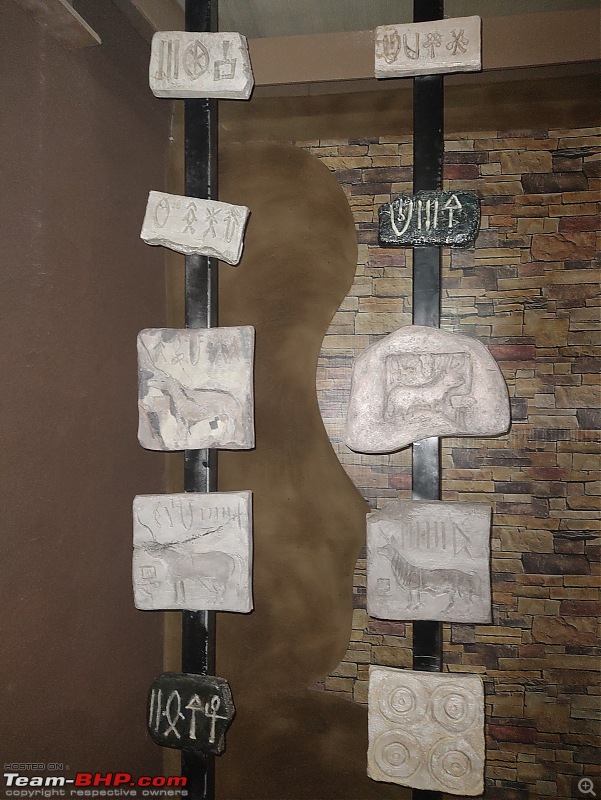 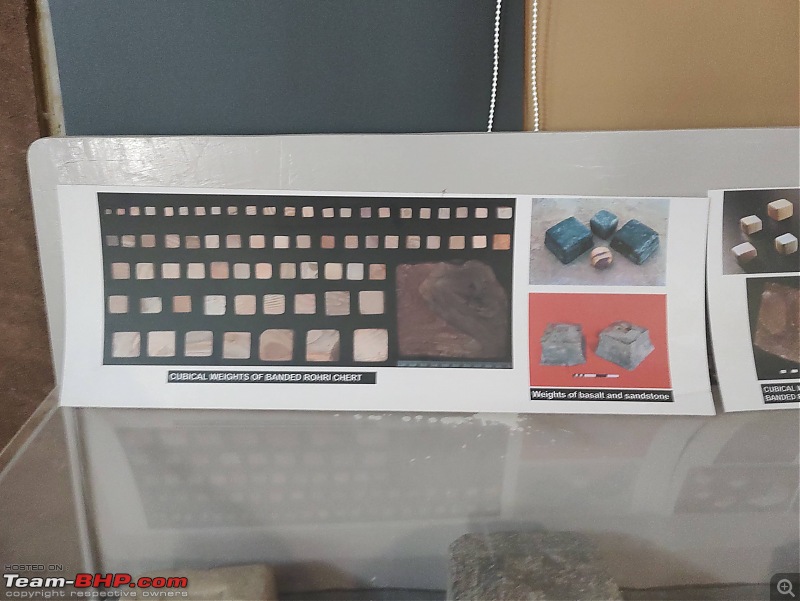 their own measurement standards So what did I learn after coming to Dholavira? To be honest, I think it is very hard to fully comprehend the significance, the beauty, and how amazing Dholavira is. It is certainly not a destination to tick off on some bucket list and a short visit won't do justice. Why? Because this place is so old, everything happened so long ago, it is hard to register. So make sure you spend more time if you come to see Dholavira and her treasures. I'm coming back here again, for sure. And the difference between reading about this place and experiencing it, feeling it, can't be any greater. It is one thing to learn a fact from a book and quite another to put the whole thing in perspective, see the whole picture. Dholavira is the biggest example I can think of. 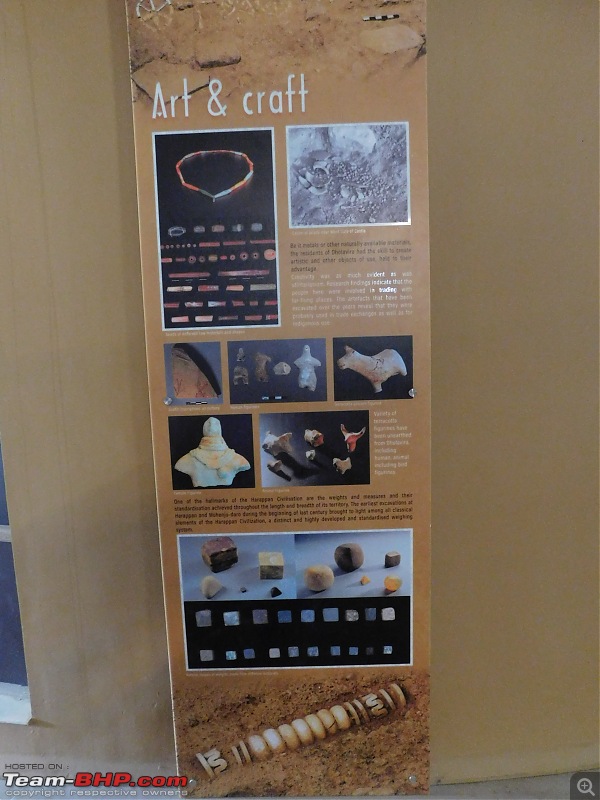 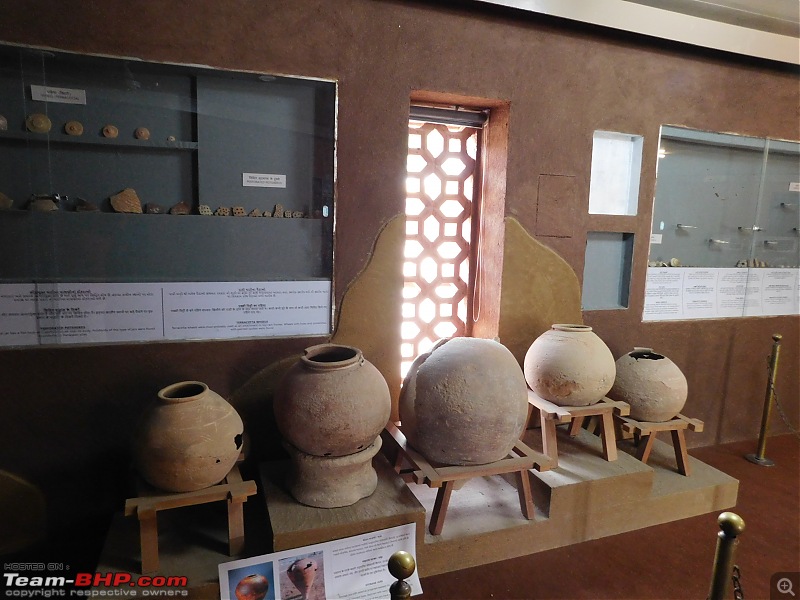 pottery 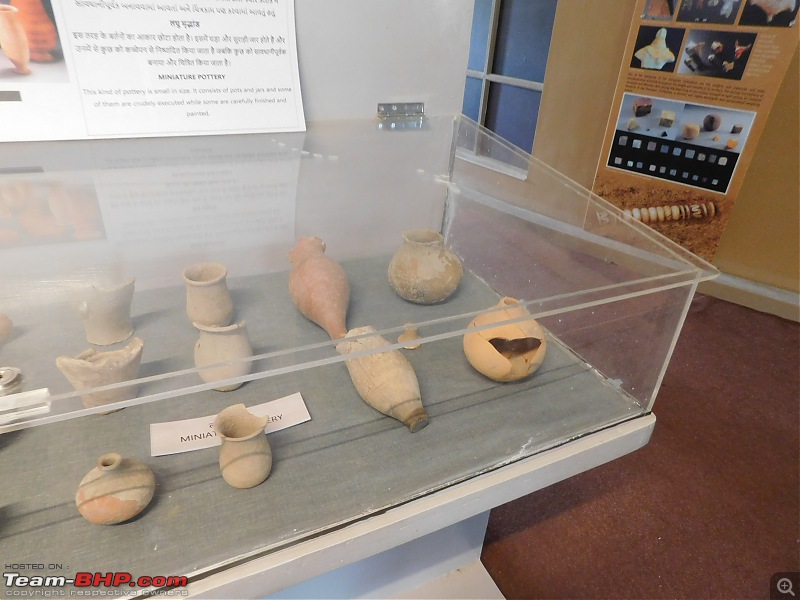 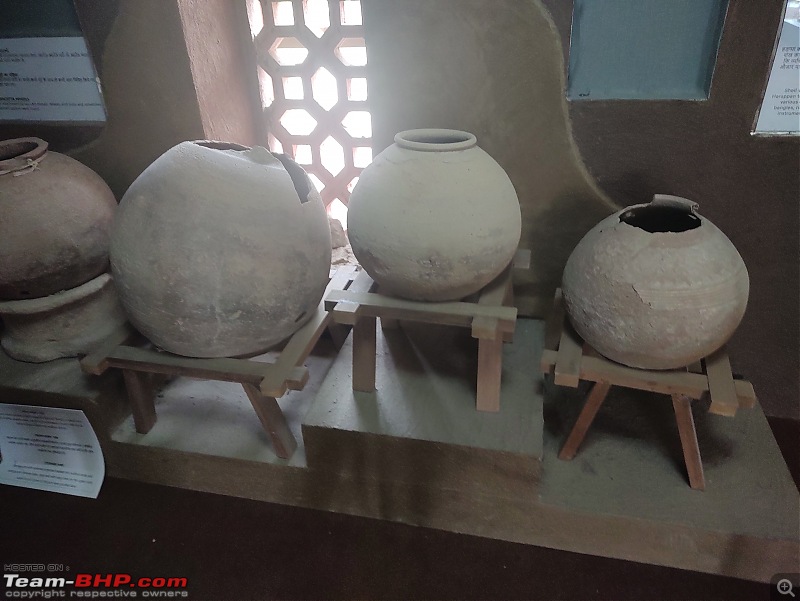 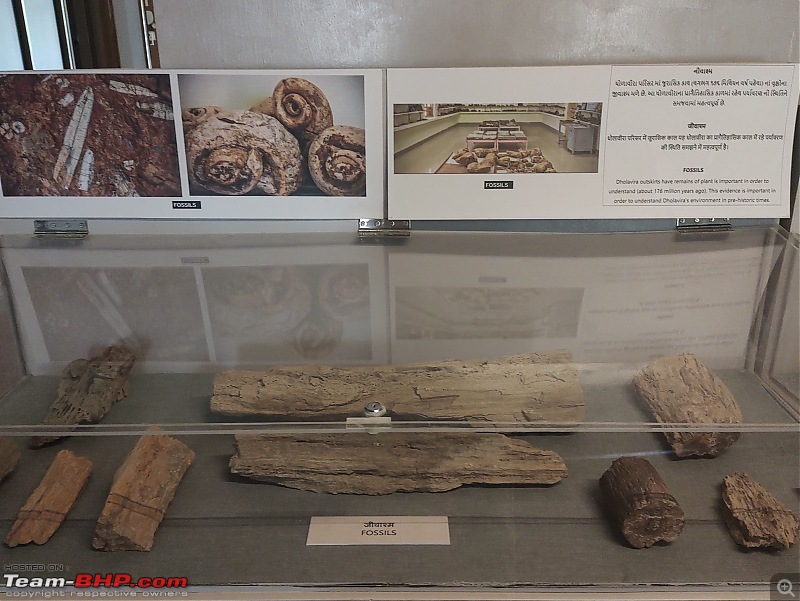 Something which my father said that day was very profound. For some reason I was a little underwhelmed after seeing the Dholavira ruins. They were no majestic structures of great artistic beauty, like in other civilizations, such as Hampi or Egypt. It was all too simple. But what is remarkable about the Harappans were how precise they were. They made weights and measures and created an entire standard, like our metric system. Picture this: they had just started to live together, to form something called a society. And in no time, they had formed an advanced mathematical idea. Isn't it wonderful? Math came first. The Egyptians painted, made tombs, and indulged in faith and God because they had the luxury to do so. They had fertile land irrigated by the Nile, plenty of food, good resources and wealth and nothing to worry about. But the Harappans had come to settle here in the middle of nowhere, where water was scanty, greenery was sparse, and the climate was harsh. They had to survive. And somehow, these people actually flourished to become one of the most unique civilizations in the world. Not only did they survive, but they also thrived and traded and co-existed with the other great kingdoms. But even more remarkable is the way these people lived. They made the best of everything. They kept their homes and cities clean, they used water efficiently, and existed in harmony. They had no king. Everything was managed by the elders and the cities had their own systems of ruling. There was no central agency and power was equally distributed. In short, the Harappan civilization had developed something which has taken the world thousands of years to even appreciate. Dholavira is a gem of a place. I will never forget this city and its ruins (mind you, I'm quite forgetful). I think that you should come here at least once in your lifetime. On our way out of the main gate and into the small town, we met a family in a big car with many kids and suitcases. Conversation in Hindi between my dad and the gentleman driving the other car: (The other guy speaks first) ''Is Suigam ahead?'' (Dad, taken aback) ''Suigam? The Suigam near the International border?'' ''Yes,'' he says. After a long pause, dad said in a very grave, somewhat excited tone: ''Aap toh bahut galat aa gaye!!!'' The poor man nodded, almost in disbelief. ''You have missed your turn and have literally come a 100 kilometers the other way'', my dad said. The man almost broke into cold sweat as my father's voice became even more disbelieving. After exchanging a few more words to the effect (more from my dad, since at this point the man could only nod) The other car drove off, its driver still nodding in denial at such a Himalayan blunder. I shudder to think what his wife would have done to him after we left. But the mistake may have been ours, not his. You see, the final route to Dholavira is off the main road leading east to west towards Bhuj, so the other car may have been coming from Bhuj, ie west to east and they may have just taken left, onto the route to Dholavira. So they could just turn back, then left, and continue East towards Suigam. Or they could have continued straight to include Dholavira, which I would have recommended if the conversation had not taken such a horrible turn! For about an hour after we saw the man drive off in disbelief, the adults in the front seat kept returning to the conversation, my dad still shocked at the fact that a local (the car's registration was GJ) could make such a navigational blunder in his own land. But it didn't dawn to him before the next day that the man may not have been so lost, after all! While I felt sorry for that man who looked close to crying, my parents just kept laughing as if they had just told him that he was on the wrong aisle in a supermarket. Road to Heaven After bidding goodbye to the ruins of Harappan Civilization, we drove towards Bhuj, where we planned to stay for the night. It was in the afternoon when we got on the newly constructed Road to Heaven, which connects the Khadir Bet island, the one Dholavira is on. This road has improved the tourism to Dholavira by making the trip shorter and much easier. The road was about thirty kilometers long and very beautiful. Dark tar road heading straight into the sky (hence the name), with bright blue water rippling on either side. A lot of it was still under construction, but that work would have finished by now. Had we come here sometime in June the place would have been the vast and empty stretches of parched soil coated with white salt which the Great Rann of Kutch is famous for (Rann Utsav). We spent a lot of time tossing stones as far as we could into the water; dad showing off his bowling arm and my mom flinging it sideways. Of course, I wasn't perfect either - I nearly fell into the water trying to look like a shot-put athlete. We spent the rest of the drive with Axl Rose, REM and Steven Tyler crooning away songs from fifty years ago. 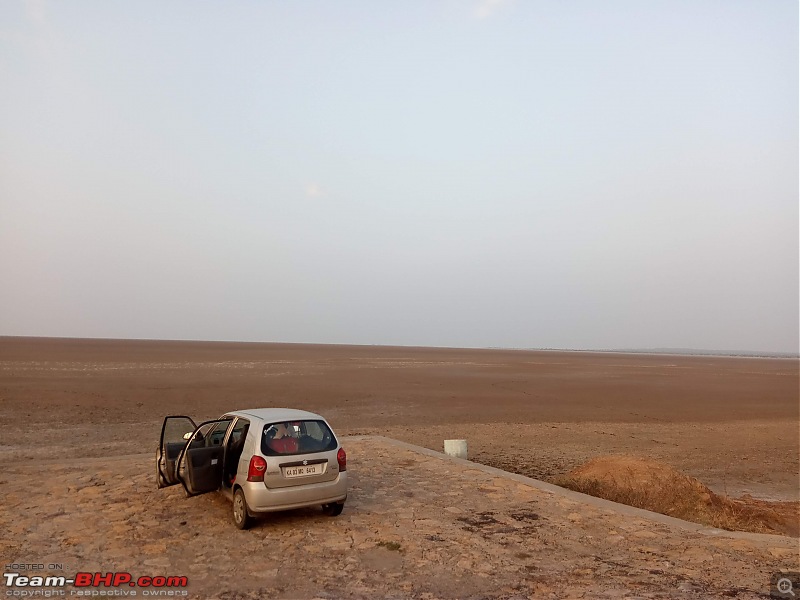 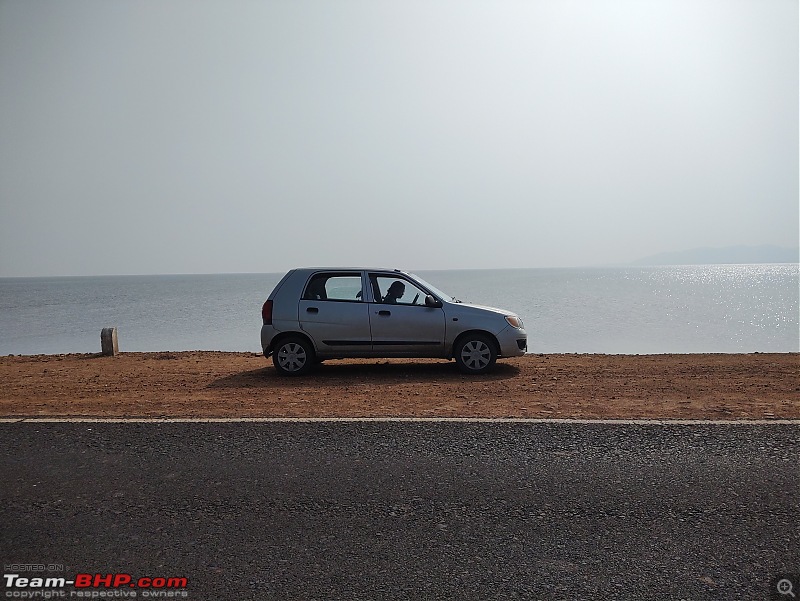 what a drive it was! Late evening, we reached the Kori river canyon, which is in the outskirts of Bhuj. It was formed by a stream and the canyon was a small one. Despite it's size, it was quite beautiful and pleasant to spend time at. But we had to get going, so we left after half an hour. My dad, always planning on his smartphone when not driving, had found a nice rustic resort at Hodka, not far from the tent city and we decided to drive there for the night's stay instead of a hotel at Bhuj. So after a long day, we drove into this small village and into this colourful resort which resembled a Kutchhi village. We had a sumptuous dinner of roti, khichri, kadi, dal, sabzi and papad and after going into a mini coma on my khatia, I dreamt of a Harappan man with his bead jewelry use a smart phone as a chopping board. Traveler's sleep is the best kind of sleep. 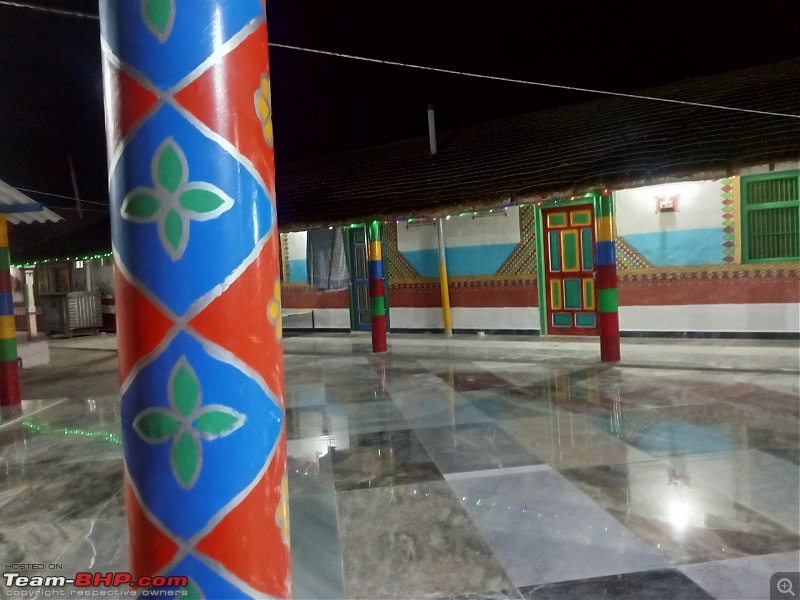 my dad has this knack of finding some incredible places to stay 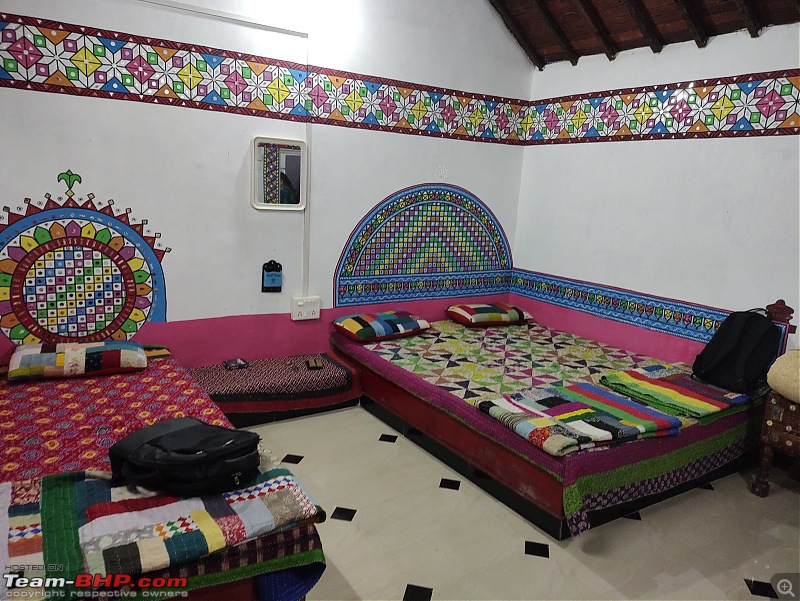 Day - 6 The Handicraft Village and a Shocking Discovery Today we were going to drive out of Hodka to explore the west coast of Kutch. We were to visit the lost coastal town of Lakhpat and drive to the western most point in India. But that will be in the next post. The rest of the post will be about a delightful discovery! A little way out on the road west, lies the village of Nirona, which is well known for its handicraft heritage. Many families have been doing the same metalwork, woodwork, lacquering for generations. We decided to pay this place a visit. Nirona, and its artisans A little way into the town, with dusty paths and leaning houses with winding paths, we reached a small courtyard where a few other tourists were already sitting on a bench. A very fair man was sitting in the center on the floor with a tiny table and a black cloth in front of him. With an iron stick as thin as a match and three inches long, he was carefully whisking up a colored gum like substance and using it to color the cloth. As I came closer, he was actually doing something much more difficult. He first applied a green colored paste on the muscle of his palm, rolled it up onto the stick, so a bit stuck out and would come off on whatever it touched. With this twist of gum, he was carefully outlining a design onto the cloth, much like writing on a cake. He then flattened it, so that it formed a very beautiful flower. It was a very painstaking process, and the results were certainly worth it. The man said that this was called Rogan art and that his family had begun doing this in Persia, before they migrated and continued to practice in India for eight generations. The paste is made from castor oil, thickened, and colored with vegetable pigments and it was absolutely beautiful. After finished the design he was doing, the Roganist bhaiya showed us some framed exhibits of finished pieces of art - many of them pictures of the Tree of Life. There were scarfs, purses, saris which were for sale, one of which we bought. There were also certificates of winning awards, the family being congratulated by the Mr. Modi, and some more. The recent G20 event which happened in India also highlighted this place. After seeing all this and shaking hands with Roganist bhaiya, a local man led us to a similar workshop. Inside was a mesmerizing workstation of a metal worker. He was very old with an orange beard and a skullcap, and on the floor before him were discarded metal tin cans. Slowly, using only a hammer and a wrench, he turned the lids into a little bell, with a wooden dong inside it. In every corner of the room, on the walls and in boxes on the ground were all sorts of copper bells, chimes, toys, wall hangings, mirrors, diyas, stands etc. It was like being in a little magical hut of a wizard filled with many wonderful, ancient things. These were all made from discarded tins, machine-parts, and utensils. We sat on a wooden bench as the metal worker shaped another tin bell, his hands as crafty and nimble as they would be from decades after decades of practice. There was no welding or fixing - everything was shaped by a hammer. The man had a very bright smile on his face as he showed us the bell. His son and helper in the shop told us that each bell would make a different sound depending on its length, the weight of the dong and how hollow the bell is. He was also a good salesman - he sent us home with a beautiful chime which made bird sounds and a miniature motorcycle, both of which had a burnt, antique feel. 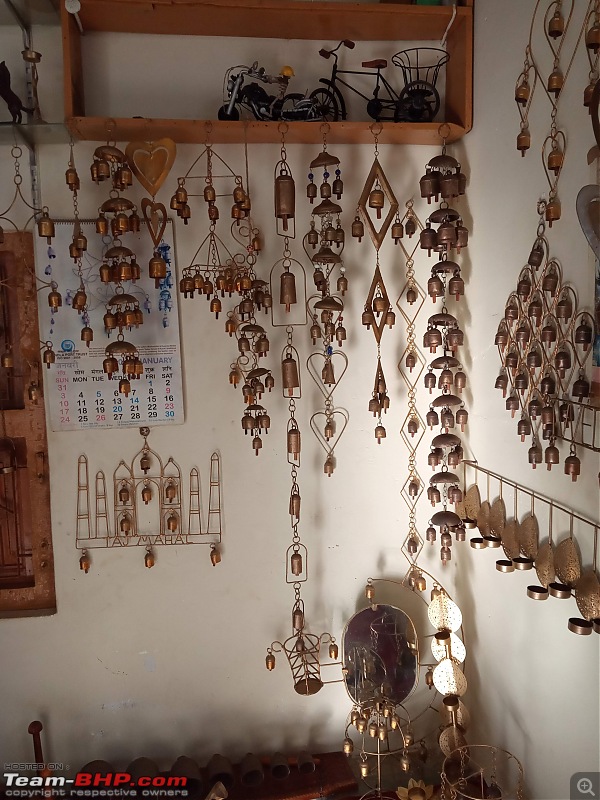 the metal workshop Our guide then took us to a lacquer shop. This was deeper into the town, and on the street were scattered with little stray puppies. I am smiling as I write this, because the puppies were so unbelievably cute and I remember resisting the impulse to pick up one of the pups and run home. I tore myself away from them and did that lame jog that all of us kids do to keep up with our parents. This time, the shop was at the veranda with a small machine. The machine was foot operated, and made with a bit of wood and thread. A man came and sat on the veranda, and brought out a rolling pin - the ones we use to flatten the atta for our rotis. The handles were decorated with bright colors and looked painted. But therein lies the rub, said the man. He took out a plain rolling pin and some turmeric, multani mitti (fuller's earth), green plant substance, and some indigo. With that he attached the rolling pin to the machine and pedaled the instrument. The pin was now spinning - or rolling, if you may, at a significant speed. Then, he proceeded to use these four ingredients to apply the different colors to the articles, row by row, by holding them to the pin. The turmeric stone applied to a solid yellow, the multani block gave off a bright pink, the green resin some of its green and the indigo a full blue. He used his finger to smoothen the colors and give them a polished finish. Then he used a piece of thread to drag the colors and form little designs, much like the ones you find on the foam of your latte. he did this on both sides under three minutes. He presented the rolling pin to us. It was beautiful - the colors were bright, the design well done, and finish smooth. It looked painted, but it was actually lacquered. Just beside his hut, there were dolls, rolling pins, bead jewelry, and more lacquered artifacts which were quickly set up seeing that tourists had arrived. Unfortunately for them, we didn't buy anything and left the shop. 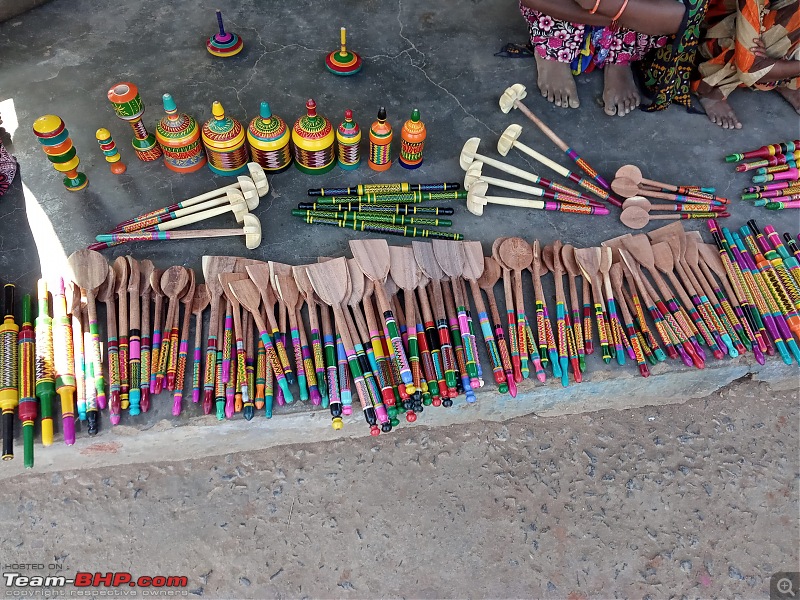 On our way out, the guide persuaded us to visit a garments store. Me and mom went in together. And there I witnessed a miracle. Maa had found her match in a salesman! Here's a little background for you to understand. My mother can be the most brutal and notorious customers when it comes to bargaining, a result of being to shops in the most touristy places in India and also knowing shopkeepers inside out. Its in her blood. When a street seller on the street wins me over with his words and convincing chatter, my mother stays put on her base price. She is such a good negotiator, that even though the price she wants for something seems a little too low even for me, the shopkeeper is forced to let go of his idol or sculpture for an amount which may be a tenth of the price he named. It always works if Maa if she likes the article on sale. There is not one salesman which gets away with an inflated price with my mother. But in this shop of the village of Nirona, the two salesmen were so talented that even Maa couldn't win over everything. She did get a reduced price, but she ended up leaving with a lot more than she wanted and, believe it or not, also getting added to the shop's WhatsApp platform. Shocking! But I was happy. We bought some traditional bedlinen, a kaftan for me, a Patola sari (not so costly because it was made of substitute silk), and a set of Kurta pajamas. Nirona was a gem too. I loved the place, and if you're on a trip to Gujarat, do try and visit this lovely village. The Paleontology Museum While doing some research on places to visit in this trip, my dad had read about some dinosaur fossil kept in an unnamed village in Kutch. A few kilometers out of Nirona on the way to Lakhpat, we saw a signboard at a crossroad which read "Fossil Museum" We were intrigued so my dad stopped the car and checked with a shopkeeper if indeed there was a museum down the unnamed road. He nodded even though he himself had no clue on the nature of the exhibits. Always on the lookout for an adventure, we turned into the village road and were shortly at the gates of the Kachchh Fossil Park. There was nobody around - just the gate attendant who helped us park next to the garden outside. The actual exhibits were inside a single storied hall which looked shabby. Inside, to my great surprise, we saw volcanic rocks and ancient fossils which actually had small ammonites within them were kept out in the open, exposed to the elements. The gate keeper called the attendee, a young man from a nearby village, to take us inside the museum. We found that the doors to the hall was locked, but it took only a little persuasion for him to open them for us. Inside the hall, I saw shelves on all the walls, and large tables in the center. 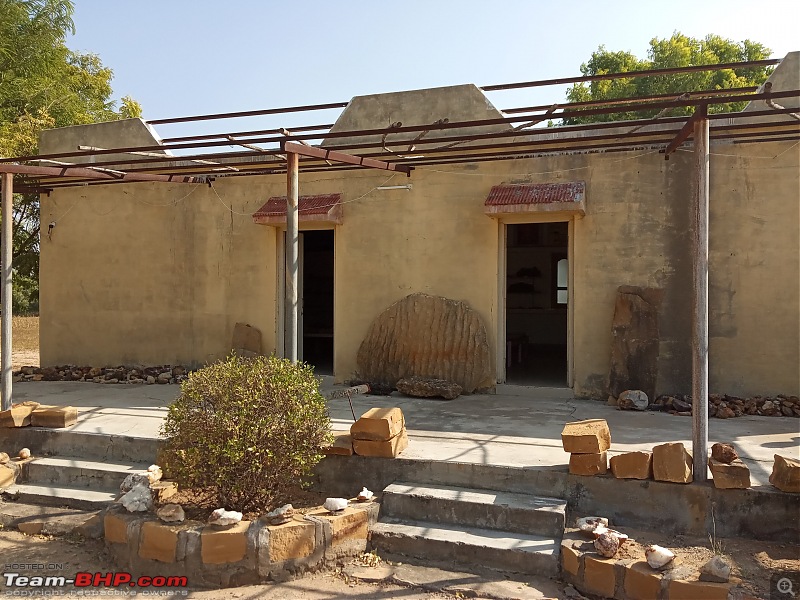 the actual museum hall, looks like it was bombed in the past! Arranged on the shelves and in the glass covered tables were treasures of the prehistoric world. Hundreds of ammonites, from big to small, sea plants, imprints of molluscs and trilobites, sea urchins, corals, fish imprints, fossilized remains of fish and tube worms, which could date back to the beginning of life on Earth. Dinosaur teeth, and rocks and stones which probably date back to the birth of our planet. These were just scattered on the shelves. They breathed the story of a different age, and a different Earth than the one we live in now. It reminded me that our time on Earth is merely a few minutes compared to what these stones have lived. And to think that I could have just touched them then and there! They were completely exposed to the environment - only a precious few of them would have had a glass covering. Here, in the middle of nowhere, I had stumbled on this enigma of a place, a gold mine to the world of science, deserted and withering in the wind. 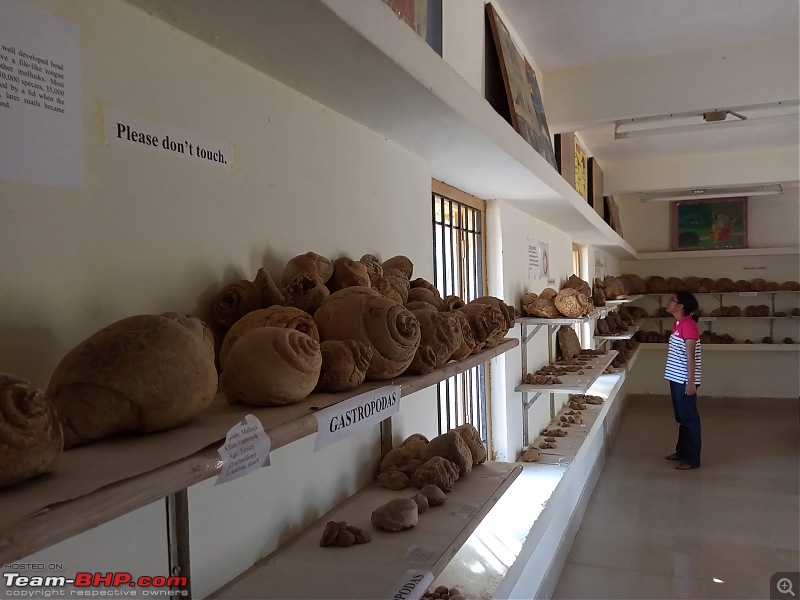 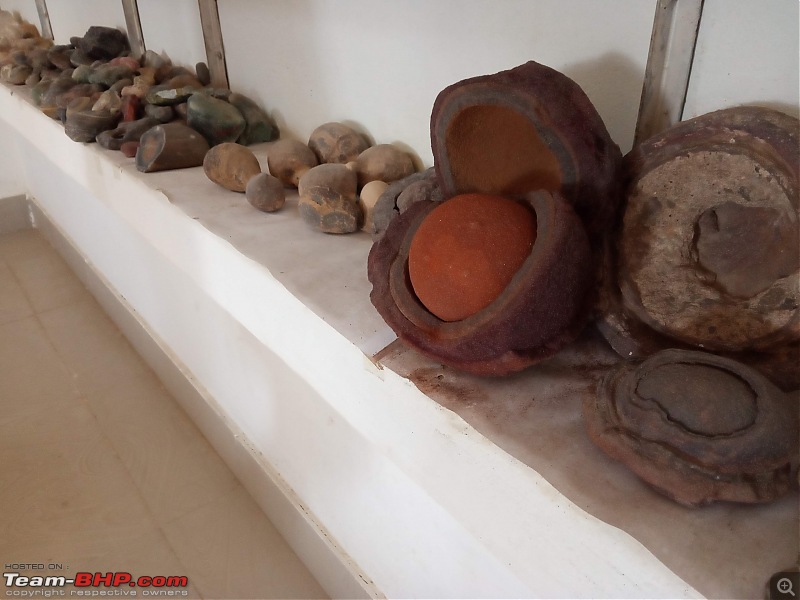 the exhibits 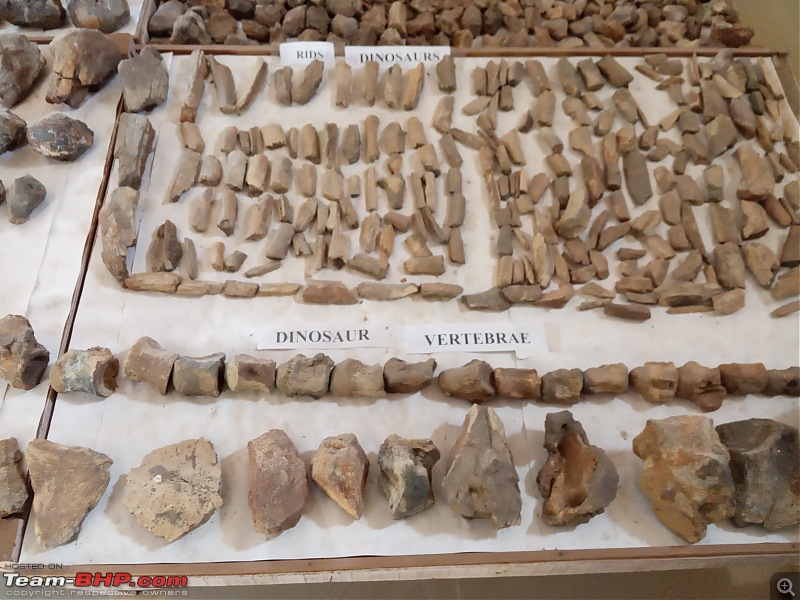 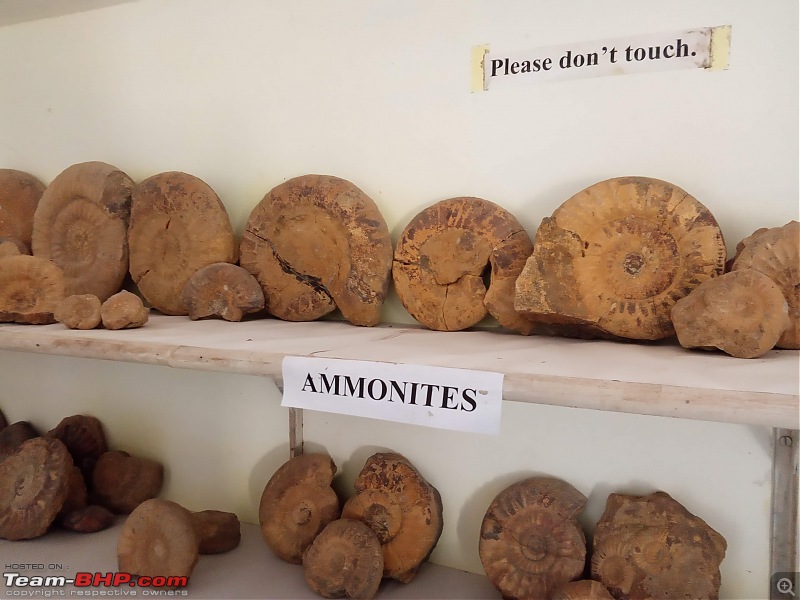 We learnt from a piece of paper which the museum guy had given us that this collection was thanks to an Indian army officer posted in this part of the world in the 60s. He had a keen eye for such stuff and Kutch being a goldmine for fossils, he picked up whatever he found while out on the field. His collection grew to a thousand unique pieces over the duration of his stay here, so he decided to hand it over to the government for it to be used for research. After this was done, they kept the collection here, where it was categorized and labelled. It is hard to imagine such painstakingly collected natural treasure being ignored. Here they had all the ingredients, but it looked like we had come upon a warehouse of old stones. This place filled me with wonder. 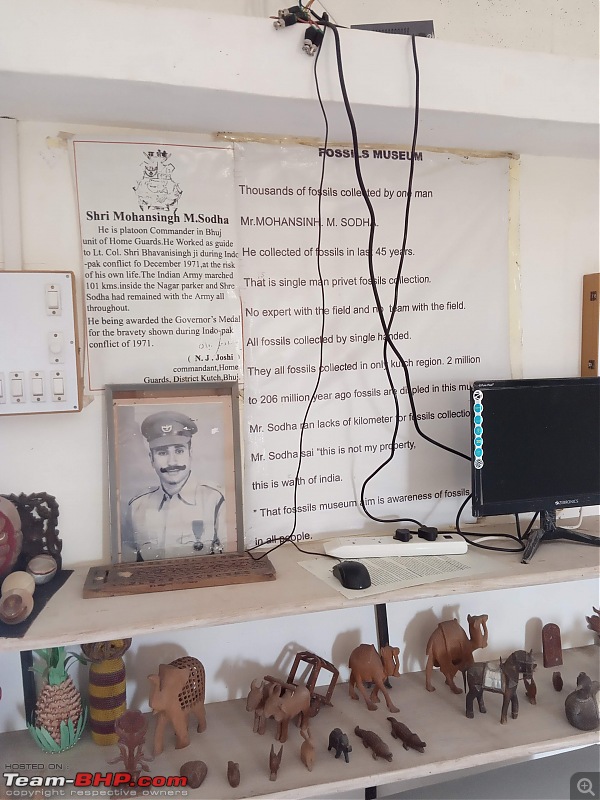 A salute to the man who tirelessly found these treasures On our way out, I found an ancient stone which was kept on the verandah. I picked it up and wrapped it carefully in some tissue paper. I can see it now, sitting comfortably in our bookcase. It's probably ten times better off than its counterparts in the Rann of Kutch. Stay tuned for the next post! Last edited by joyee : 26th February 2024 at 14:37. |
| |  (23)
Thanks (23)
Thanks
|
| The following 23 BHPians Thank joyee for this useful post: | ABHI_1512, arun_josie, BLACNWYTE, creative420, digitalnirvana, GTO, haisaikat, hothatchaway, Kkumar, masterChief007, MotorDev, mugen_pinaki27, Neel70, Neversaygbye, One, parsh, PGNarain, punchthebully, PurpleTitanium, sanjayrozario, thirugata, vishal.jayakuma, Voodooblaster |
| | #6 |
| Newbie Join Date: Oct 2023 Location: Hyderabad
Posts: 24
Thanked: 432 Times
| re: Run to the Little Rann, Dholavira and Lakhpat; a journey back in time Continuation of Day 6: The Lakhpat Fort & the Westernmost point of India Matanamadh Leaving the fairyland of Nirona and driving for a few hours through the thornbush landscape of Kutch, we reached Matanamadh, a well-known Hindu temple. The temple had a traditional geometrical tower and pavilion. It was a pale brown, and in the midday sun, people were crowding around its flesh-colored walls and pillars to dodge the heat. I kept hopping about - the floor was baking my bare feet. But it was a relief when I was on the marble inside the temple. I must say that that marble is really a marvelous thing. Even in the hottest of sunlight, its soft, transparent 'coolness' just reaches through your skin to cool the rest of you. Everywhere there is marble, a cool breeze accompanies it. And I'm not talking about the half-marble that tile companies use - the pure, I've-never-met-ceramic marble which is so common in medieval Indian architecture. The inside of the temple was common enough. But the idol was what caught my eye. Ashapura Mataji, a goddess which the Rajputs believed in, seemed to have four eyes - two above the other two. She was robed in red and colorful flower garlands hung from her neck. The place had a calming feel, that was quite different from the angry sun and rugged landscape. The Lakhpat Fort An hour or so after the Ashapura Temple, we reached the medieval walled town of Lakhpat. Inside the now lost village, there is a fort which once used to serve a bustling port town, where ships used to come in day after day from faraway lands. Goods were brought in and markets set up here. It was built in the start of the 19th Century by Fateh Muhammad. For a short period of time, this fort served as a very important trading post, but an earthquake disrupted the course of the river Indus - the river which connected Lakhpat to the Arabian Sea. Thus, Lakhpat lost its importance as a port town, and faded away after only after a brief spell of prosperity. 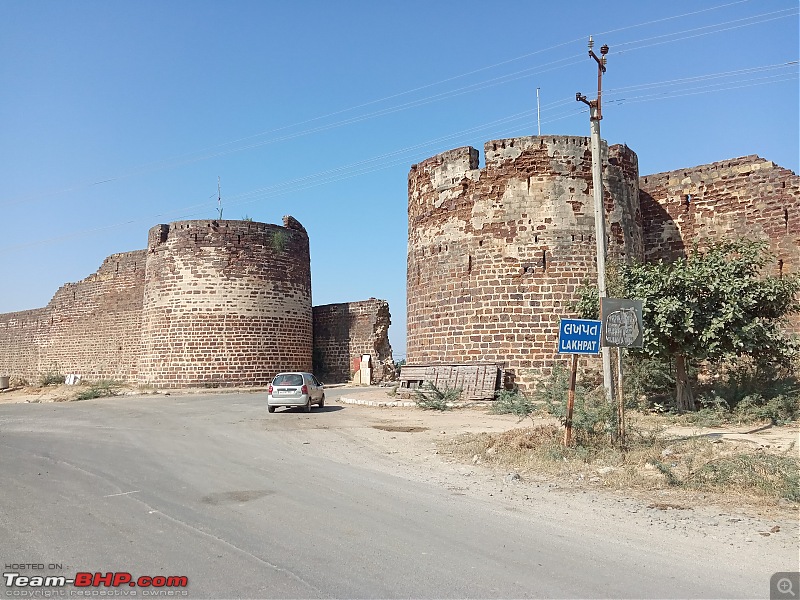 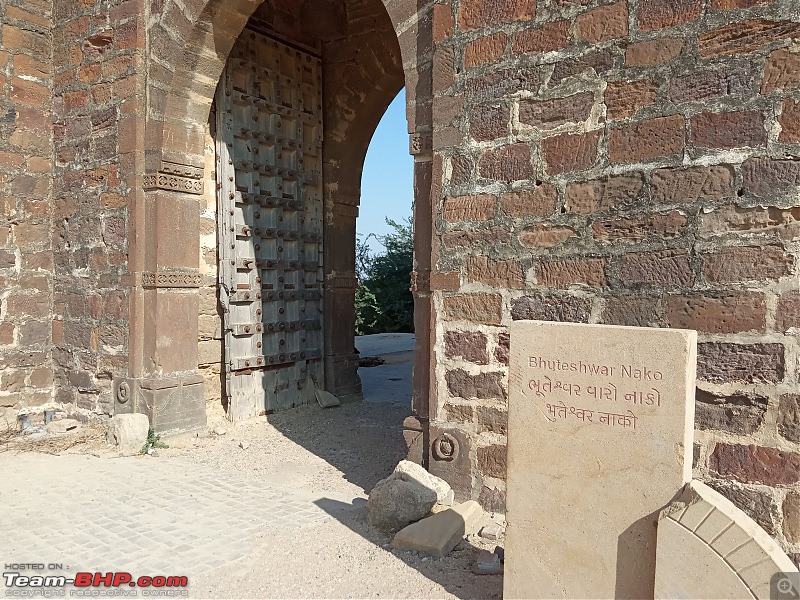 But today, the outer wall of the Lakhpat fort rose up from the windy, flat and sunbaked terrain of the Kutch. This was a new kind of fort to us - rather, the only thing that was left of it was the great wall and a few spread out ramparts from its maritime years. It was spread out over a very large area, still had a couple of its watchtowers standing, though now falling apart. It was just this long and massive wall, the blue sky, and the salty emptiness. We climbed over to the other side of the fortification. The view from the top of one of the bastions was stunning. Unfortunately, my mom urged for us to get out of there quickly since me and my dad was making these foolhardy attempts to climb up and sit right at the edge - but I must admit, the feeling was just breathtaking. Not to mention that I felt exactly like that egg called Humpty Dumpty. Then we got down the wall and onto the mudflat. In the wind of that great shade of the wall, one could see the vast stretch of cracked earth, which once was under water and welcomed massive seafaring vessels, decked with stories of some past or soon to come maritime adventures. A distant ribbon of grey glittered in the distance, indicating a faraway Arabian Sea. A tiny, barely distinguishable building at the shore may have been a check point for the ships. This was the emptiest Kutch that I had seen. I felt like on a huge, cracking magic carpet under the great blue dome of the sky. As I headed farther out, a strong wind cut me out from my companions, although they were but a few feet away. Pushing through, I found a perfect circle, made with an outline of rocks. They were so spaced out, the circle so large, and the place so strange, I could not but feel that some being not of our world, had stepped onto this special part of India. Even with the wind whistling into my ears, there was this silence; the kind one finds when some mystery seems to enshroud such a place - a place so open, so full of nothingness. 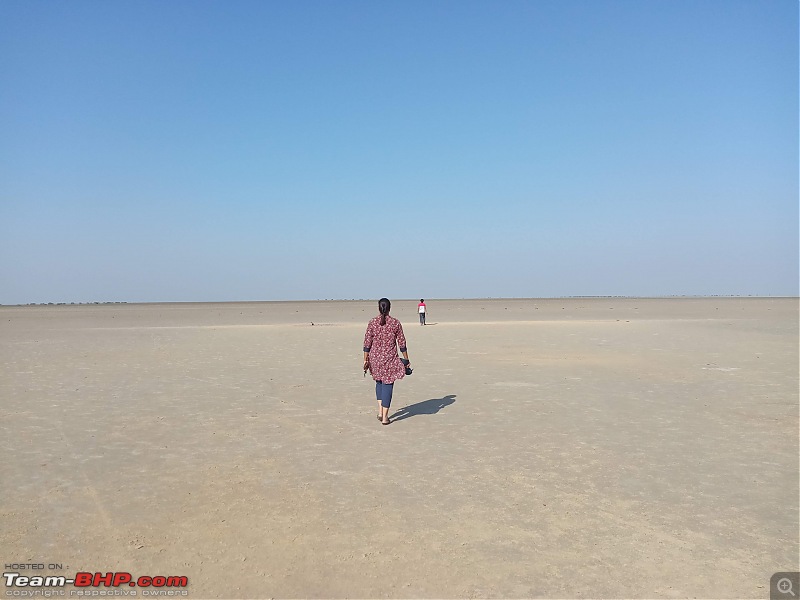 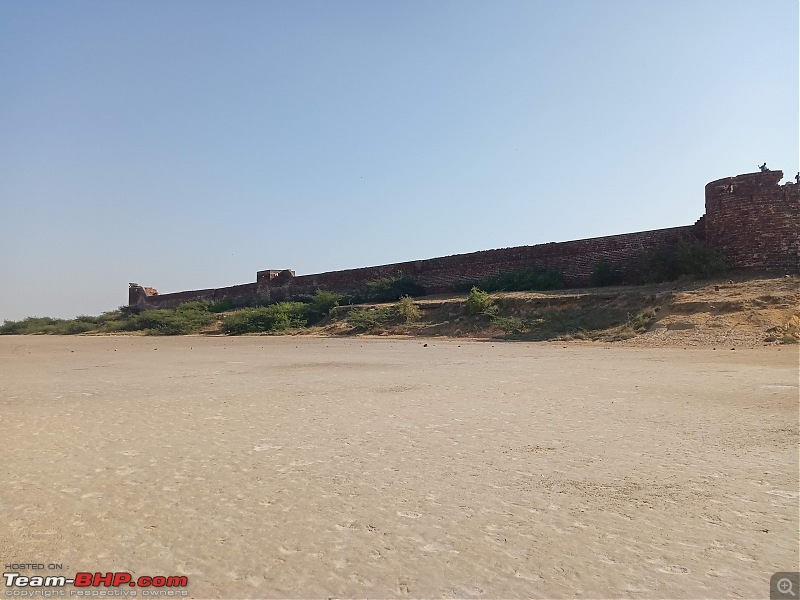 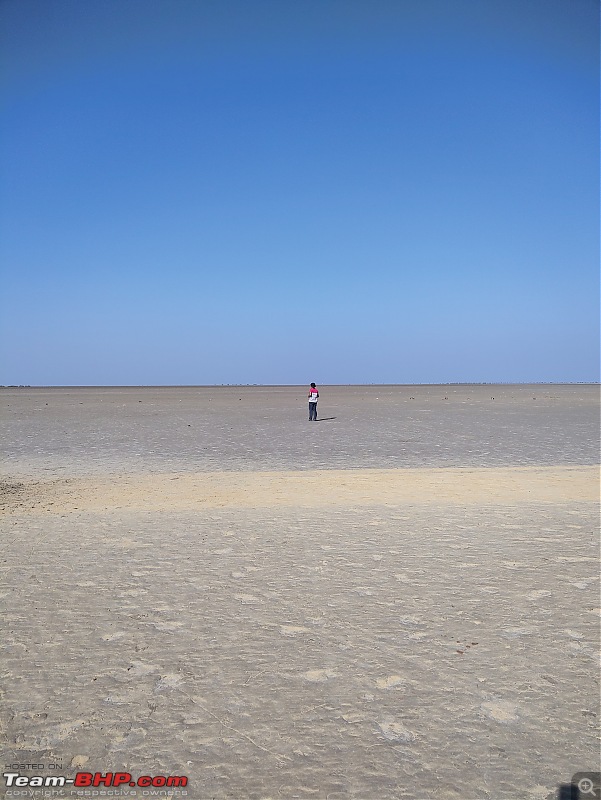 The Lakhpat flats had me a little dazed. But I looked forward to the lunch we were going to have at a little gurudwara just inside the entrance of the walled town. Inside the gurudwara were just two workers, who were warm and welcoming and invited us to eat at the langar. Dal, rice and some curry and rotis were served to us. We ate the hot food in complete silence, still contemplating the Lakhpat fort. It was yummy though, and I felt rejuvenated and ready to bounce after the meal. Actually, this place also has some historical significance - in a small prayer booth, a placard read that a very long time ago, Guru Nanak, the founder of Sikhism, had come to visit this gurudwara on his journey to Mecca. Our tummies satiated, we were now ready for our next destination of the day. The Westernmost Point of India Koteshwar, which is the Westernmost village of India, was just two or three hours away. There was another Hindu temple here. In the village, which was more like a bustling town, it was clear that the sea was close by. In the town, where the sea could be seen and heard, there was a market which sold only prayer paraphernalia (prayer beads, vermilion, diyas, the lot) for the locals, and mainly the tourists, who came to visit the temple. This was a normal temple with a few well-known deities. But it was special because it was at a vantage point, just overlooking the whole coast, checkpoint, and the crashing waves of the evening Arabian Sea from a cliff. After sitting on the edge of the temple, I let the breeze completely knot my hair as I looked down at the horizon where our so called 'enemy' nation, Pakistan, was. A different country, but with the same people, culture, faiths and beliefs lived, just a strip of water away. We drove down to the far end of Koteshwar, where there were many security cars and a security check post. Here I was, just at home a few days back, and now I was at the western tip of India. I could see the edge of land meeting water. Elderly women were going down to collect water from the Arabian sea, for some mysterious ritual and a few stray dogs were enjoying the view right at the edge. Although we couldn't go to the absolute end of the walkway jutting out into the vast sea, we were quite close. The mango-colored bindi of the son was once more floating down to douse itself in the water. At one point, there were no more people on the wharf, and for a few minutes I was the westernmost citizen in India! I have a very nice memory of sitting there with my family, and enjoying the gentle ocean sunset, where the water lulled everyone to peace. 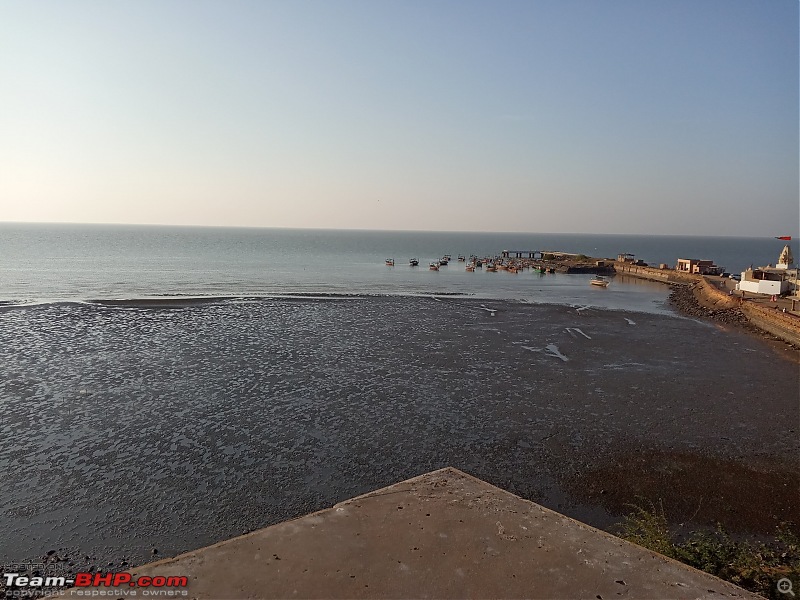 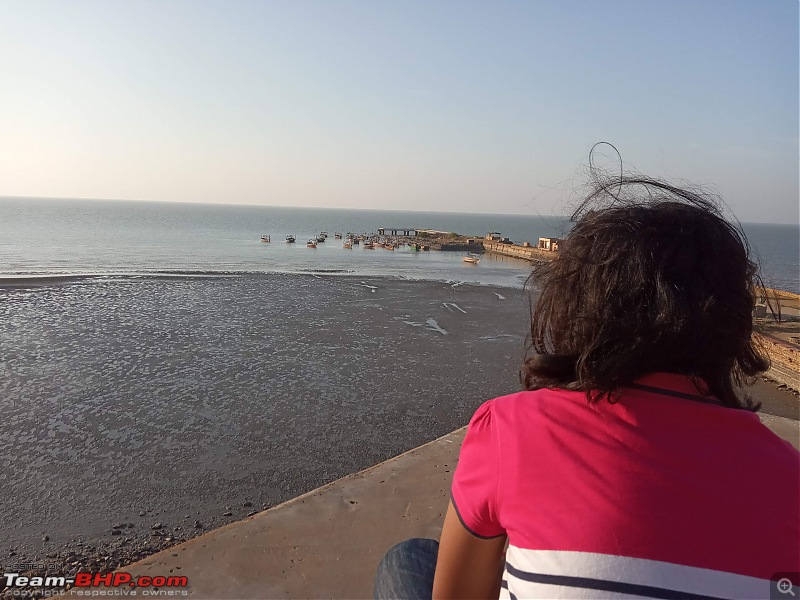 the imaginary border Happily munching on a sugary piece of prasad, I got into the car. The initial plan was to stay near Koteshwar itself, but the adults decided to drive to Mandvi, a seaside town at a distance from here. And so we drove to Mandvi and booked ourselves into a homestay. You will know more about it in a bit, as it is a bit special, but for now it'll suffice to tell you that after such a long day, I practically melted into sleep after my shower. See you tomorrow! Day 7 - Mandvi and the film star palace The town of Mandvi was pretty at night, with a charming retro vibe with its small shops and streetlights. Last night, I had a yummy Manchurian dish at a local restaurant which was recommended by our host, Mr. Vinod, since we had reached quite late. I had a shower with soothing hot water and hanged out on the balcony, which had wonderful, cushioned swing trying to read The Da Vinci code because it was too early to sleep. But in the end, I had to succumb, and a had a good night's sleep until I had to wake up early again. But first, let me tell you about the Rukmavati Guest House, our stay for the night. My dad found it on Airbnb. Mr Vinod, a nice gentleman and his wife run the place themselves, doing practically everything and he was the one who helped us park and gave us everything we needed. The room was spotless and there was a spacious balcony too. Unlike most other hotels, here there was were no compromises on the toiletries - there were whole bottles of soap and shampoo. How considerate! Just outside our door, in a larger balcony down the corridor, there were lounge chairs, benches, a couple of tables and chairs, swings, which I had never seen before. It was a really nice place to stay, for a very good price. 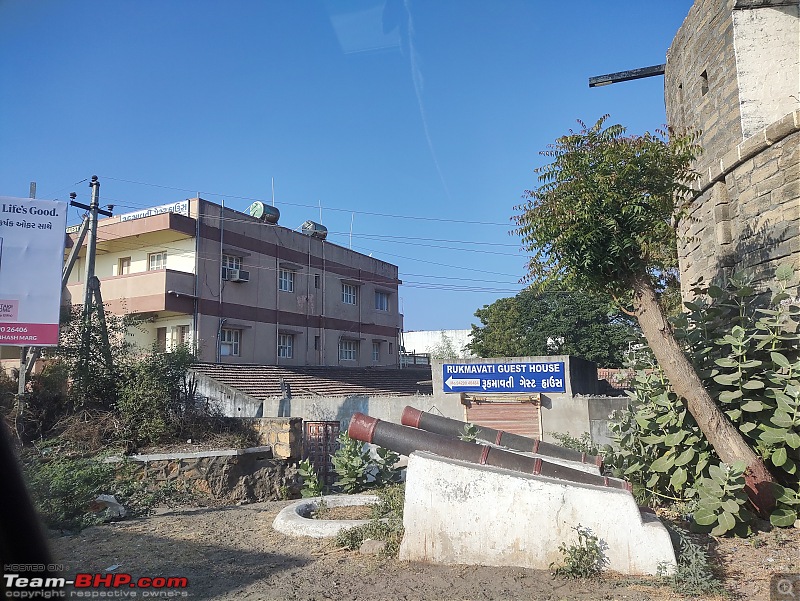 Rukmavati guest house, forgot to take pictures of the inside! Also, our Mr. Vinod sat my parents down and gave us a lot of information about the places to visit in Mandvi. He had made a one page guide on where to eat, where to shop for handicrafts, places to visit. He even gave us a map to all of those places mentioned, which he had made himself! Talk about hospitality. Like I said he and his wife ran the place on their own but cut no costs. We also saw a few foreigners staying here - the tariff would have been peanuts for them. Heck, if my mother bargained, we could live here for three months for half the price per night! We bade Mr. and Mrs. Vinod goodbye as we left in the morning, headed toward the Ravalpir Beach. Ravalpir Beach On the coast of the Gulf of Kutch, this beach was deserted when we got there. A few people were constructing some places to sit, and apart from that, the place was untouched. This was probably one of the cleanest beaches I have ever been to, maybe along with the Bheemli beach in Vizag. I left deep footmarks in the little yellow sand dunes as I headed toward the water. At that time of the day, the sea was a soft blue, and the waves were hemmed with a frothy white. Have you ever felt, that when the water recedes from your feet on a beach, it is you and not the wave that is sliding away? That always happens to me. The water was cool and nice, and at its shore I built a strong sand mountain, about a foot tall. It had a moat too! That was in the beginning of December, and the sun had awarded me a tan which looks like a sock on my leg to this day. A dozen cute little sea gulls were waddling about some distance away. It felt like I was alone with the sea and the sky, and for many moments it felt like I was not in India, but on the coast of Cuba, and on that faraway boat I was watching Hemingway's The Old Man and the Sea unfold. The salty wind thoroughly refreshed my soul as I wished my imaginary fisherman good luck. But sadly for me, I couldn't wait for Santiago to finish his journey and had to climb back to the car and dust my feet, Mother's orders. 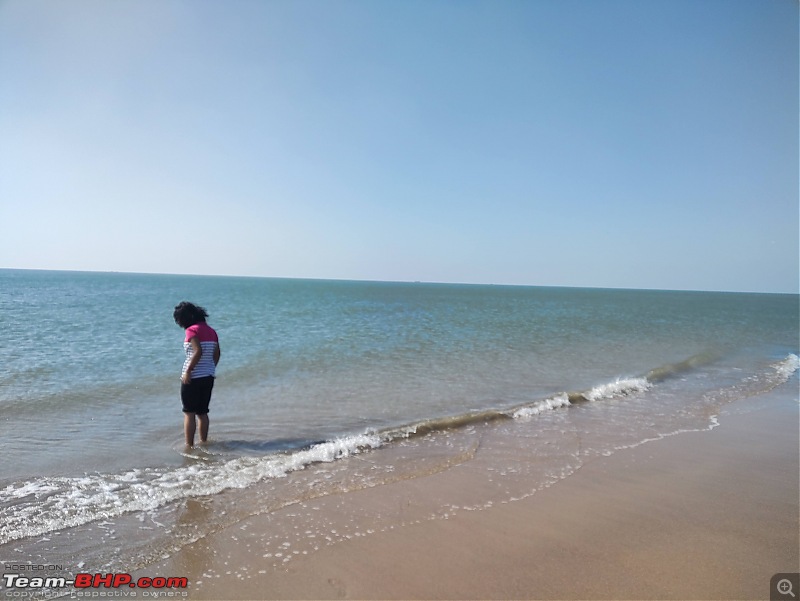 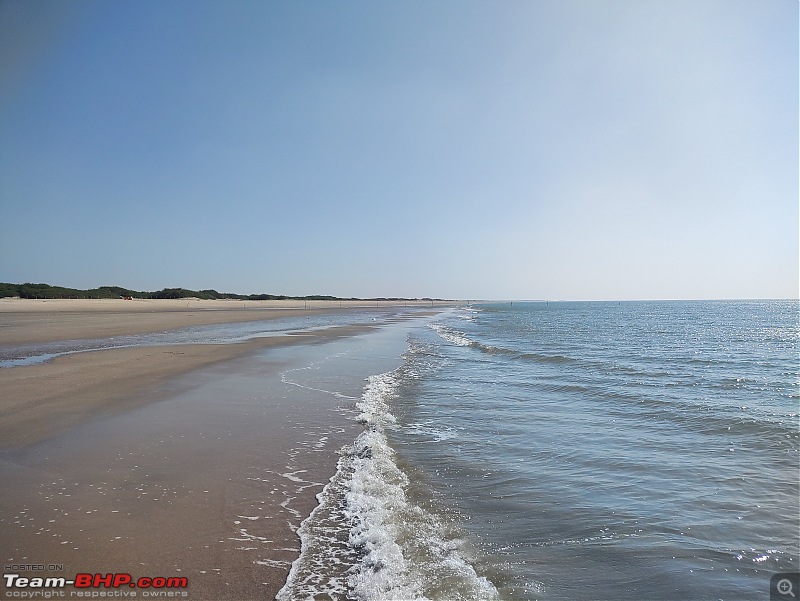 The Gulf of Kutch 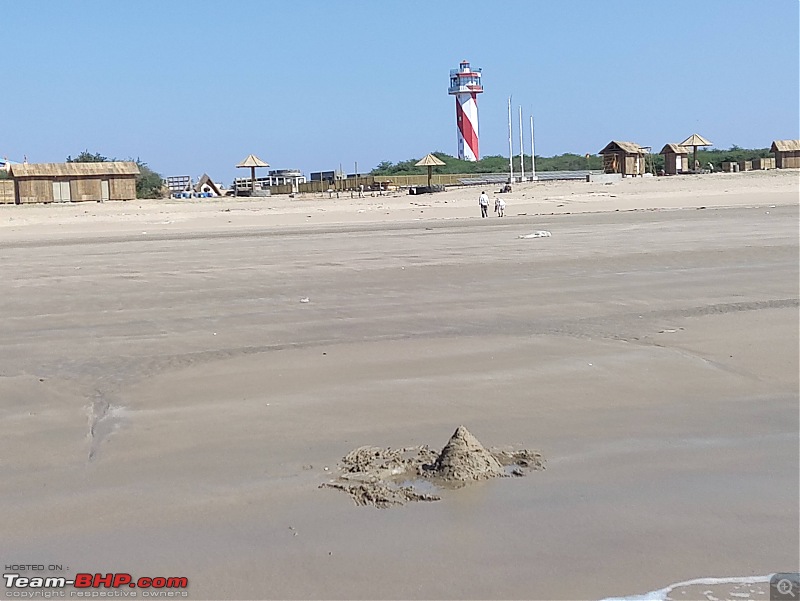 The lighthouse 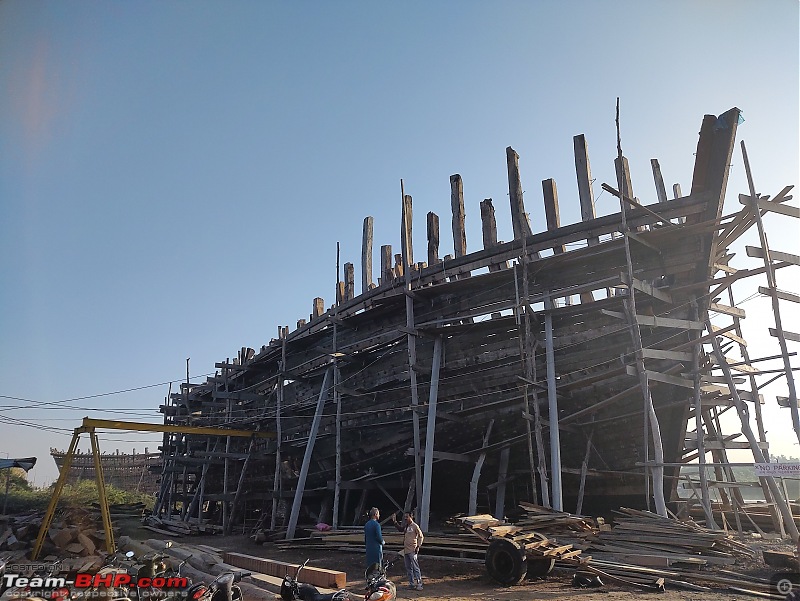 There was also a yard at Mandvi where they have been building wooden boats since medieval times. Each ship can take years to build. We got to climb up and around one which was being made! 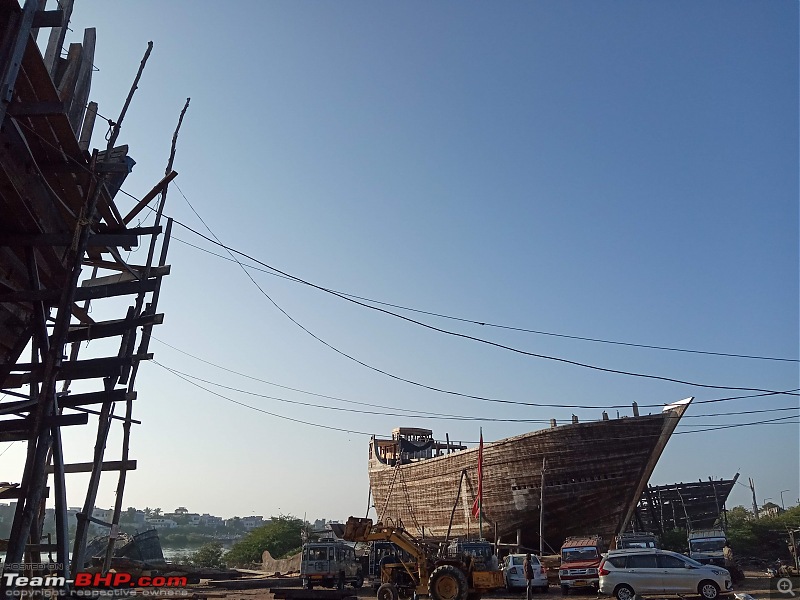 almost finished Next up was a scene from Hum Dil De Chuke Sanam. The Vijay Vilas Palace Some millennial Bollywood fans will recognize this place as the beautiful dancing grounds of Nandini (Aishwarya Rai) and Sameer (Salaman Khan) of the 1999 romantic musical of Hum Dil De Chuke Sanam, where the two stars flutter around with the Kutch night sky above them. This palace was in fact the summer palace of the prince of the princely state of Kutch, Yuvraj Shri Vijayaraji. His descendants still use it from time to time, but it is basically a historical monument. After independence, the princely states were not so princely anymore after India became a secular republic. The royal family was allowed to keep the palace with the property and have some pocket money from the government, and practically speaking they are now just very wealthy people. But the Vijay Villas Palace is a remarkable structure. Situated in the midst of forested land, it is the only building in sight as one approaches it. Pale brown columns, domed turrets, tinted glass, and a graceful, morose aura, the Vijay Villas palace is a beautiful structure. Tasteful arches, shapes and windows gave it a pleasing and elegant appearance. In the mid-morning sun, the glass reflected a dewy glow. Not too old, but not new either, I was already beginning to enjoy the place. 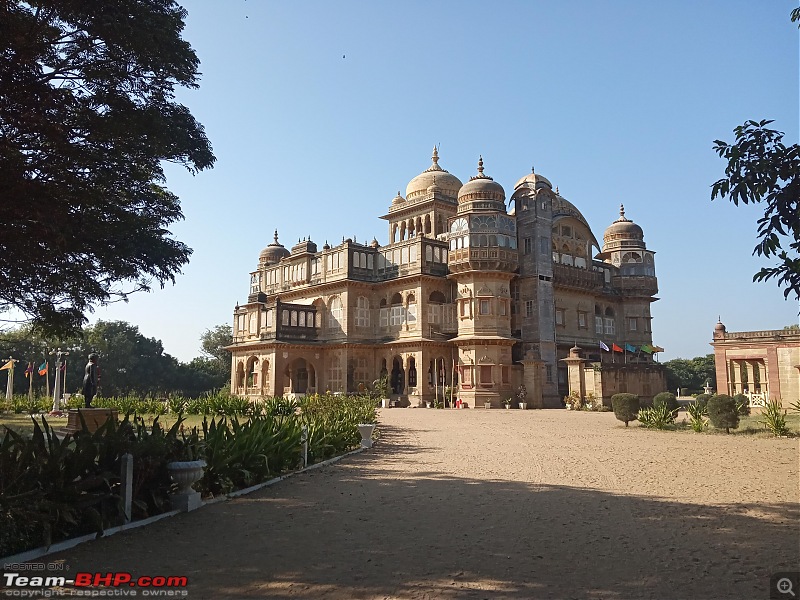 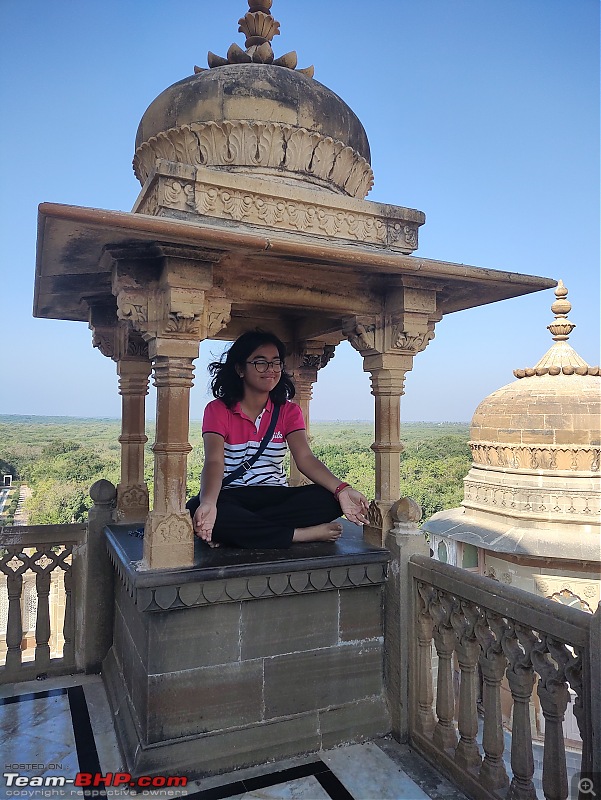 The inside of the palace had a quiet, luxurious, and vintage feel. Mellow lighting, delicate chandeliers, velvet furniture, and wooden framework. It was tasteful and not too opulent, but the wealth of the family was not only in the palace furniture. A Royal Bengal tiger, majestic even in death, was stuffed and cased in glass, stretched out in its full one and a half meters. This was my first sight of a wild big cat, and unfortunately for both of us, he was not alive. A mighty stag head was mounted on the living room wall, its glassed over eyes reminding me of the film Get Out. An occasional family picture of the ladies posing over a Lexus or a Chevy in the '90s, memories from the numerous film shootings that have happened here, and the hunting exploits of the aristocrats. Then we skipped the closed-off second floor and ascended the spiral staircase onto the roof. And boy was it a place to shoot a film! As the trees below stretched off to the horizon (with the mandatory wind that accompanies terraces, of course), we looked over everything except from the sky. It was beautiful. My mother went down memory lane and dreamt about those good 'ol days when she was a fan of Bollywood elbow smackers. God, will I ever understand her tastes and she mine. Day 8 - Baroda to Mumbai With Mandvi done and dusted, it was time to start winding back and my dad was planning to cover as much distance as possible that day before we stopped for the night. Time was in short supply and a quick detour to Mumbai looked dicey. We reached Baroda (I thought I would see the orange-colored bank everywhere) very late at night, and as usual the adults found a nice cozy hotel which served lip smacking food even at that ungodly hour. My dad was as usual planning away on his phone and he said depending on the highway traffic, he would take a call on our Mumbai detour. We managed to start early the next day as planned and during a tasty breakfast at a highway plaza near Surat, he gave the green signal - I was going to see Mumbai! It also made sense as would take a different route back and also see what the hype was all about driving on the Pune expressway. Moreover, this would be the first time I (and our car) visit Maximum city, not counting a very brief stay when I was the size of a Thanksgiving turkey. 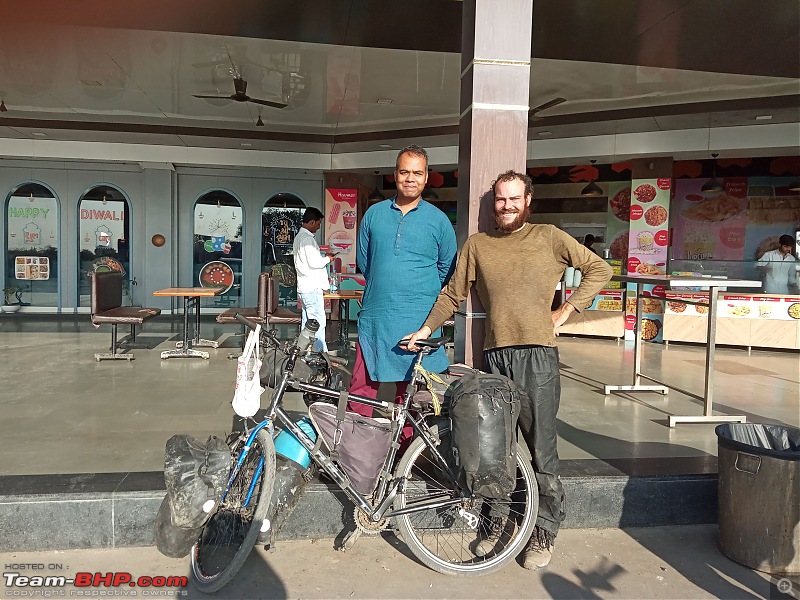 On the highway, we met Benjamin who is cycling the world. Bombay, Baby! We just reached the outskirts of the city at about five in the evening, and boy, the traffic! All of my dad's warnings were coming to life. It took an hour to cross about fifteen kilometers of highway. And my parents were saying this was nothing. But thanks to an overpass leading into the city, we could skip the traffic below us. Before this trip, we were watching a series called Mumbai Diaries. The fact that it was an excellent show made the flooding of 2005 and the terrorist shootings of 2008 feel even more real. I was looking forward to seeing this place! My dad never underestimates the value of a good parking spot. Which is why he checked beforehand on TeamBhp and Facebook if there was someplace safe we could park the car in a city like Mumbai where parking is a pain. There was this petrol pump called Karfule (pronounced 'car fuel') whose owner my dad contacted and the nice gentleman said that we could keep our car there for the day. Turns out, this petrol pump has a historical significance! It was built in the early 1900's by the owner's grandpa, and one look at it will take you back to the simple, standalone American petrol pumps from the movies. Leaving our luggage in the car, we went for a stroll in the city. It is actually nice, when it grew dark and all the houses lit up, and the chaiwallahs lit up their shops. The butterfly/peacock streetlights also lit up, the little neon figurines popping in sight at every streetcorner. The India Gate, the little kulfi vendors, and that heavenly milkshake I had at a sandwich shop. People of all kinds- street urchins, college goers, fashionable youth, and every second person in that area who was a lawyer. I was nearing the end of a week full of sleeping in our car, sightseeing, waking up early, and exciting adventure, and yet this place sucked the sleep away from me. After a bit of walking, we reached the Colaba market. Don't get me started on how amazing this place is. Here, there were hundreds and thousands of lovely clothes, shoes, jewelry, trinkets, people! This place reminded me of Gariahat, the 'chowk' of Calcutta. But this was on a different level. This was shopper's heaven. You don't need me to tell most of you that, though; many of you fellow petrolheads live in Mumbai! Me and my mother spent hours admiring and buying the stuff that was being sold. I also got a lot of fashion inspiration from the style divas that were strolling around. Cafe Mondegar This has to be one of the best restaurants I have been to, in respect of ambience and food. The sketches on the walls had me absorbed, and the pasta I ate was yummy. Don't worry, I didn't have any beer! After the lovely dinner, I was still not sleepy as we zoomed through the streets of Mumbai in a cab, and even at midnight the city was bustling. It was a novel experience, since in most of the big cities I have lived in, like Bangalore and Kolkata, people go to bed early. Our Airbnb was in a housing complex in Versova, and my parents spent half an hour navigating a group of four streets. All the while, when I kept reminding them that we had missed a turn, they listened to me with one ear and let it out the other, stuck in the same street again and again. Finally, I managed to convince them to park and one of them to accompany me back to the place we missed a turn, and finally they realized that I was right. So, dear readers, if you have a child in the back seat, save yourselves those thirty minutes by listening to him or her. Don't underestimate the power of back seaters. Our homestay was actually an apartment with the owners also staying there. The flat was large and we had a room, which was beautifully decorated. It was cosy, nicely done up it was lovely the way a home feels like. Day 9 - The last day of our trip! I had to transition quickly from dreamland to hurrying across the busy streets of Mumbai. The piercing sunlight made my head prickle. But there was no time to notice that; I admired the Gothic buildings with their darkened frames and the British forts. This was very different from the calm, morning beach of posh Juhu - the fort area was pulsing with energy as people hurried or idled their way to work. On the side walks people were setting up shops to sell their artwork. Little postcards of acrylic horses, oil portraits of beautiful villagers, little watercolors, you name it, and none of them were prints. Give me a chair and I could spend my day sitting and watching the wonderful things that happened on this street. 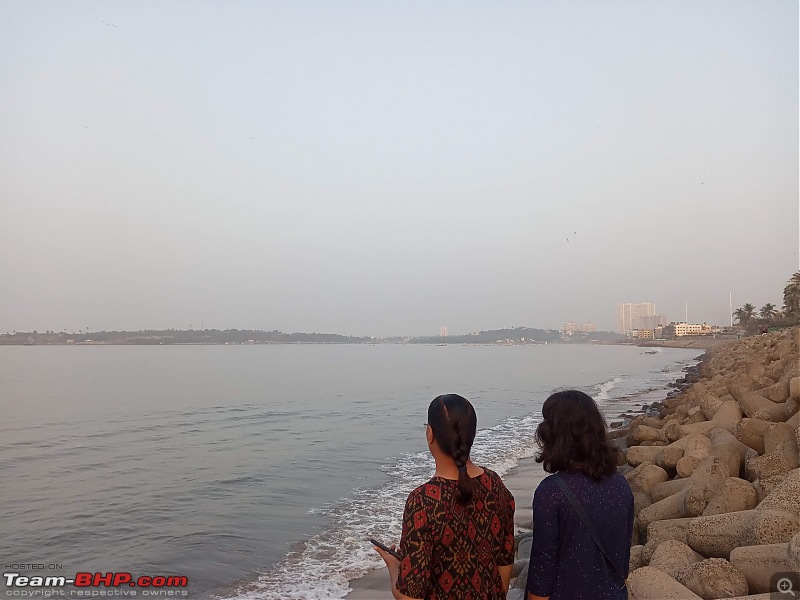 Versova beach 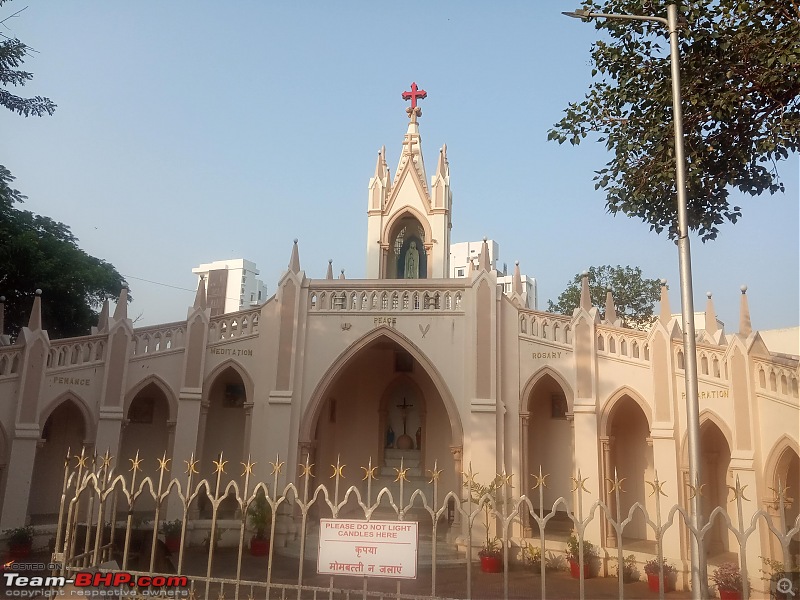 At Juhu 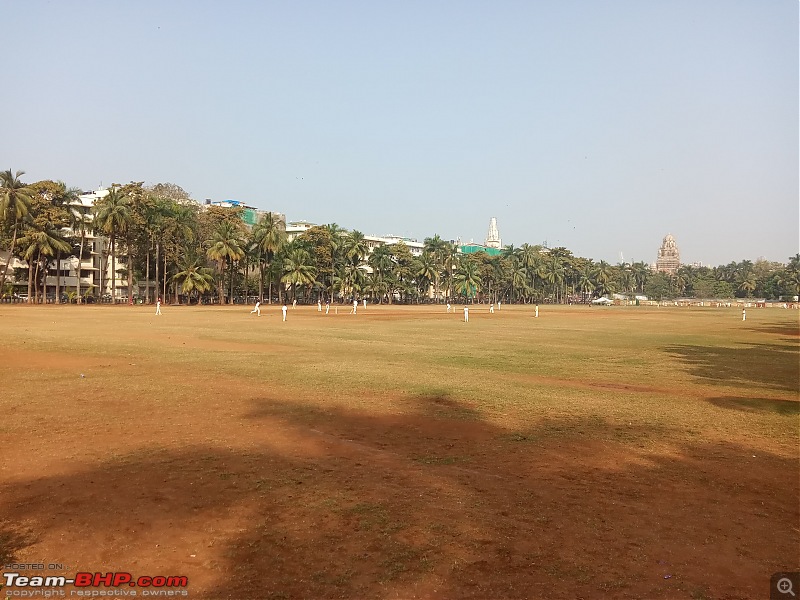 A cricket match in progress next to where we parked at Fort Nearby was the Jehangir and the Modern Arts museum. The Jehangir Museum had a collection of sketches and paintings which were made by about twelve artists, who probably changed every week or so. The collection mainly had pieces done by pen, expressing the struggles, pains and joys of life in Mumbai. But all and all, I felt the collection of artworks at the Jehangir Museum was a bit limited - not because of the number of pieces but the variety in them. Next up in the Modern Arts museum, the artworks consisted of weaves and saris made in the medieval period to complex abstract sculptures three months old. This place had so many exhibits, and so many things to look at that we couldn't finish in time. 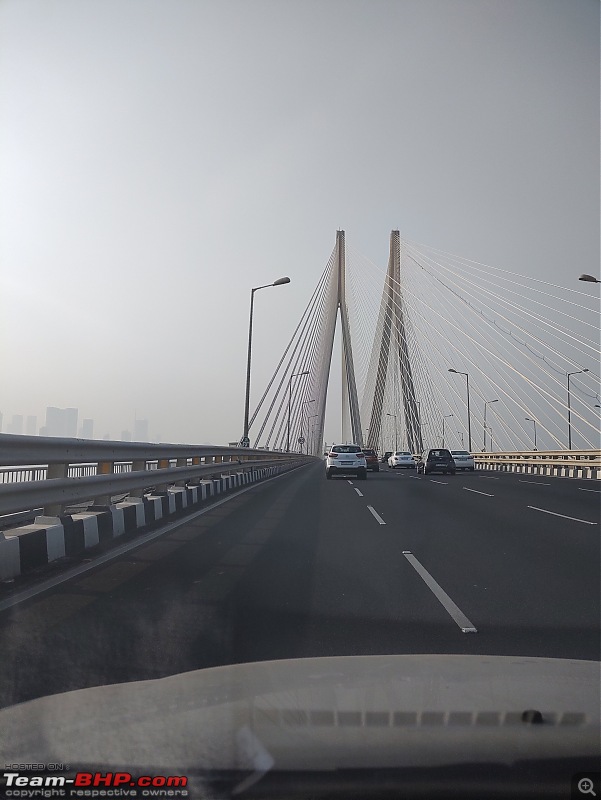 The sea link And this was the last place we visited on our trip. After a lunch at Mondegar's, we set out on the Bombay - Pune expressway, with an overnight stay near Pune. The next day, we reached Hyderabad. And that is it! I think that this is one of the best trips I have had. Within a week, I had experienced several different worlds, starting with Nashik's vineyards, the Kutchi desert, the coastline of Kutch and the great city of Mumbai. One was barren and deserted with no one in sight and another was buzzing with humanity. It was tough, and we had to rough it out a little, but we wouldn't have half a chance of experiencing such unique places if we don't give anything for it. Nothing's better than getting a taste of life from your little car, eh?  I hope you enjoyed my travelogue! I consider it a huge achievement if I got you to scroll through this elephant of an article. If you're feeling tired after reading this, imagine what a task it was for me to write and for my dad to edit and upload pictures, and most importantly, to push me to write this travelogue (there were some days when I wrote just one paragraph!). As for me, I got to relive this epic experience of my Gujarat trip! 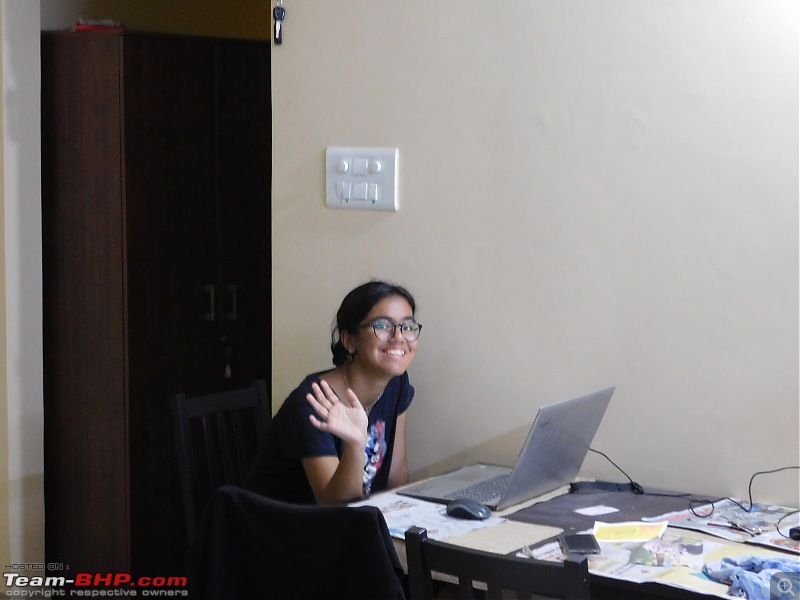 Ciao, amigos! Last edited by Aditya : 8th March 2024 at 18:44. Reason: Date errors corrected |
| |  (67)
Thanks (67)
Thanks
|
| The following 67 BHPians Thank joyee for this useful post: | .sushilkumar, ABHI_1512, abirnale, amit_purohit20, arun_josie, Axe77, BLACNWYTE, blahman, callvvijay, CEF_Beasts, CentreOfGravity, cogWheel, creative420, DasAuto1985, Deepsp, digitalnirvana, Dr.AD, Dr.Q, ex-innova-guy, Flying Chariot, FueledbyFury, GForceEnjoyer, GreenerPlanet, GTO, hothatchaway, itspatra, Jekyl87, JustStarted, kbnissan, Kkumar, MotorDev, mugen_pinaki27, Neel70, Nero, Neversaygbye, nishsingh, Omkar, One, parsh, PearlJam, PGNarain, PratikPatel, psispace, punchthebully, PurpleTitanium, Raghuwire, Rajjay, rendezvous3850, Rhinox~Cnu, Samfromindia, sanjayrozario, Sedate driver, Shubbi, SRISRI_90, subie_socal, supreeth_rs, sushanthys, TejasV, thirugata, Turbanator, urbanzameendar, Utopian, vdi, vishal.jayakuma, Vishal.R, Voodooblaster, W.S.T.R. |
| | #7 |
| Team-BHP Support  | re: Run to the Little Rann, Dholavira and Lakhpat; a journey back in time Thread moved out from the Assembly Line. Thanks for sharing! |
| |  (4)
Thanks (4)
Thanks
|
| The following 4 BHPians Thank Aditya for this useful post: | digitalnirvana, hothatchaway, joyee, MotorDev |
| | #8 |
| BHPian Join Date: Jun 2021 Location: Tuticorin
Posts: 41
Thanked: 103 Times
| Re: Run to the Little Rann, Dholavira and Lakhpat; a journey back in time Hats off to your patience. Appreciate your vigour to write such a lengthy travelogue. |
| |  (1)
Thanks (1)
Thanks
|
| The following BHPian Thanks Rajjay for this useful post: | joyee |
| | #9 |
| BHPian | Re: Run to the Little Rann, Dholavira and Lakhpat; a journey back in time I was thinking the 12 yr old in the headline to be the car, until I was surprised that the author was also one. You did a good job, kid  (I'm feeling old even though I'm not (I'm feeling old even though I'm not  ). ).Impressive that you painstakingly jotted down the details, recalling your memories and the hardest part, crafting the words to make one hooked to it. I hope we get to see more from the 12 yr old duo. Last edited by subie_socal : 8th March 2024 at 10:33. |
| |  (9)
Thanks (9)
Thanks
|
| The following 9 BHPians Thank subie_socal for this useful post: | amit_purohit20, digitalnirvana, Fuel Of Satan, hothatchaway, imprezzer, joyee, Kevinrevvz, MotorDev, Raghuwire |
| | #10 |
| BHPian Join Date: Feb 2023 Location: Bangalore
Posts: 363
Thanked: 4,138 Times
| Re: Run to the Little Rann, Dholavira and Lakhpat; a journey back in time Wow! This is incredibly impressive  . The number of pictures and the level of detail in this travelogue are amazing. And you're only 12 years old! . The number of pictures and the level of detail in this travelogue are amazing. And you're only 12 years old! |
| |  (3)
Thanks (3)
Thanks
|
| The following 3 BHPians Thank MotorDev for this useful post: | hothatchaway, joyee, Kevinrevvz |
| | #11 |
| BHPian Join Date: Jul 2010 Location: Bangalore
Posts: 580
Thanked: 743 Times
| Re: Run to the Little Rann, Dholavira and Lakhpat; a journey back in time I love the cliffhangers at the end of each post. An author in making perhaps. Wishing you thousand more travels. I used to be a salesman many moons ago in GJ and I've visited most of the cities mentioned here, but never looked beyond the business. Looking forward to more content from you. |
| |  (3)
Thanks (3)
Thanks
|
| The following 3 BHPians Thank creative420 for this useful post: | digitalnirvana, hothatchaway, joyee |
| |
| | #12 |
| Newbie Join Date: Oct 2022 Location: hyderabad
Posts: 16
Thanked: 32 Times
| Re: Run to the Little Rann, Dholavira and Lakhpat; a journey back in time Very well written. Archiving such memories on paper (literally) is a good habit. Keep it up. |
| |  (2)
Thanks (2)
Thanks
|
| The following 2 BHPians Thank rendezvous3850 for this useful post: | hothatchaway, joyee |
| | #13 |
| BHPian Join Date: Sep 2010 Location: Mumbai
Posts: 294
Thanked: 1,273 Times
| Re: Run to the Little Rann, Dholavira and Lakhpat; a journey back in time Thatís a formidable travelogue you have put together! I tip my hat to you young lady! Keep travelling & keep writing, for as long you travel, see new places, learn & experience new things, places & cultures, you will never have an uninteresting moment in your life. Also hats off to your parents for their parenting. |
| |  (2)
Thanks (2)
Thanks
|
| The following 2 BHPians Thank PratikPatel for this useful post: | hothatchaway, joyee |
| | #14 |
| BHPian Join Date: Feb 2013 Location: Bangalore
Posts: 381
Thanked: 1,980 Times
| Re: Run to the Little Rann, Dholavira and Lakhpat; a journey back in time What an amazing description of your journey.The writing was crisp and gripping. Keep blogging and hopefully look at it as a career option. |
| |  (3)
Thanks (3)
Thanks
|
| The following 3 BHPians Thank vijayols for this useful post: | hothatchaway, joyee, subie_socal |
| | #15 |
| BHPian Join Date: Apr 2021 Location: Mumbai
Posts: 249
Thanked: 1,301 Times
| Re: Run to the Little Rann, Dholavira and Lakhpat; a journey back in time |
| |  (3)
Thanks (3)
Thanks
|
| The following 3 BHPians Thank One for this useful post: | hothatchaway, joyee, subie_socal |
 |


